You are using an outdated browser. Please upgrade your browser to improve your experience.

Live fully in Vietnam
Vietnam opens its door widely to welcome visitors all around the world! Starting from 15th August 2023, Vietnam extends e-visa validity to 90 days and unilateral visa exemption will be valid in 45 days! We are more than happy to welcome you all here and admire our stunning landscapes, free your soul on white sandy beaches, experience our unique and beautiful culture and meet the people in the most friendly country. Particularly, to indulge in our scrumptious cuisine at Michelin rated restaurants or to join us in outstanding mega culture, music, sports and tourism events! Let’s live to the fullest in Vietnam!
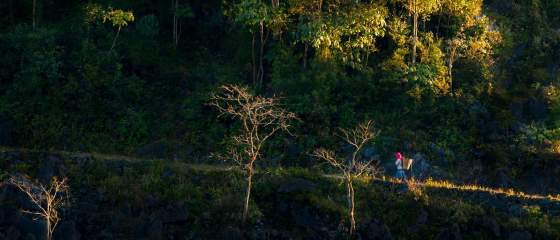
The Ha Giang Loop
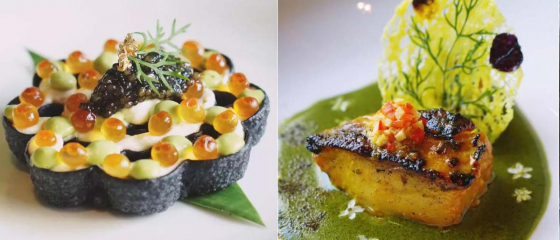
Food & Drinks
Discover one MICHELIN Star restaurants in Vietnam
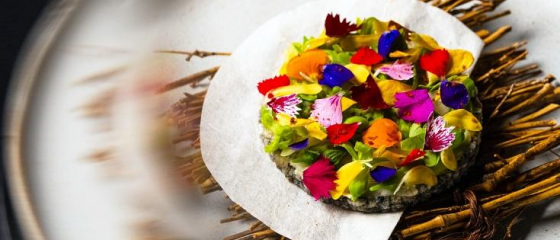
Nén Danang: Vietnam’s First Restaurant to Earn the MICHELIN Green Star
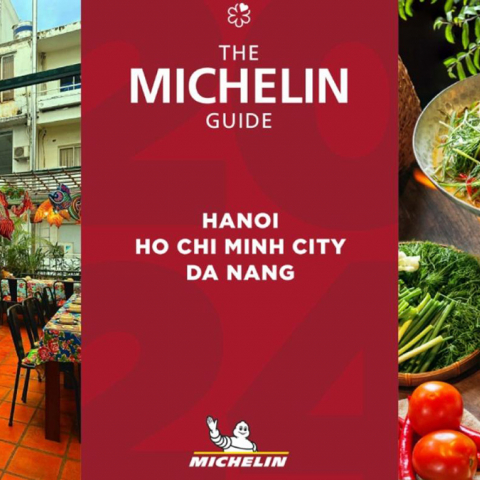
MICHELIN Guide Hanoi - Ho Chi Minh City - Da Nang: An official unveil
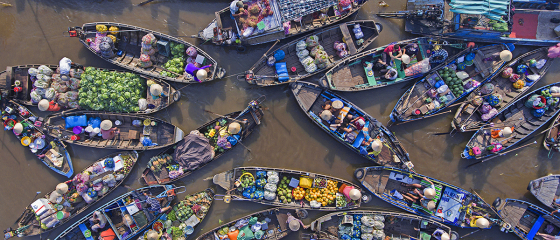
City Breaks
Can Tho: A glimpse of river and garden

Virtual travel to Trang An Landscape Complex
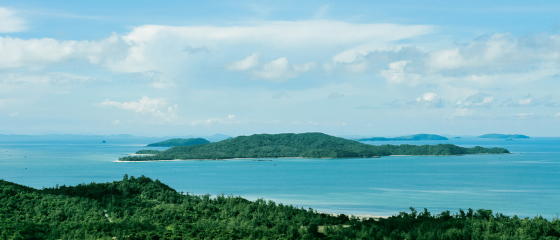
Go green in Co To
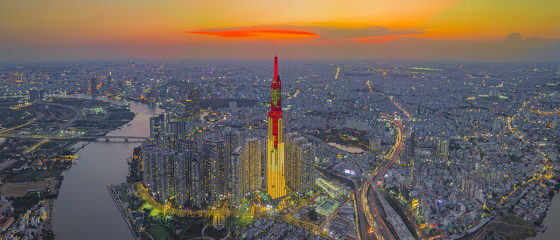
10 Tourist spots not to be missed in Ho Chi Minh City
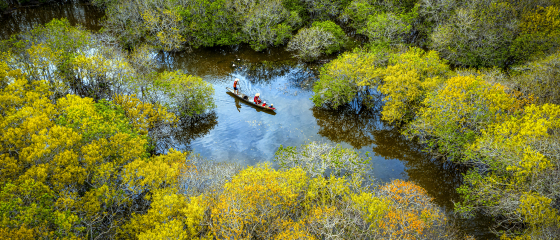
Ru Cha Mangrove Forest: A sleeping beauty of Hue
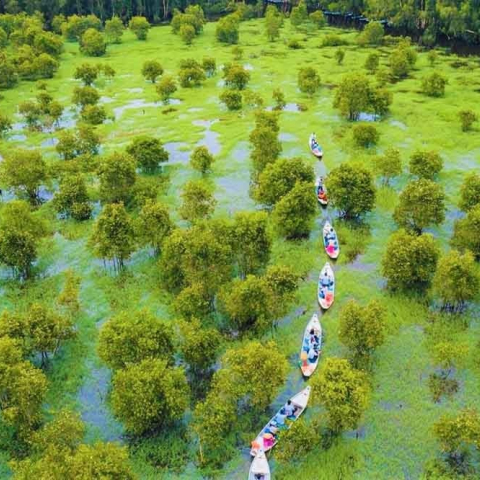
Lost in green wonderland in Tra Su Cajuput Forest
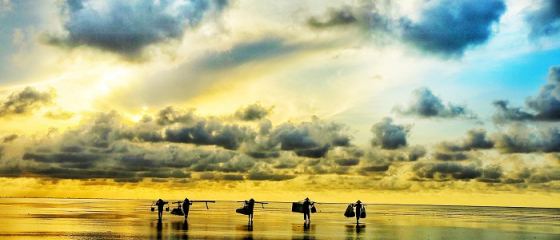
The infinity waters of Quang Lang Beach
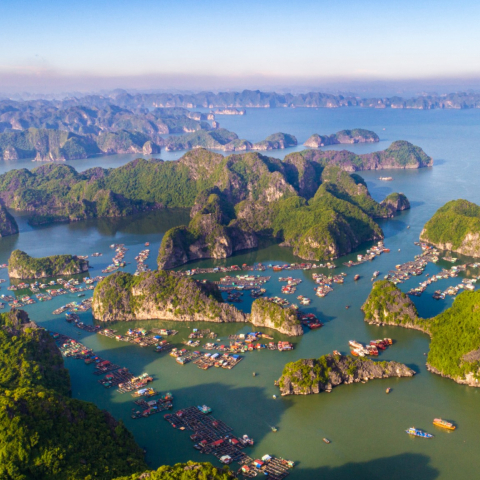
Halong Bay - Cat Ba inter-provincial World Heritage Site: Trending destination in Vietnam
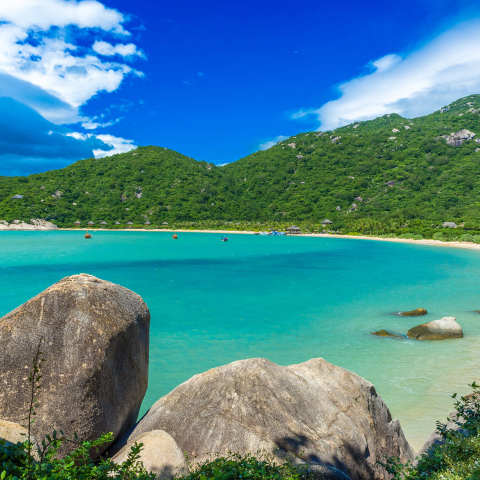
Nha Trang Best Beaches for a Sustainable Vacation
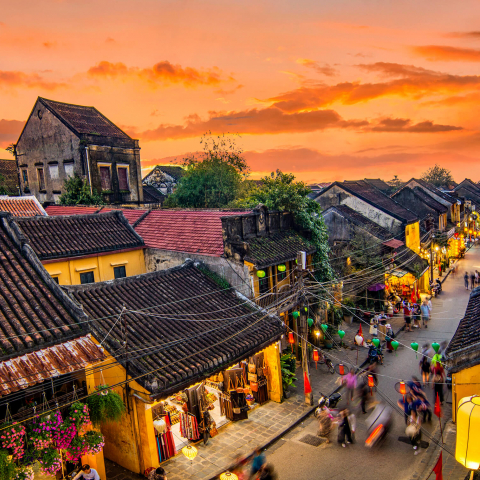
Explore the food of Hoi An
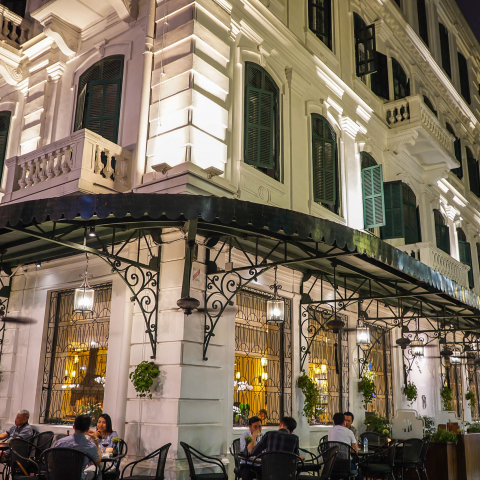
Comfort Meets Culture at Hanoi's Luxury Hotels
Check out upcoming events in Vietnam
must-see sites
Take a 360-degree tour of some of the country's most compelling natural wonders and cultural attractions right here.
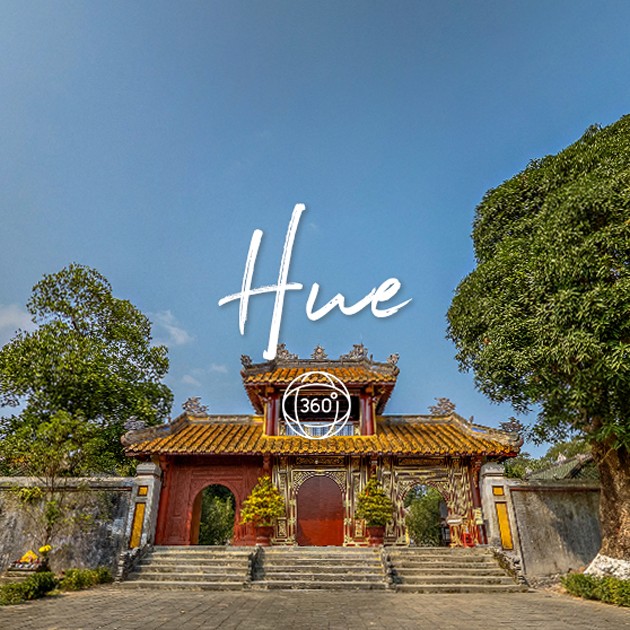
travel tips
Prepare for your trip with these practical articles

Vietnam through the lens of international news
Find out the reasons why Vietnam is worth to visit

TasteAtlas food rankings are based on the ratings of the TasteAtlas audience, with a series of mechanisms that recognize real users and that ignore bot, nationalist or local patriotic ratings, and give additional value to the ratings of users that the system recognizes as knowledgeable….
- TasteAtlas
Full article

Booking.com
Spring has finally arrived, bringing with it the perfect opportunity to venture out and explore the world.
- Booking.com

Travel Weekly
Visiting the South-East Asian country reminds Thompson Travel’s Sharon Thompson of the wonders of travel…
- Travel Weekly
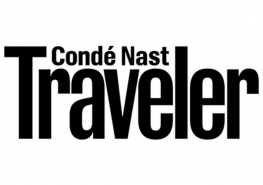
Conde Nast Traveler
To get you started on your next fairy tale adventure, we’ve rounded up 50 of the most beautiful small towns in the world.
- Conde Nast Traveler
share your story
Tag your best #LiveFullyinVietnam moments on Instagram
SHARE YOUR STORY
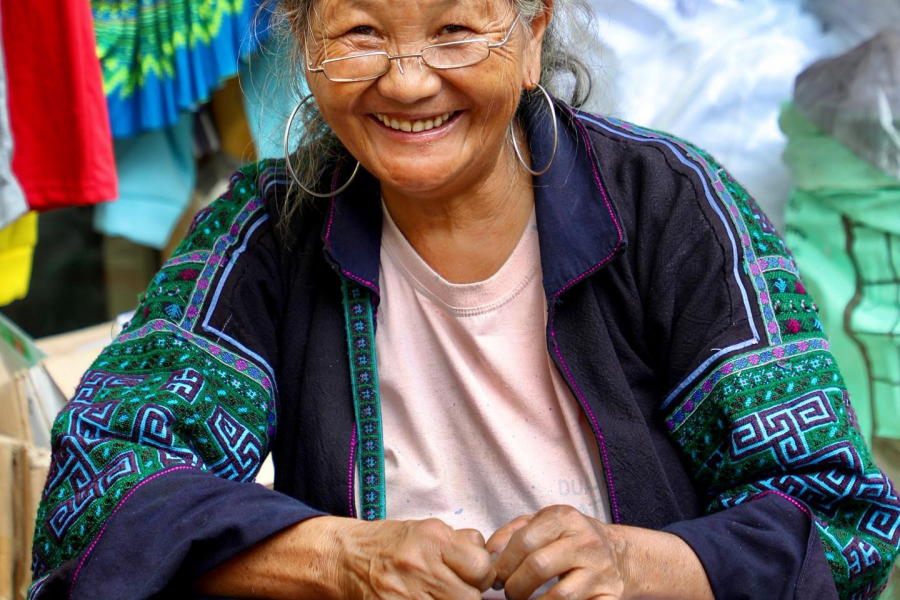
Create an account
Already have an account? Click here to sign in
By clicking submit, you agree to our Privacy Policy and Terms of Use
Sign in with your social accounts
Sign in with your email
Forgot password? Click here to get it back
Don't have an account? Sign up here
Forgot Password
The entered email has subscribed for Vietnam Tourism monthly newsletter
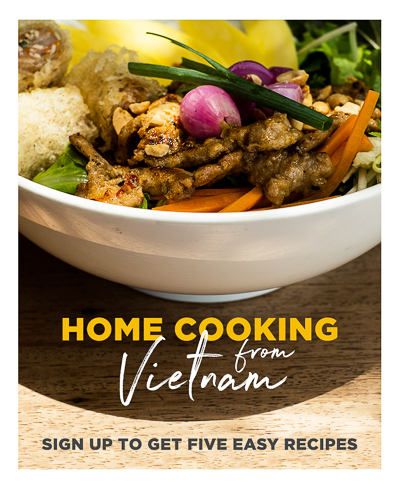
Vietnam Tours & Vacations

Vietnamese food is where it’s at.
Wherever we travel, it’s the flavors we remember best. A crusty bánh mì or streetside pho, seafood cù lao hotpots and (scarily addictive) coffee with condensed milk. Vietnam tours are tasty, plain and simple. We won’t just drop you in Halong Bay and call it a day. Our local leaders will introduce you to rice farmers in Sapa and fishermen on the Mekong Delta. They’ll guide you through the Cu Chi Tunnels, take you to the best beaches and on a street food crawl through Ho Chi Minh City. Our stomach’s rumbling already...
Our Vietnam trips
Let's create an exclusive trip for your group.
Vietnam tour reviews
Filter by rating
Premium Vietnam
Vietnam Express Southbound
Articles of Vietnam
Best places to travel in April
Best places to travel in January
5 affordable countries for thrifty travellers
From shoe shiner on the streets of Hanoi to co-CEO of the organisation that changed everything
Meet the Intrepid leader getting out there and giving back in Vietnam
Everything you need to know about a night (or two) on an overnight train
Three kinds of wow: Twitching in Vietnam
Time and place: Hanoi Old Quarter Market, 5 pm
We also travel to
Vietnam at a glance, capital city.
Approximately 98 million
(GMT+07:00) Bangkok, Hanoi, Jakarta
CALLING CODE
Electricity.
Type A (North American/Japanese 2-pin) Type C (European 2-pin)
Learn more about Vietnam
History and government, early history.
Vietnam has been inhabited since prehistoric times. Archaeological finds suggest that structured societies existed as early as the 1st millennium BC. Early society was mostly feudal and agriculture-based, with various dynasties overseeing different parts of Vietnam until the Chinese invasion of 111 BC, which saw the societies of Vietnam and China intertwined. Various Chinese dynasties dominated the area for hundreds of years, although revolts finally led to Vietnam gaining self-autonomy in 905. By 938, this period of Chinese imperial domination came to a close and Vietnam entered into an age of independence.
Recent history
During the 19th century, Vietnam came under the influence of French colonizers, who assumed control of Vietnam after the Sino-French War of 1884 and 1885. French Indochina was formed in 1887, and included parts of Vietnam, Cambodia and, later on, Laos. Although the French managed to suppress internal movements towards independence for many years, their control was finally relinquished in 1954 when Vietnamese forces overcame the French during the first Indochina War. Following this war, Vietnam was divided, with separate forces ruling the north (led by Ho Chi Minh) and the south (led by Ngo Dinh Diem, with support from the United States).
The second Indochina War created wide-scale devastation and turmoil for the people of Vietnam, leading to mass migration to other parts of the world as asylum seekers tried to escape the conflict. More recently, Vietnam has benefited from the free market economy set up in 1986. Vietnam's economy continues to expand, with agriculture and industry providing the backbone and the tourism sector also contributing. Although many Vietnamese people live below the poverty line, there have been widespread improvements in literacy and health, which hopefully will continue to improve.
Geography and environment
Occupying a long, thin part of the Indochinese peninsula, Vietnam shares borders with China , Laos and Cambodia . Much of Vietnam's terrain is mountainous, particularly the north and central highland regions. Although people still choose to live in the densely forested highland regions, most of Vietnam's population is concentrated in the cities of the low-lying areas, where infrastructure is more easily built and the land is fertile. One of the 12 great rivers of the world, the Mekong, runs through Vietnam and has been responsible for wide-scale flooding. A system of canals and levees has been quite successful in redistributing the water during monsoons, and has helped to alleviate flooding in the Mekong Delta and surrounding areas.
Vietnam has a nice mix of interesting markets and small shops, with handicrafts, art and clothing among the best picks.
It's a good idea to check with your local customs officials to ensure that you are able to bring certain items back into your home country. Australia and New Zealand generally have strict quarantine laws.
Things to buy in Vietnam
1. Tailored clothing
Hoi An is one of the best places in the world to get tailor-made clothing at a great price. Find a tailor, choose your fabric, get measured and return later to collect your custom-made fashion.
2. Hilltribe handicrafts
Some of Vietnam's hilltribe people make excellent woven bags, clothing and jewelry which make meaningful souvenirs for friends back home.
As one of the world's largest coffee exporters, Vietnamese coffee is among the world's best. If you’re a coffee fan, why not take a little taste of Vietnam home with you.
4. Lacquerware
The time-consuming, intensive process of creating Vietnamese lacquer art results in a beautiful, smooth and polished finish that adorns everything from bowls to paintings and jewelry boxes. While not the cheapest of souvenirs, authentic lacquer art is worth spending a bit more on.
Festivals and events
The major festivals celebrated in Vietnam are Tết, Reunification Day, National Day and Tet Trung Thu.
Read more about festivals in Vietnam
Public holidays that may impact travel include:
Public holidays celebrated in Vietnam include:
Tết (Vietnamese New Year)
Gio to Hung Vuong Day
Reunification Day
National Day
Please note dates of Vietnam's public holidays may vary.
Culture and customs
Vietnam's ancient culture can be traced back centuries and over the years has been influenced in different ways by the Chinese, Khmer, French and American cultures. For most Vietnamese people, connection to family and community is paramount - whether they are from rural villages or living in fast-paced cities.
Most festivals and holidays are spent with the extended family - participating in rituals, feasting on special foods, giving symbolic gifts and paying respects to ancestors. Most Vietnamese people practice a form of religion that is an interesting mix of Buddhism, Confucianism and Taoism, although there are also a large number of practising Catholics living in Vietnam.
Having endured the hardship that the Vietnam War brought in the 1960s and 1970s, most Vietnamese people are keen to get on with life, living with a sense of optimism and humility.
Top 10 iconic landscapes of Vietnam
1. hạlong bay.
There's nothing quite like Halong Bay first thing in the morning. As the mists clear, hundreds of huge karst towers appear, looming high above the boat. In the soft morning light, it's like waking up in a watercolor painting of a mythical land.
Jam-packed with imperial sites, Hue is one for the history buffs. Explore the Citadel with its ruined Forbidden Purple City before embracing your inner emperor and taking a dragon boat cruise down the Perfume River.
3. Ho Chi Minh City
Still known as Saigon to most, HCMC is a city on the go. It's fast-paced, exciting and full of amazing sites. Temples and markets collide with churches and skyscrapers for a heady mix of traditional, colonial and modern.
Motorbikes piled high with people, produce and even animals zip through the streets. It's crazy and haphazard and somehow it works. The best way to take it all in is from a rooftop cafe. Order an extra strong coffee and watch the chaos unfold below.
This shoppers' paradise is home to more boot makers, tailors and handicrafts than you could visit in a lifetime. While you wait for your suit to be made, hire a bicycle and explore the Old Town - the streets are blissfully car-free.
Head to the hills and see the colorful villages of Vietnam's minority groups - the Zay, and the Blue and Black H'mong. The area is remote so the best way to experience it is on an overnight trek, spending the night as a guest of a local family.
7. Mekong Delta
This massive area of floating markets, emerald rice paddies and lush islands is home to some of the friendliest people on earth. Take a boat trip to one of the sleepy islands to get a front-row view of life on the Delta, and meet the people who call it home.
Further reading
Vietnam travel faqs, do i need a visa to travel to vietnam.
Most nationalities are required to obtain a tourist visa in advance to travel to Vietnam. When obtaining your visa you should allow 3 weeks for processing with your nearest embassy or consulate. The cost is approximately US$60 to US$100. Please check with your embassy or consulate for further requirements.
Some nationalities are exempt from visas for a stay of a maximum of 15 days, including British, German, French, Spanish and Italian citizens traveling to Vietnam (for all purposes). This exemption is based upon meeting all conditions prescribed by Vietnamese laws. If you are planning on staying in Vietnam for longer than 15 days you will need to obtain a visa extension in advance (please contact your relevant Consulate or Embassy). Please also check the requirements if you plan to re-enter Vietnam.
An e-Visa is available for some nationalities including passport holders from Australia, France, Ireland, Italy, Canada and the United States of America, valid for a single entry of a maximum of 30-day stay in Vietnam. Learn more about the eVisa on the immigration website .
E-Visas take up to 3 days to be processed. You will need a clear electronic copy of your passport data page and passport photo, and to make a non-refundable payment as outlined on the immigration website. Important information Keep the customs and immigration form you receive on arrival, as you need it to complete exit formalities on departure.
If you're traveling with us and your visa application asks for a point of contact, please write: Intrepid Vietnam 5th floor HiPT Building, 152 Thuy Khue Street, Thuy Khue, Tay Ho, Hanoi, Ph +84 4 3715 0996.
Most nationalities do not require a letter of invitation for Vietnam but if you do need one, please contact your sales agent for more information.
The page is for general information only and may be subject to change. It is your responsibility to obtain the relevant visa and travel information required for entry, departure and travel to each country or region you visit on your trip. You should confirm these with the relevant embassies and/or consulates.
Last updated: 31 July 2023
Is tipping customary in Vietnam?
Tipping isn't mandatory or customary in Vietnam, but a tip of spare change or another small amount would be appreciated by restaurants, drivers and other service workers, especially if the service has been particularly good.
What is the internet access like in Vietnam?
Internet access is widely available in tourist areas and big cities, which have many internet cafes. Internet access is less frequent in rural and remote areas.
Can I use my mobile phone while in Vietnam?
You'll be able to use your mobile phone in most urban areas of Vietnam, although remote and mountainous areas may not have network coverage. Ensure you have global roaming activated with your mobile carrier before you leave home if you wish to use your mobile while in Vietnam.
What are the toilets like in Vietnam?
You'll have to adjust to different standards of hygiene and sanitation while in Vietnam. The standard toilet is of the squat variety and this may take some getting used to, although western-style toilets can be found in large hotels and some tourist areas.
Can I drink the tap water in Vietnam?
It is generally not safe to drink the tap water in Vietnam. For environmental reasons, try to avoid buying bottled water. Fill a reusable water bottle or canteen with filtered water instead. Ask your leader where filtered water can be found; some hotels we stay in may have drinking water available. It's also advisable to avoid ice in drinks and peel fruit and vegetables before eating.
Are credit cards accepted widely in Vietnam?
Major credit cards are widely accepted by large shops, hotels and restaurants in Vietnam. However, they may not be accepted by smaller vendors such as small family restaurants, market stalls or in remote towns and rural areas. Make sure you carry enough cash for purchases, since credit cards aren't always an option everywhere in Vietnam.
What is ATM access like in Vietnam?
ATMs are found widely throughout Vietnam, so withdrawing cash shouldn't be problematic in most areas. Some smaller villages and rural areas may not have ATM access, so prepare for this before venturing too far from a city or major town.
Do I need to purchase travel insurance before traveling?
Absolutely. All passengers traveling with Intrepid are required to purchase travel insurance before the start of their trip. Your travel insurance details will be recorded by your leader on the first day of the trip. Due to the varying nature, availability and cost of health care around the world, travel insurance is very much an essential and necessary part of every journey.
For more information on insurance, please go to: Travel Insurance
When is the best time to visit Vietnam?
The most popular times to visit Vietnam are spring (February-April) and fall (September-December) but because of the huge variations in latitude and altitude, there is no one best time to go to Vietnam. It’s a good destination all year.
What's the weather like in Vietnam?
Vietnam has an incredibly diverse tropical climate, and temperatures vary from 39°F in Sapa in winter to humid 97°F days in Saigon in the middle of the dry season. The monsoons bring heavy rain to the south, and a cooler winter to the north depending on when you plan to tour Vietnam.
What are the best things to eat in Vietnam?
Traditional Vietnamese food is typified by its use of fresh herbs and vegetables and its wide regional variance. Vietnamese food is influenced by its Chinese and Khmer neighbors and echoes French colonization. Some of the best things to eat in Vietnam are noodle soups (pho, bun mam, bun bo hue), bread rolls (banh mi), savory pancakes (banh xeo) and fresh tropical fruits.
What are the best things to drink in Vietnam?
Our list of best things to drink in Vietnam includes ice coffee, fruit smoothies, fresh coconut juice straight from a freshly cracked green coconut, sugar cane juice, local beers and artisan rice wine.
What to wear in Vietnam?
While the tropical climate lends itself to layered, breathable clothing all year round, if you are taking a tour in the North, cold winters mean you might need to bring a fleece or jacket.
What kinds of transport will I be using in Vietnam?
Intrepid believes half the fun of experiencing a new country is getting there, and getting around once there! Where possible, Intrepid uses local transport options and traditional modes of transport - which usually carry less of an environmental impact, support small local operators and are heaps more fun. Depending on which trip you're on while in Vietnam, you may find yourself traveling by:
- Overnight sleeper train
Traveling aboard an overnight sleeper train is a fun way to journey through Vietnam. Interact with other passengers or sit by a window and watch the world go by.
Curious? Click here read more about what to expect on an overnight train.
Take time to wave to locals as you cycle at a leisurely pace past rice paddies and through simple villages in rural Vietnam
These 3 wheeled vehicles are a great way to zip around the sights.
What kinds of accommodation will I have in Vietnam?
Traveling with Intrepid is a little bit different. We endeavor to provide travelers with an authentic experience to remember, so we try to keep accommodation as unique and traditional as possible. When traveling with us in Vietnam you may find yourself staying in a:
- Overnight boat
Sleeping aboard a boat on Halong Bay is a quintessential Vietnamese experience to be savored. Slip into relaxation mode as you take in stunning views of the surrounding limestone karst scenery.
Get acquainted with the Vietnamese way of life while on a memorable home stay. Be exposed to new languages, cuisine and customs while making friends with your hosts and neighbors.
Is Vietnam a LGBTQIA+ friendly destination?
The LGBQTIA+ community is gradually gaining recognition in Vietnam, with gay pride parades becoming a regular occurrence and a lift on same-sex marriage bans in 2015. With that said, Vietnam is still a conservative culture and many still hide their sexuality from their families. Ho Chi Minh City and Hanoi have some gay-friendly bars and events. It's generally recommended that both gay and straight couples resist showing public displays of affection.
For more detailed and up-to-date advice, we recommend visiting Equaldex or ILGA before you travel.
Does my trip to Vietnam support The Intrepid Foundation?
Yes, all Intrepid trips support the Intrepid Foundation. In fact, we make a donation on behalf of every traveler. Trips to Vietnam directly support our foundation partners, Blue Dragon Children's Foundation, Vun Art and WildAct.
Intrepid will double the impact by dollar-matching all post-trip donations made to The Intrepid Foundation.
Blue Dragon Children's Foundation Blue Dragon Children's Foundation is helping disadvantaged youth in Vietnam, fighting the causes of human trafficking and (where possible) reuniting homeless or trafficked children with their families. Donations from our trips help their team of social workers, psychologists, teachers, and lawyers to offer individualized support to every child rescued.
Find out more or make a donation
Vun Art Vun Art empowers people with disabilities in Vietnam through vocational training and employment opportunities. They teach traditional folk painting using recycled materials which provides job opportunities, helps to preserve the ancient artform and cares for the local environment all at once. Donations from our trips support Vun Art's capacity-building programs for people with disabilities, including trainees' allowance, transportation, and equipment.
WildAct protects migratory birds of Vietnam and reduces illegal hunting by educating local communities about the importance of conservation. Donations from our trips help WildAct run educational programs to stop the illegal hunting of threatened migratory birds through knowledge-sharing in local communities.
Is Vietnam accessible for travellers with disabilities?
Intrepid is committed to making travel widely accessible , regardless of ability or disability. That’s why we do our best to help as many people see the world as possible, regardless of any physical or mental limitations they might have. We’re always happy to talk to travelers with disabilities and see if we can help guide them towards the most suitable itinerary for their needs and where possible, make reasonable adjustments to our itineraries.
Despite having a high population of people with disabilities, accessible infrastructure and facilities are still limited in Vietnam. Chaotic traffic and pavements blocked by parked motorbikes and street stalls, uneven footpaths and high curbs add to the challenges of getting around for travelers with mobility or vision disabilities. Most entrances to hotels, shops, restaurants and tourist sites will have steps and many doorways will not be able to accommodate wheelchairs wider than 60cm. Some sights and destinations will not be fully accessible (ie. Ha Long Bay boats, Cu Chi Tunnels) but other places such as Hoi An are flat and much more wheelchair-friendly. There are likely to be situations where travelers with disabilities may need to rely on local people to help. Taxis are readily available and an affordable way to get around for travelers who are not confident in exploring independently on foot.
How do I stay safe and healthy while traveling?
From Australia?
Go to: Smart Traveller
From Canada?
Go to: Canada Travel Information
From the UK?
Go to: UK Foreign Travel Advice
From New Zealand?
Go to: Safe Travel
From the US?
Go to: US Department of State
The World Health Organisation also provides useful health information.
What is it like traveling on a small group tour?
Whether you’re a seasoned traveler or you’re about to embark on your first trip, traveling can be as intimidating as it is exciting. That's the beauty of a small group tour. From handling the logistics and organizing amazing cultural activities to local leaders who know each destination like the back of their hand (like which street has the best markets and where to get the most authentic food), traveling on a small group tour with Intrepid will give you unforgettable travel experiences without the hassle that comes with exploring a new place. Plus, you'll have ready-made friends to share the journey with. All you have to do is turn up with a healthy sense of adventure and we’ll take care of the rest.

- Volunteer Abroad
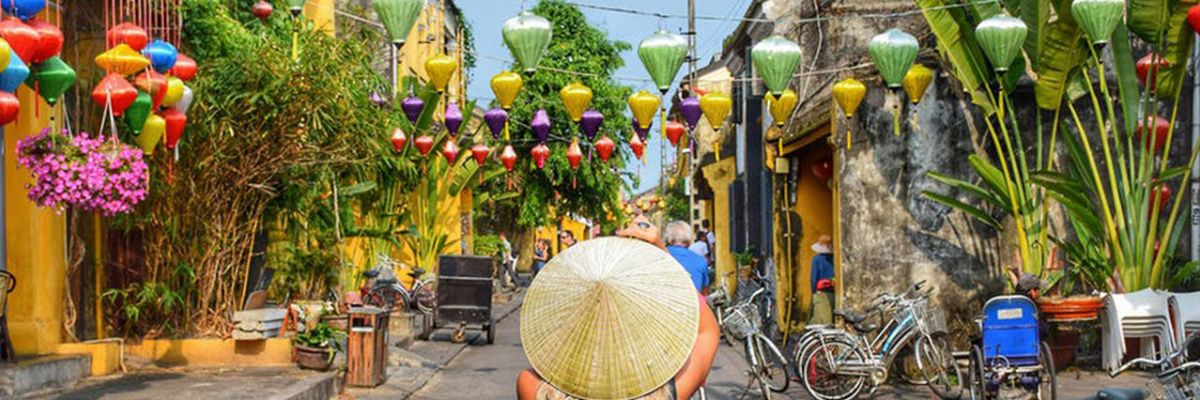
10 of the Best Volunteer Opportunities in Vietnam

Jessica grew up in California, where she learned to love the beach and sunny weather...and then s...
- Southeast Asia
- button]:border-none [&>button]:bg-white [&>button]:hover:cursor-pointer [&>button]:hover:text-cyan-400"> button]:hover:text-cyan-400 [&>button]:bg-white hover:cursor-pointer" height="1em" width="1em" xmlns="http://www.w3.org/2000/svg">
These volunteer opportunities in Vietnam don’t dare disappoint! Now is the perfect time for volunteering in Asia, and you should definitely consider volunteering in the gorgeous country of Vietnam! Vietnam has something for everyone, from its towering mountains and lush tropical forests to its breathtaking lakes and incredible beaches. The cuisine is exquisite—try papaya salads, the popular meat and noodle soup, Pho, or even some spicy spring rolls! English is fairly widely spoken, and you won’t break the bank when you volunteer here.
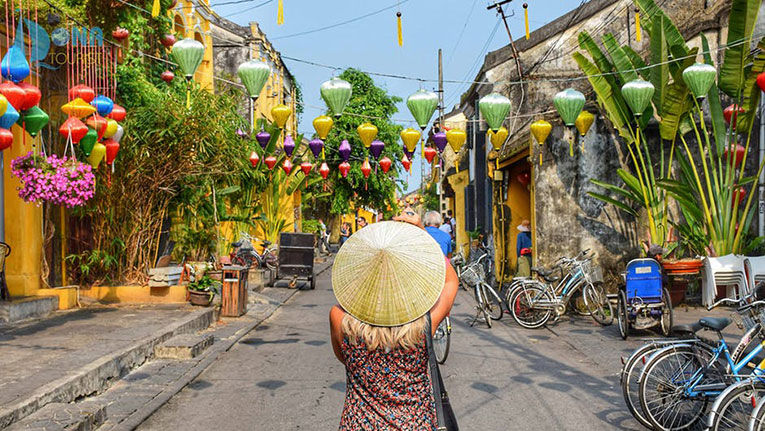
Vietnam volunteer programs are your next adventure.
These are all great reasons to volunteer in Vietnam but the amazing range of volunteer projects in Vietnam is another excellent reason! Read on to learn about some of our favorite programs.
- Food Outreach Program with Volunteer HQ
- Medical Volunteer Program by Volunteering Solutions
- Volunteer & Travel with Love Volunteers in Vietnam
- Women’s Shelter Volunteer Program with ELI Abroad
- Volunteer Teaching English with Projects Abroad
- Community Volunteering and Teaching in Southern Vietnam with Kaya Responsible Travel
- Community Involvement Volunteering with GoEco
- Volunteer in Friendship Village with Volunteer World
- Build Houses in Vietnam with Putney Student Travel
- Buds to Blossoms Pediatric Massage Volunteer Program: Vietnam
The best programs for volunteering in Vietnam this year
Editor’s note: This information on programs to volunteer in Vietnam was accurate at the time of publishing. Please refer to each individual program for current data.

1. Food Outreach Program with Volunteer HQ —9.67 rating
“This was my first volunteer abroad trip, and I found my IVHQ experience in Vietnam to be a life-changing one. Experiencing the culture in Ho Chi Minh for the first time was extremely eye-opening—there was an initial culture shock, however after a few days I came to love how the city just functioned in its own special way, as well as the kindness and welcoming nature of all the local people I encountered. I found the program coordinators and local staff supportive, kind and organised, and the orientation was very thorough and interesting. Additionally, it was amazing meeting so many other volunteers from around the world who had the same mindset as me. I was only there for 2 weeks, but made so many unforgettable memories. I would 10.00% recommend the IVHQ Vietnam program, and it has definitely sparked a passion for international volunteering in me.” Read more Volunteer HQ reviews here
- Where? Ho Chi Minh
- When? Year-round; 1-24 weeks
- Why? This program fights to change poverty, which is still fairly widespread in Vietnam. If you have a deep desire to help the needy and a knack for cooking, this program is for you. You’ll spend several hours a day cooking and serving lunch to over 500 people. At the end of your volunteer duties, you’ll have the rest of the day to explore the area with your fellow volunteers or on your own!
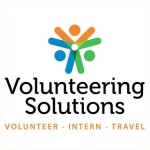
2. Medical Volunteer Program by Volunteering Solutions —10.0 rating
“I have been planning to volunteer abroad from a while now and with the start of 2016 i finally planned my trip. The reason behind choosing Volunteering Solutions out of many other placement agencies was that there programs were highly affordable and matched to my requirements. Plus, the response that i received from them was quite swift and clear; it reflected sheer experience and professionalism. I volunteered at a local clinic for 3 weeks under the Medical program, and it left me with some really amazing experiences. I had few other fellow medical students from different countries which was again a great aspect about the trip. My placement was quite comfortable and the food was nice. What really helped was the locally appointed coordinator who guided us throughout the program and his advice helped make the trip better. Overall, it was a very unique and informational experience which I believe will be helping me grow not only professionally but also as a person.” Read more Volunteering Solutions reviews here
- When? Year-round, 1-24 weeks
- Why? Volunteering in Vietnam with this medical program means helping adults who suffer from cerebral palsy, Down’s syndrome, and other disabilities. You’ll be shadowing and helping doctors treat patients for five to six hours a day, five days a week! Volunteering Solutions works hard to accommodate their volunteers in Vietnam in large four story buildings complete with bunk beds and a chef who prepares all meals. They’ll also provide an orientation and city tour to help familiarize volunteers with Ho Chi Minh. And weekends are free to be filled with fun excursions and cultural experiences in Vietnam.

3. Volunteer & Travel with Love Volunteers in Vietnam —9.59 rating
“Very happy with how everything worked out, i was very lucky to have had such an incredible experience. Vietnam was epic, beautiful country with so much to see and do. The people, the food and the culture was so different and refreshing. I will 10.00% be going back. The staff were all really lovely, no complaints. Good communication and really easy to access if necessary. Vietnam is such a safe place, and is more westernized than other Asian countries, yet it still staying true to its culture and heritage. If you're looking for a country to do your first solo volunteering trip, I would highly recommend.” Read more Love Volunteer reviews here
- When? Year-round; 2 weeks
- Why? Volunteer in Vietnam with this program, which sets itself apart from others with tons of extra activities. Actual volunteer opportunities in Vietnam vary with this program, from helping abandoned children with HIV to assisting the elderly or working in a pre-school. You’ll be volunteering by day and taking local cooking classes or enjoying cultural workshops by night. They even offer fully planned excursions to exotic destinations like Mekong Delta, with its floating markets and maze of rivers and islands.

4. Women’s Shelter Volunteer Program with ELI Abroad —10.0 rating
“My two weeks in Vietnam exceeded all my expectations. I learnt so much, got to have a lot of hands on experience and had so much fun doing it. The whole team was so welcoming, friendly and willing to teach. Our mentors Dao and Vi were so helpful, accommodating and were the most genuine people I've ever met. Overall I highly recommended this program. You wont regret it.” Read more ELI Abroad reviews here
- When? Year-round; 2-12 weeks
- Why? Women who get pregnant out of wedlock in Vietnam are often ostracized from their families and abandoned by their partner. ELI Abroad’s volunteer projects in Vietnam strive to support single pregnant women and single moms with children by providing temporary shelter and food, while giving vocational training to the women. As a volunteer, you’ll be spending time with these women and their children, providing support and possibly teaching English or leading workshops. Feeling fulfilled with the work isn’t all, though; volunteers are provided with great accommodation—paying just three dollars a day for all meals. That’s a hard offer to beat!

5. Volunteer Teaching English with Projects Abroad —10.0 rating
“Throwing yourself into an entirely different culture and way of life is never the easiest experience, but I can honestly say that I felt very well supported by the Projects Abroad team every step of the way. From patiently answering the barrel of questions I had prior to applying and in preparation for going to Vietnam, to the personal guidance I received from the Vietnam Projects Abroad team during my stay in Vietnam, I was blown away by how attentive the team were to my needs and concerns every step of the way.” Read more Projects Abroad reviews here
- Where? Hanoi
- When? Year-round; 2 weeks—a year
- Why? Teaching English to adorable children in a gorgeous foreign country? Sign us up! Volunteer in Vietnam with this program, which provides volunteers with a homestay and exposes them to the local culture even more. The local family that you stay with will also provide yummy, authentic, Vietnamese meals! Projects Abroad offers full time support both before and during your trip, so you’re sure to have an amazing time!
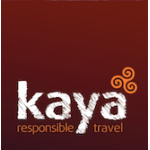
6. Community Volunteering and Teaching in Southern Vietnam with Kaya Responsible Travel —9.0 rating
“Kay does a very good job setting students up with a good program in a different country. The program I was with was great. I ended up having a blast during my stay! I enjoyed the food in Vietnam the most, it was delicious! I really enjoyed working at the children hospital. It was fun to watch the tasks the performed daily. My greatest achievement for me was getting off my sofa and getting out to try and make a positive change in the world!” Read more Kaya Responsible Travel reviews here
- When? Year-round; 2-26 weeks
- Why? With Kaya Responsible Travel, you could be volunteering with HIV positive kids, teaching orphaned children, or assisting with children with disabilities. All you need is enthusiasm for the work and love for the kids! Out of all the volunteer projects in Vietnam, this one includes extras like a cooking demonstration or dinner with a local family. There’s also an optional weekend excursion to Mui Ne, a gorgeous tropical beach town where you can participate in a host of water sports such as windsurfing and sailing, or simply shop till you drop in the many shops downtown.

7. Community Involvement Volunteering with GoEco —9.75 rating
“The two weeks that I spent in Ho Chi Minh, Vietnam provided me with amazing memories and invaluable friendships with volunteers from all over the world. At the end of my two weeks there, I left Vietnam gloomily, and promised myself to return to this beautiful country full of kind souls as many times as I can. If I’d known before that I’d find myself feeling so close to the people of this fascinating country so quickly, I’d have planned to stay for two more weeks.
I’m very glad that I volunteered this summer. Everything was better than I could ever imagine. I’m glad that I had the chance to explore one of the most beautiful cities in the world, a chance to be immersed into its culture by helping its people. Nothing else compares to the experience of being miles away from your country, surrounded by people who do not speak your language and who are culturally very different than you, and still being able to feel at home.” Read more GoEco reviews here
- When? Year-round; 1-2 weeks
- Why? This program has a range of opportunities to work with the community including helping special needs children, participating in a cultural exchange with college students, or assisting in a food shop for the needy. GoEco provides three meals a day plus accommodation at one of the lowest costs of all the programs on our list at just ~$760 for two weeks! They also offer a week extension; for a small fee, you can spend a week either before or after your volunteer work sightseeing around Vietnam, complete with cooking classes, language instruction, and a traditional water puppet show.

8. Volunteer in Friendship Village with Volunteer World —8.60 rating
“Volunteer World gave me the opportunity to find a project that suited me. They have plenty of projects and there is something for everyone! You meet amazing people. You get to know the country and the culture through the locals. You connect immediately with the other volunteers and experience this amazing trip together. I'm already looking for my next experience with them.” Read more Volunteer World reviews here
- Where? Friendship Village
- When? Year-round, 4 weeks
- Why? Volunteer opportunities in Vietnam at Friendship Village means helping children who suffer from the effects of dioxins from the herbicide “Agent Orange.” Volunteers also help care for war veterans — both worthy causes to say the least! Volunteer World prefers volunteers to be at least 21 and have previous experience working with people who have physical and/or mental disabilities. Four weeks is the minimum stay for this program, but for a worthy cause and a small price tag (just ~$894 for four weeks), this program is a wonderful option!

9. Build Houses in Vietnam with Putney Student Travel —9.0 rating
“I expected the group to work together to change the lives of those in the village. However I did not realize how much this program would also change my life. My expectations were definitely exceeded. The work, weekend excursions, food, etc. was all amazing. While we were teaching the kids in the village, we got the opportunity to talk to some of them about their hopes and dreams for the future. Multiple kids said "they wanted to be teachers because we inspired them". This made me feel like I was really making a difference in these kids lives. Through this program, I was able to realize that it is not that difficult to change a person's life as long as you put in a little effort. I also learned to not get caught up in the little things in life. The highlights of my experience was teaching English to the local children, visiting Hoi An, and Ha Long Bay. I feel like there was a good balance between projects and cultural activities. However I would have added more adventure activities.” Read more Putney Student Travel reviews here
- Where? Quang Ngai, Hoi An, Hanoi, and Ha Long Bay
- When? June and July 2019; 4 weeks
- Why? This program features a month of volunteering to build simple houses for the Vietnamese people. Putney Student Travel boasts mornings of cycling through a gorgeous backdrop of rice farms, rolling hills, and fishing boats on the way to your service location, along with afternoons relaxing on the beach or at the market with the local people. The month long project is sprinkled with cultural experiences around Vietnam as well! Building houses is hard work, but if you’ve got the knack and a desire to serve, this program is a great one.

10. Buds to Blossoms Pediatric Massage Volunteer Program:Vietnam—9.94 rating
“This was a life changing experience for me, it will forever stay in my heart and I will do everything I can to go back to these kids again and again. The Buds to Blossoms guys are so passionate about what they do and it was such a pleasure to work with them from the time I applied up until after the program.. They are so considered about everything and provided us with every detail about every question that might appear before, during or after the program.. They also provided us with support during the program which was very important for these who participated first time.. I absolutely loved every minute of what we were doing and I want to thank Buds to Blossom for what they do for these kids and for us. To see the children's smiles and laughter is the biggest happiness.” Read more Buds to Blossoms reviews here
- Where? Ho Chi Minh City
- When? Summer 2019; 1-2 weeks
- Why? This program asks for volunteers with at least a little massage experience, that are gentle, compassionate, flexible, and interested in working with children. The team is enthusiastic and the work is rewarding! Plus, this company boasts “robust help with fundraising” to cover all your expenses. Volunteer reviews praise this program as incredible and even life-changing! This program is a great way to change lives while serving abroad in Vietnam.
[ Browse ALL Volunteer Abroad Programs in Vietnam ]
You’re ready to volunteer abroad in vietnam.
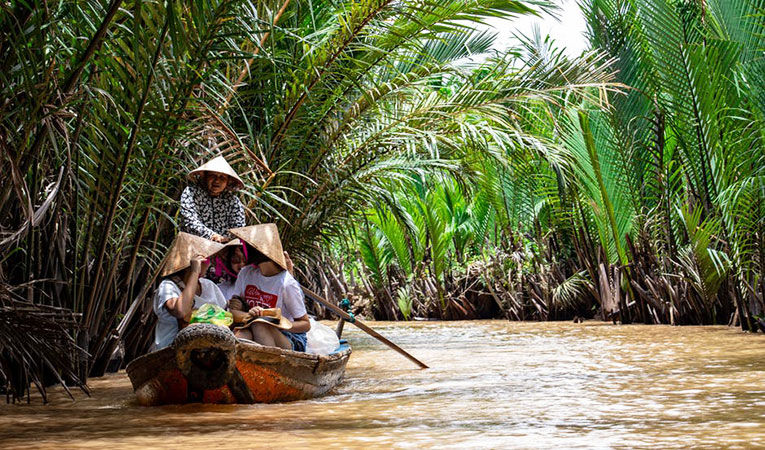
You’ll be sailing down Vietnam rivers in no time!
Volunteering in Vietnam is sure to be the adventure of a lifetime for you. You’ll marvel at the incredible limestone pillars of Ha Long Bay. You’ll wander the adorable local markets of Sa Pa. You’ll celebrate Vietnam’s Full Moon Festival with beautiful silk lanterns. And you’ll engage in meaningful volunteer work through one of these incredible programs. Whether you volunteer with community outreach or end up feeding adorable pangolins, volunteering in Vietnam will be an experience you’ll look back on fondly for years to come!
Use MyGoAbroad to Find Volunteer Opportunities in Vietnam With Confidence
Look for the Perfect Volunteer Abroad Program Now
Related Articles

By GoAbroad Writing Team | July 11, 2024

By Jennifer Bangoura | June 6, 2024

By Jonny Rowntree | May 29, 2024
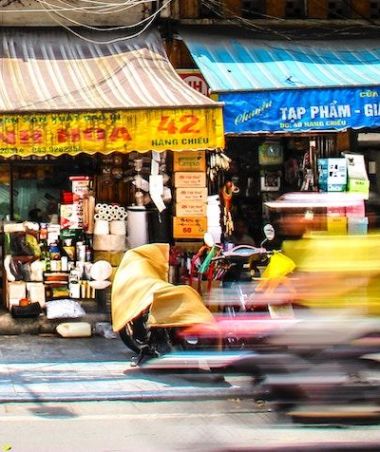
By Jodi Suckle | March 21, 2024
Popular Searches
Recommended programs.
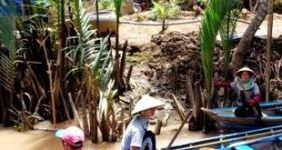
World Endeavors

749 reviews
International Volunteer HQ [IVHQ]

GoEco - Top Volunteer Organization

295 reviews
Projects Abroad
Top Volunteer Abroad Providers
Popular opportunities to check out
Top-Rated Volunteer Abroad Programs in Latin America
World’s #1 volunteer programs. 40+ countries from $20/day, volunteer abroad with gvi and make a lasting impact, dream destinations infused with vibrant culture & untamed nature, volunteering in jamaica is now possible travel responsibly with kaya, volunteer abroad to make a global impact & immerse in a new culture, go where help is needed. volunteer in africa, top animal welfare volunteer programs & internships abroad, for travelers, travel resources, for partners.

© Copyright 1998 - 2024 GoAbroad.com ®
- Study Abroad
- Intern Abroad
- Teach Abroad
- TEFL Courses
- Degrees Abroad
- High School Abroad
- Language Schools
- Adventure Travel
- Jobs Abroad
- Online Study Abroad
- Online Volunteer Programs
- Online Internships
- Online Language Courses
- Online Teaching Jobs
- Online Jobs
- Online TEFL Courses
- Online Degree Programs

Vietnam Travel Guide
Last Updated: April 29, 2024
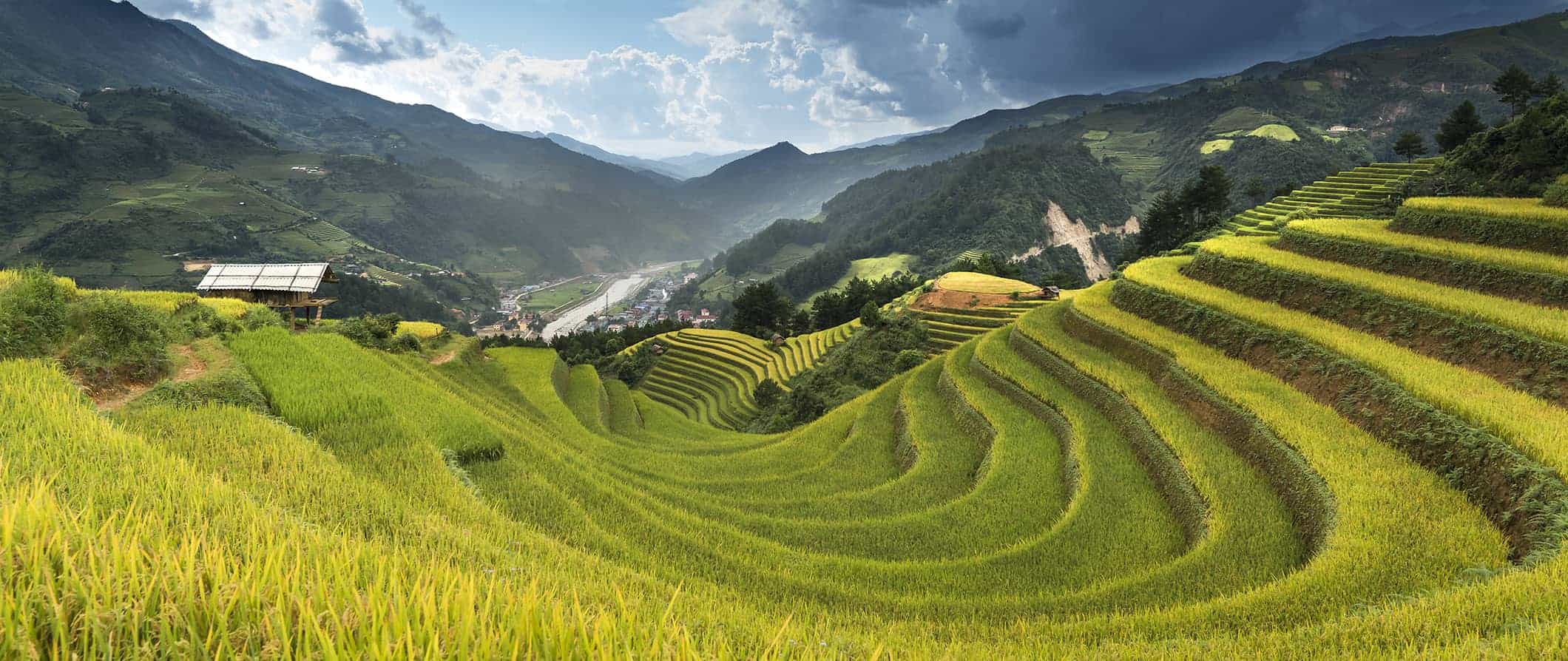
Most people either love or hate traveling in Vietnam. When I first went, there was a negative attitude towards foreign travelers (for good reason), lots of scams, and just not a lot of good vibes. But, since that trip many years ago, the country has changed a lot: it’s embraced tourism, people have opened up more, there’s fewer scams, and Ho Chi Minh City has even become a hub for digital nomads.
From exploring the Old Quarter of Hanoi to the delicious food and fancy garments of Hoi An , Vietnam has a lot to see and do so take your time. Don’t rush your trip.
This budget travel guide to Vietnam can help you plan your trip and ensure you make the most of your visit.
Table of Contents
- Things to See and Do
- Typical Costs
- Suggested Budget
- Money-Saving Tips
- Where to Stay
- How to Get Around
- How to Stay Safe
- Best Places to Book Your Trip
- Related Blogs on Vietnam
Click Here for City Guides
Top 5 things to see and do in vietnam.
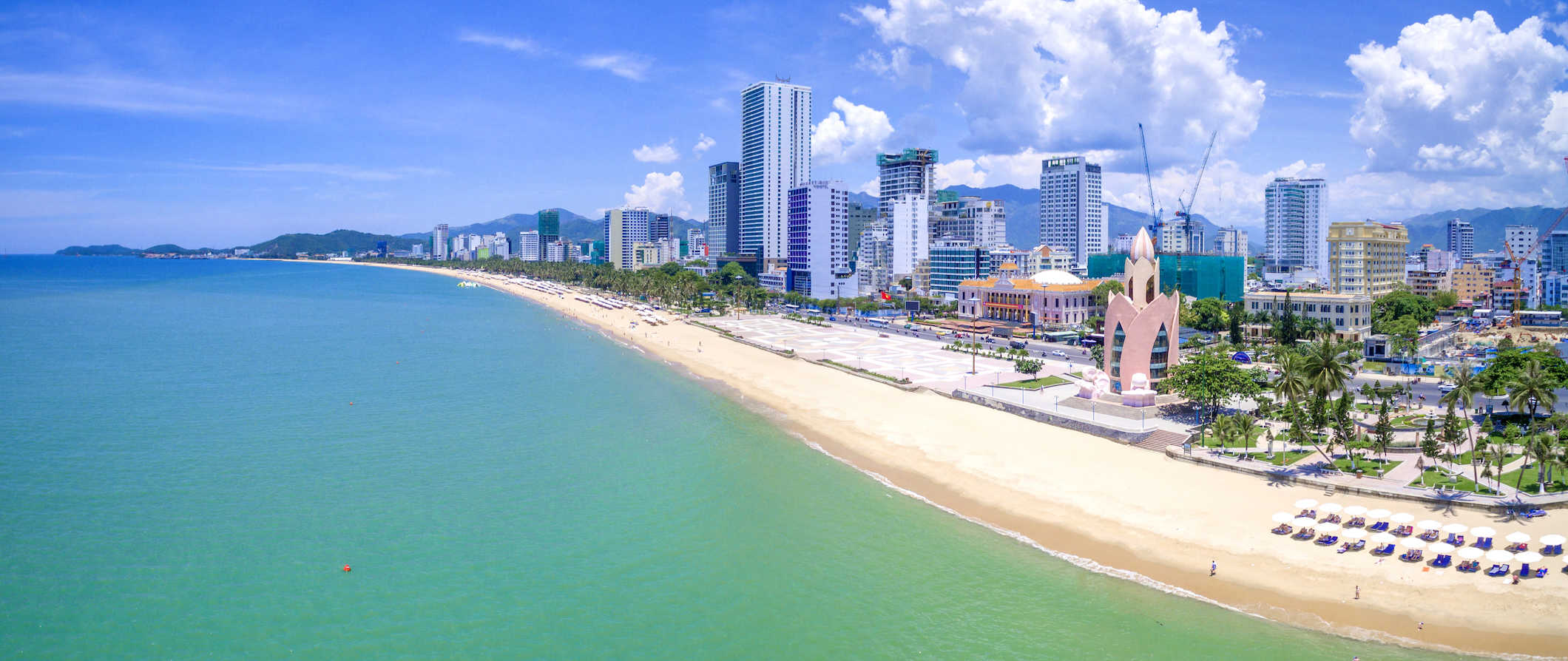
1. Tour the Mekong Delta
The delta is a 60,000-kilometer (37,000-mile) long web of interconnected waterways, which spans three Vietnamese provinces and has been used since the 4th century BCE. What I love about this area is it’s filled with small villages, pagodas, mangroves, and orchards. The best way to experience the area is to go on a boat or bike tour, where you’ll experience rural Vietnamese culture. Some of favorite things include the Cai Rang floating market for the colorful fruits and veggies and vibrant atmosphere; Vinh Trang Pagoda for its impressive golden exterior and lush gardens; and the incredible Sadec Flower Village that is stunning and serene, even if you’re not a flower enthusiast. Spend a few days really getting to know the region outside the hustle and bustle of the cities. Day trips on the river start at around 575,000 VND per person.
2. Wander Hanoi
Vietnam’s capital dates to the 3rd century BCE when it was the capital of the ancient nation of Au Lac. I love to wander around the narrow streets of the Old Quarter. It’s a great place to get a feel for the city as there are tons of vendors, smells of street food, people watching, and bustle. Some of my favorite places to visit include the One-Pillar Pagoda, the Imperial Citadel of Thang Long, and the Hanoi Water Puppet Theater. Be sure to check out the history museum to learn about French colonialism and Communist rule (from the Vietnamese perspective) as well as the Ho Chi Minh Mausoleum. Hanoi is also a good base for doing multi-day tours to Ha Long Bay.
3. Explore Ha Long Bay
This iconic region is home to more than 3,000 islands and is one of the country’s most popular tourist destinations. The towering limestone islands are covered in lush jungles and surrounded by calm emerald waters. A UNESCO World Heritage Site, it’s located 2-3 hours from Hanoi and travelers can take multi-day boat cruises around the islands (most are 2-5 days). During the cruise, you’ll visit floating markets, incredible beaches, massive caves, and either sleep onboard your boat or on one of the many islands. Just keep in mind that this area is super popular and is often overcrowded. Cheap tours start around 1,200,000 VND while a mid-range tour costs around 3,000,000-4,500,000 VND. Just remember that you get what you pay for and the cheaper boats might be a bit run down.
4. Hang out in Hoi An
Hoi An was a thriving port city between the 15th and 19th centuries and the architecture is incredibly well preserved (the entire Old Town is a UNESCO World Heritage Site). It was easily my favorite place in Vietnam because I loved walking around, taking a thrilling sidecar trip in the countryside, and of course, Vietnamese cooking classes, which are great because you learn to prepare fresh fish caught right there. This place is famous for its tailors so if you’re looking to buy some custom made clothes at an inexpensive price, this is the spot to do it in. They will even ship it back to your home country.
5. Get adventurous in Sapa
This is northern Vietnam’s premier trekking area and it’s hugely popular with all sorts of travelers. Sapa is famous for its hill tribes, lush vegetation, beautiful hiking trails, and breathtaking mountains. If you’re looking to experience the scenery and outdoor recreation opportunities Vietnam has to offer, this is the place. This area is rich in culture because it is comprised of 85% ethnic Vietnamese minority groups that have different colorful traditional dress and unique styles of houses. To avoid the tourists, come during the off-season or take longer hikes to parts the crowds don’t go to.
Other Things to See and Do
1. take a free walking tour.
The first thing I do when I visit a new destination is take a free walking tour. It’s the best way to get the lay of the land, see the main sights, and connect with a local guide who can answer all my questions. Both Hanoi and HCMH (the two largest and most popular cities in the country) have a few free tours available that cover the main highlights and are a great primer to the country (Hanoi Free Walking Tours and Saigon Free Day Tours are two companies worth checking out). Just remember to tip your guide at the end!
2. Crawl through the Cu Chi Tunnels
This extensive network of tunnels spans nearly 310 miles (500 kilometers). It was utilized by the Viet Cong during the Vietnam War. Tours involve a description of the tunnels, after which tourists are allowed to crawl about the maze and fire AK47s at shooting targets. It’s a sobering experience and not one meant for anyone claustrophobic. However, if you want to better understand the terror of the Vietnam War, this is a must-visit. Admission is around 100,000 VND per person.
3. Relax or find adventure in Dalat
Dalat is nestled in the hills of the Central Highlands and is popular with tourists who want to relax in the mountain air and those who want to participate in a host of adventure sports (such as rock climbing, ziplining, and rappelling). The hills around Dalat are filled with traditional tribal villages, which you can tour as well. Expect to pay around 2,000,000 VND per person for a full day of ziplining and rappelling around waterfalls.
4. Visit Cuc Phuong National Park
South of Hanoi lies Vietnam’s first National Park, Cuc Phuong. Covering 222 square kilometers (85 square miles), this place is home to over 2,000 species of trees and some truly rare wildlife including the Clouded Leopard, Delacour’s Langur and Owston’s Civet. It was my favorite park in all of Vietnam and the only place I didn’t find hordes of tourists. The entrance fee is 50,000 VND.
5. Explore Ho Chi Minh City
Also known as Saigon, Ho Chi Minh City is Vietnam’s largest city and is definitely worth exploring. Ho Chi Minh is the place to really gain an understanding of French colonialism as well as the US headquarters there during the Vietnam War, which you can learn more about at the War Remnants Museum. Like most cities in Vietnam, you’ll be met with the roar of motorbikes speeding through colonial streets. I loved Ben Thanh Market, which is a must-see for amazing food and there is a great buzz of activity within the place. Don’t miss your chance to get the best Pho soup in Ho Chi Minh, that means some of the best is right on the side of the street.
6. Get active in Mui Ne
Despite being a fishing village, Mui Ne has a significant tourism scene due to its popularity as a wind- and kite-surfing destination. The best highlight for me aside from the beach was riding on the rolling sand dunes similar in size to the Saharan ones and also the Jeep Tour to the Fairy Stream through a canyon, which is not something you get to do very often! Also, don’t miss the 9th-century Po Shanu Cham Towers with beautiful views of the Phan Thiet coastal town. Mui Ne is definitely worth checking out for a day or two when you’re passing by on the bus because it has a nice chill vibe to it, friendly people, and beautiful sunsets.
7. See My Son
My Son is a set of Hindu ruins in Vietnam that date back to the Cham Empire. The Champas ruled over Central Vietnam from the 3rd to the 19th century. The temples here are of incredible historical importance, but they have been largely reclaimed by the surrounding jungle, and have fallen into a great state of disrepair. Don’t come here expecting something as marvelously preserved as Borobudur or Angkor Wat. The entrance fee is 150,000 VND.
8. Visit the caves in Phong Nha-Ke Bang
Hang Son Doong is reputed to be the world’s largest cave and is located in Phong Nha-Ke Bang National Park. It was discovered by a local in 1990, and “rediscovered” by a British caving team in 2009. You can arrange trips to see this stunning cave in all its glory with stalactites and stalagmites, an inner cave forest, and even cave pearls. You’ll be blown away by its beauty. Entrance to the caves is around 150,000 VND per person.
9. Check out the rice terraces
Outside of connections to the Vietnam War, the stereotypical image of Vietnam is of the many rice paddies. You can find these in the Muong Hoa Valley. If you’ve never visited rice terraces, you should make a point to see them in Vietnam. Visit them to learn about rice production and take stunning photographs of the unbelievable Vietnamese countryside. Expect tours to cost around 600,000 VND per person.
10. Relax in Hue
Hue is generally passed by, making it a bit of a quieter stop along the tourist trail. Stroll along the beautiful Perfume River and into the Imperial Citadel. Don’t miss the Tu Hieu Pagoda and the Tombs of the Emperors, which mostly date from the 19th and 20th centuries. Some of the main tombs to see are the Tomb of Minh Mang, the Tomb of Tu Duc, and the Tomb of Khai Dinh.
11. Take a cooking class
Vietnamese food is delicious and the best way to learn about these incredible dishes is to take a cooking class. You’ll not only learn how to make some of these tasty meals but you’ll get to interact with a local chef who can teach you about their history and cultural significance. Many cooking classes also include a visit to the local market where you’ll shop for ingredients. Prices vary but expect to pay at least 800,000 VND per person.
12. Tour the former DMZ
The Vietnamese Demilitarized zone was the dividing line between the Communist north and anti-Communist south during the Vietnam War. It was in use from 1954 to 1976. These days, you can take a tour of the DMZ from Hue and learn about the conflict from expert guides who were actually involved in the war (or survived it as civilians). You’ll see secret tunnels, learn about military surveillance, and get insight about the conflict from a perspective not often shown in the media. Full-day tours from Hue start around 2,500,000 VND.
13. Buy a motorbike
If you’re an adventurous traveler, buy a motorbike and drive the length of the country. This is considered the best way to travel Vietnam by veteran backpackers who like to get off the beaten path. You can buy bikes in Hanoi or HCMC at either end of the country and then make your way to the opposite end, stopping along the way over the course of a few weeks. While it’s not for everyone, this mode of travel offers the most freedom as you’ll be able to visit a lot of places that the buses and trains don’t stop at. You can buy a bike for as little as 4,800,000 VND, and then you can sell it once your trip is done to recoup some of the cost. There are always backpackers looking to buy a bike in HCMC and Hanoi.
14. Sample the local coffee
Vietnam is the world’s second-largest coffee producer (after Brazil) exporting a whopping 1.5 million tons of it per year (after rice, it’s their biggest export). Even if you don’t drink coffee (I don’t), trying fresh coffee here is a must. Whether you just hop arounds cafes, do a tasting experience in Hanoi of HCMC, or head out to one of the many coffee plantations, learning about this vital crop (and also sampling it fresh) is an experience not to be missed. Expect a half-day plantation tour (with lots of samples) to cost around 700,000 VND.
For more information on specific cities in Vietnam, check out the following guides:
- Hanoi Travel Guide
- Ho Chi Minh City Travel Guide
- Hoi An Travel Guide
- Nha Trang Travel Guide
Vietnam Travel Costs
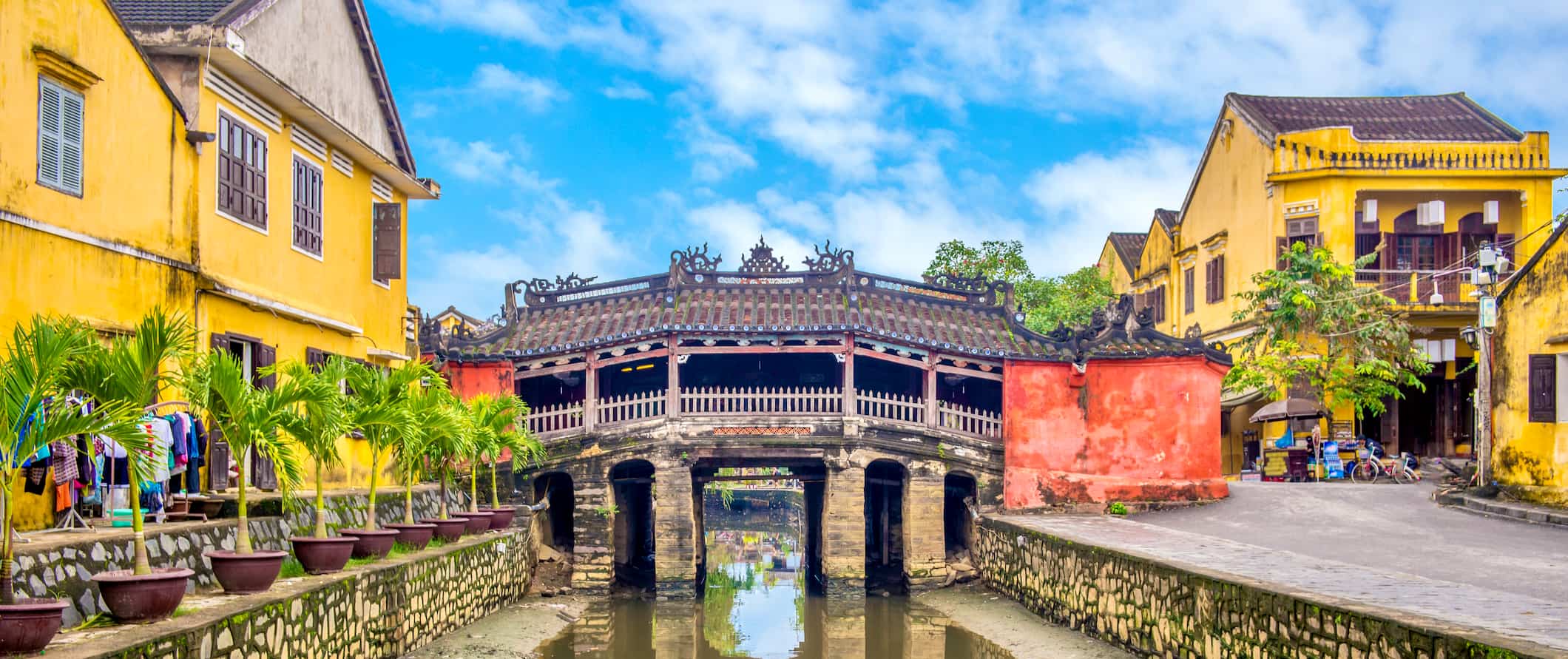
Accommodation – Hostels start at around 100,000 VND per night for a dorm room. These can be a bit rustic and no-frills. For a hostel with more amenities, such as free breakfast or a a free happy hour (as well as improved cleanliness), expect to pay double. Private rooms cost at least 350,890-425,000 VND per night for a double room. Most hostels include free Wi-Fi, and many also include free breakfast or free beer during certain hours of the day. Self-catering facilities are not very common since eating out is so cheap.
For those traveling with a tent, wild camping is not legal in Vietnam. While it is still possible to do as enforcement is sparse (especially if you’re sleeping in a hammock), I also wouldn’t recommend it. Insects and animals can be an issue, there are lots of landmines still undiscovered out in the brush, and robbery can occur. Stay safe and stick to hostels.
For a budget hotel with a double bed, expect to pay around 225,000 VND per night. This usually includes free Wi-Fi and free breakfast.
On Airbnb, a private room costs at least 325,000 VND per night. For an entire home or apartment, prices begin around 600,000 VND. Prices double when not booked in advance so plan accordingly
Food – Vietnamese cuisine is fresh, flavorful, and uses a lot of herbs and vegetables. Rice and noodle dishes are common as are various soups such as the iconic pho (a beef noodle soup). Wonton soup, meat curry, fresh French bread (known as bahn me , and grilled fish are just some of the popular dishes you’ll encounter. Standard ingredients include fish sauce, lemongrass, chili, lime, Thai basil, and mint.
You can get a bowl of pho or a rice dish for 20,000 VND. Street food is the cheapest and the most delicious food option in the country.
Most sit-down restaurants are also inexpensive at around 45,000-95,000 VND. The fancier (and more touristy) the restaurant, the more expensive.
Western food is also more expensive, usually around 110,000 VND for a fast food meal, so skip it if you’re on a budget.
If you want to splash out on a fancy three-course meal, expect to spend around 250,000 VND.
A liter of water at a convenience store is about 15,000 VND, while beer or soda is about 20,000-35,000 VND.
For those looking to cook their own meals, expect to pay at least 400,000 VND per week for basic groceries. Be sure to shop at the local markets to get the cheapest and freshest food. That being said, food is so cheap in the country that it’s simply easier – and cheaper – to just eat street food, especially as most hostels and hotels don’t have shared kitchens.
Backpacking Vietnam Suggested Budgets
On a backpacker budget, you can visit Vietnam for 600,000 VND per day. This budget covers a stay in a large hostel dorm, eating street food for all of your meals, limiting your drinking, taking the bus, and doing free activities in each destination. If you plan on drinking, add another 20,000-40,000 VND to your daily budget.
A mid-range budget of about 1,125,000 VND per day covers staying in a cheap hotel, eating street food and at the occasional sit-down restaurant, enjoying a few more drinks, taking the occasional taxi to get around, and doing more paid activities such as museum visits and water upper shows.
On an upscale budget of 2,460,000 VND, you can stay in a nice hotel, eat out for all your meals anywhere you want, enjoy lots of drinks, and more taxis, and do whatever tours and activities you want, including a multi-day trip to Ha Long Bay. This is just the ground floor for luxury though. The sky is the limit!
Vietnam Travel Guide: Money-Saving Tips
Vietnam is a very affordable country. In fact, it’s one of the cheapest in Southeast Asia. Even with the explosion of tourism in the last few years, it still remains very affordable. You’ll be hard pressed to spend money if you’re sticking to non-Western food, cocktails, and hotels. However, if you’re looking to travel even cheaper and save some money, here are some tips:
- Eat delicious street food – The street food here is excellent and cheap, and you can watch it being cooked in front of you. Stick to the local food and you’ll save money. The street-side pho, bread, sandwiches, donuts, and bananas are your best deals.
- Late-night travel – If traveling on long journeys, try to take the late-night “sleeper” buses or trains as these will save you the cost of a night’s accommodation. Depending on the company, you may even have a chance to comfortably lie flat as you ride through the dark countryside to your next destination.
- Take the tourist bus – It is actually cheaper to take the tourist bus around the country than taking local transportation because of the “tourist” price you get at the bus station. Tickets from one end of the country to another are very affordable.
- Fly for cheap – Vietnam’s low-cost airlines VietJet and FlyVietnam are extremely inexpensive. This is a great option for people with limited time to explore different regions of Vietnam. Both airlines frequently offer special deals and at the time of writing this, Hanoi to Da Nang is just 820,000 VND!
- Bargain hard – Tourists tend to be charged more than locals for everything from cyclos (a three-wheel bicycle taxi) to clothes to street food. Bargain harder than you would ordinarily, and don’t underestimate the value of walking away.
- Avoid paying tourist prices – Before you leave the hostel, ask them to estimate how much what you want to do should cost. How much should a ride to the museum cost? How much should I pay to have a gown like this made? They will be able to give you bargaining guidelines.
- Bring a reusable water bottle – The tap water in Hanoi is not safe to drink. To save money and reduce your plastic use, bring a reusable water bottle with you. LifeStraw make a reusable bottle with a built-in filter so you can be sure your water is always safe and clean.
Where to Stay in Vietnam
To help you save money on accommodation, here’s a list of my recommended hostels and budget hotels in Vietnam:
- Mad Monkey (Hoi An)
- Hoi An Golden Holiday Hotel (Hoi An)
- Little Hanoi Hostel (Hanoi)
- San Palace Hotel & Spa (Hanoi)
- Hanoi House Hostel & Travel (Hanoi)
- Ccasa Hostel & Coffee Bar (Nha Trang)
- The Hideout (HCMC)
- Orchid’s Saigon Hotel (HCMC)
How to Get Around Vietnam
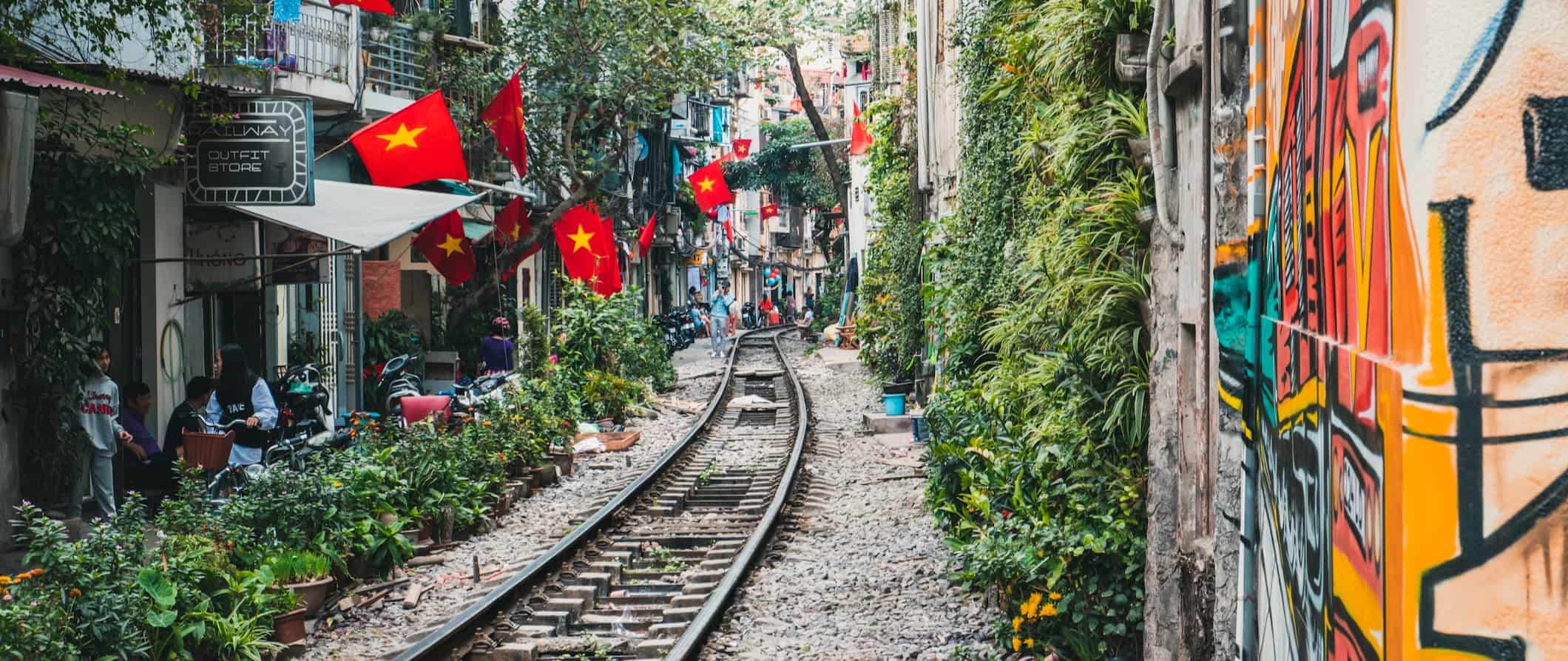
Public transportation – Larger cities in Vietnam (such as Hanoi and HCMC) have reliable and safe public transportation. In Hanoi, there are buses that cover most of the city and generally have stops near all the major tourist sites. Tickets are paid for in cash on the bus and generally cost 7,000-15,000 VND depending on how far you go. HCMC also has a large network of buses, with tickets costing up to 10,000 VND (again, depending on how far you travel).
Cyclos (a bicycle rickshaw) is one of the cheapest ways to get around. A short ride costs as little as 12,000 VND, while a longer night ride costs upwards of 40,000 VND. A more popular option is the ze om , a motorbike taxi that has fares starting from 15,000 VND. You’ll have to hold on tight though (and make sure you wear a helmet as accidents are common).
Train – A lot of people love taking the train in Vietnam because it’s safe, affordable, and comfortable and, although some routes might be slow, you’ll get some amazing views of the Vietnamese countryside. The rail network also covers most of the country, so you can get just about everywhere you want to go (except the Central Highlands and the Mekong Delta). You can use the website Baolau to research train schedules and book your tickets. A train journey between Ho Chi Minh and Hanoi (which spans the entire length of the country) starts at 1,000,000 VND for a soft seat (not a berth). The journey takes three days. Hanoi to Hue costs around 600,000 VND and takes around 13 hours while HCMC to Nha Trang costs around 500,000 VND and takes 8 hours.
Bus – It’s easy to find long-distance hop on, hop off bus tours running the length of Vietnam. You can hop on or off at any stop along the way. They cater to tourists, but locals actually use this service too since it’s super affordable. Prices depend on route and operator but generally, Hanoi to Ho Chi Minh is between 815,000-1,600,000 VND.
To find bus routes and prices, use BusBud .
Flying – Flying domestically in Vietnam is a good idea if you’re looking to fit a lot into a shorter trip. For example, a flight from Hanoi to Ho Chi Minh City takes two hours while the train ride would take at least 30 hours. One-way flights around the country start at around 590,000 VND.
Car rental – Vietnam is very easy to navigate by bus, so I don’t really suggest renting a car here — especially because traffic in the cities is very hectic and accidents are common. That said, car rentals are affordable, costing around 500,000 VND per day. An IDP (International Driving Permit) is required. For the best car rental prices, use Discover Cars .
When to Go to Vietnam
In the southern part of Vietnam, the dry season lasts from December to late April/May while the rainy season occurs from May to the end of November. The rainy season usually just means brief heavy downpours in the afternoon, although sometimes the Mekong Delta will flood. The dry season is the best time to visit but keep in mind that it’s winter up north and it’s going to be a lot colder in the north than the south. Rainy season isn’t that bad either but, like the name implies, it rains a lot.
May through November is still a good time to visit. Temperatures rarely dip below 20°C (68°F), but they can sometimes get as high as 40°C (104°F) in the hottest months (March to the end of May). The south especially gets very hot and humid during this time but it’s perfect beach weather!
Along the central coast, the rainfall pattern differs quite a bit. In the northern part of the region (like Hué and Da Nang), the rain lasts from September to February. February to May is the best time to visit this area. Temperatures soar from June to August, often in the high 30s°C (80s°F).
In Northern Vietnam, the weather is most pleasant from October to December.
The weather in Vietnam varies so much per region so it’s hard to pick the best time to go. But generally, it’s recommended to visit sometime between September-December and March-April if you’re hoping to get an overall experience in the country.
How to Stay Safe in Vietnam
Vietnam is an incredibly safe place to backpack and travel. Violent crime is really, really rare. Petty theft is the most likely thing to happen to you here. Always keep your valuables secure when out and about just to be safe. Lock your windows and use common safety sense, especially in bars at night and in touristy areas.
Traffic in the major cities (specifically Hanoi) is super hectic and there are virtually no rules of the road. There are also millions of motorbikes and scooters here (literally). For that reason, take extra caution when crossing the street. It’s best to just walk as directly and calmly as possible and let the traffic weave around you. If you’re not comfortable doing that alone, follow locals when they cross.
If renting a bike or riding on the back of one, make sure you always wear a helmet. Accidents are incredibly common here, both in the traffic-heavy cities but also in rural areas where roads can be less than optimal.
There are some common scams in Vietnam, such as the motorbike scam where vendors try to charge you for pre-existing damage to your bike rental. When renting anything, take photos and videos beforehand just in case.
Be sure to always count your change. The money is similar looking here so oftentimes people will “mistakenly” give you the wrong change hoping you won’t notice that the 200,000 VND bill you just got is actually only 20,000. Always count your change here!
Most scams here are really just people trying to try to nickel and dime you and try to get you to spend extra money since they know, as a tourist, you have more than they do. You can read about common travel scams to avoid here .
Solo female travelers should generally feel safe here, however, the standard precautions apply (never leave your drink unattended at the bar, never walk home alone intoxicated, etc.). Use common sense when using dating apps while traveling and meet in public places.
Street food here is very safe, but whenever you’re not sure of where to eat simply find somewhere where there are locals eating. If it’s good (and safe) enough for them, you should be fine. Avoid meat that looks uncooked or that has been out in the sun too long. Always wash your hands before and after eating just to be safe.
If you experience an emergency, dial 113 for assistance.
Be sure to make copies of your important documents in case of theft.
The most important piece of advice I can offer is to purchase good travel insurance. Travel insurance will protect you against illness, injury, theft, and cancellations. It’s comprehensive protection in case anything goes wrong. I never go on a trip without it as I’ve had to use it many times in the past.
Vietnam Travel Guide: The Best Booking Resources
These are my favorite companies to use when I travel. They consistently have the best deals, offer world-class customer service and great value, and overall, are better than their competitors. They are the companies I use the most and are always the starting point in my search for travel deals.
- Skyscanner – Skyscanner is my favorite flight search engine. They search small websites and budget airlines that larger search sites tend to miss. They are hands down the number one place to start.
- Hostelworld – This is the best hostel accommodation site out there with the largest inventory, best search interface, and widest availability.
- Agoda – Other than Hostelworld, Agoda is the best hotel accommodation site for Asia.
- Booking.com – The best all around booking site that constantly provides the cheapest and lowest rates. They have the widest selection of budget accommodation. In all my tests, they’ve always had the cheapest rates out of all the booking websites.
- Get Your Guide – Get Your Guide is a huge online marketplace for tours and excursions. They have tons of tour options available in cities all around the world, including everything from cooking classes, walking tours, street art lessons, and more!
- SafetyWing – Safety Wing offers convenient and affordable plans tailored to digital nomads and long-term travelers. They have cheap monthly plans, great customer service, and an easy-to-use claims process that makes it perfect for those on the road.
- LifeStraw – My go-to company for reusable water bottles with built-in filters so you can ensure your drinking water is always clean and safe.
- Unbound Merino – They make lightweight, durable, easy-to-clean travel clothing.
Vietnam Travel Guide: Related Articles
Want more info? Check out all the articles I’ve written on Vietnam travel and continue planning your trip:
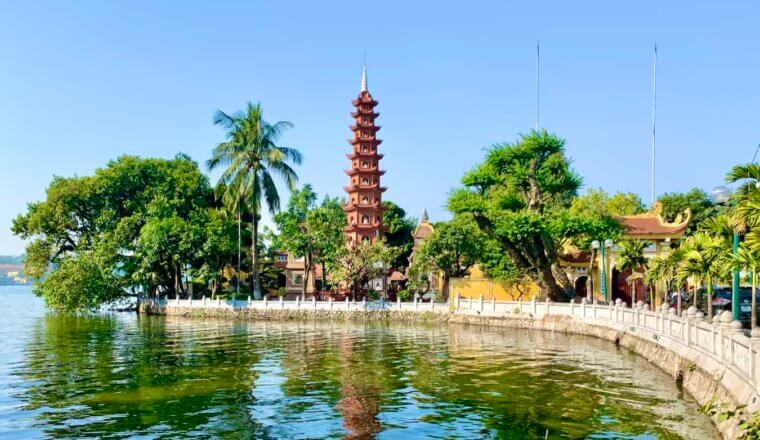
The 6 Best Hostels in Hanoi

Is Southeast Asia Safe for Travelers?
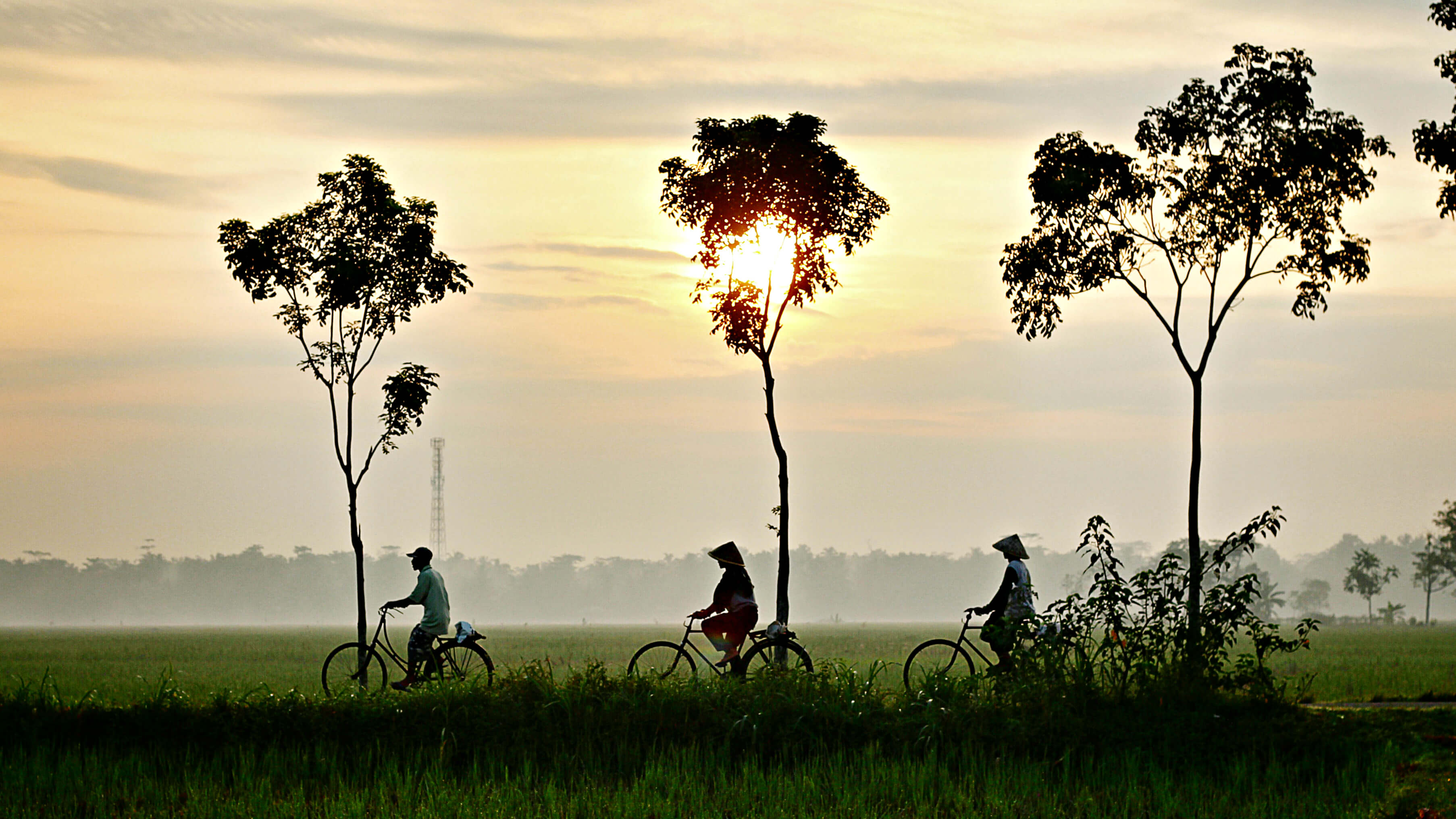
Biking the Mekong Delta in Vietnam
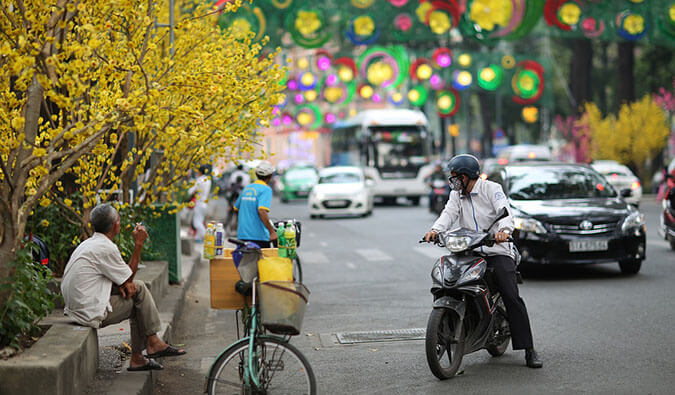
Why I’ll Never Return to Vietnam
Get your free travel starter kit.
Enter your email and get planning cheatsheets including a step by step checklist, packing list, tips cheat sheet, and more so you can plan like a pro!

- Where To Stay
- Transportation
- Booking Resources
- Related Blogs

The Perfect Vietnam Itinerary for 1, 2, or 3 Weeks
- Last Updated: January 25, 2024
If you’re planning a trip to Vietnam for 1, 2, or 3 weeks then you must start with this post to help plan your Vietnam itinerary.
Vietnam has something for everyone. It’s bursting with history, delicious foods, hiking opportunities, beautiful landscapes, beaches, and of course the wonderful Vietnamese people.
Our Vietnam itinerary guide will give you an overview of the country, with some great itinerary options depending on how long you plan to visit.
We have something for everyone with:
- 10 days in Vietnam: Highlights Itinerary – These are the must-see places in Vietnam
- 1 week in Vietnam focusing on the North
- 1 week in Vietnam focusing on the South
- 2 weeks in Vietnam, by combining the two above
- 3 weeks in Vietnam, or longer, by adding our extended options to your itinerary.
READ MORE: Don’t miss our complete guide to travelling in Vietnam !
Table of Contents
Day 1 – Hanoi
Day 2 and 3 – halong bay, day 4 and 5 – sapa , day 6 and 7 – hue , day 8 – hoi an, day 9 and 10 – explore saigon, and take a full or half-day tour to the cu chi tunnels or the mekong delta, tour options, da nang , day 2 and 3 – ha long bay, day 4 and 5 – sapa, day 6 – hue, day 7 – hoi an, ninh binh (near hanoi), phong nha – ke bang national park (near hue), my son (near hoi an), ba be national park (near sapa), bach ma national park (between dan nang and hue), dong ha – for dmz tour (between dong hoi and da nang), day 1 – nha trang , day 2 – dalat , day 3 – mui ne , day 4 and 5 – ho chi minh city, day 6 and 7 – phu quoc island, cu chi tunnels or the mekong delta , con dao island, cat tien national park, did you find my vietnam itinerary helpful, 1, 2, and 3-week vietnam itinerary options .
We broke this Vietnam Itinerary into three main sections.
Simply decide how long you have, and use one of our itineraries to guide you to the top things to do in Vietnam!
10 Days in Vietnam Itinerary: Vietnam Highlights
Our 10 days in Vietnam itinerary will highlight the absolute best of North and South Vietnam – from hiking in Sapa , to sinking beer in lively Ho Chi Minh City (more commonly referred to by its former name, Saigon).
This can be the core of a longer 2 or 3-week journey by adding extension opportunities to it.
You can do this trip from North to South, or in reverse.
After flying into Hanoi, you’ll have one day to see this beautiful city, so get ready to hit the ground running.
Hanoi is the capital of Vietnam and is full of beautiful architecture, culture, and unique food. The old city is surrounded by remnants of fortified walls, and most things you will want to visit are in the Old Quarter.
I would suggest finding a walking tour, so you can learn about the city’s history as you explore the city.
Take a stroll around the Hoàn Kiếm Lake and visit the Temple of the Jade Moutain, and stop to help the locals practice their English.
Try the local beer called Bia hơi or fresh beer, which is brewed fresh each morning, and doesn’t contain any preservatives.
One of the best things to do in Hanoi is to have an egg coffee while sitting at a café in Hanoi’s Train Street.
Then get ready to get out of the way when the train rattles past, so close to you that it takes your breath away!
For dinner, don’t forget to have a regional specialty, called Bun Cha. It’s found all through the old quarter, so you won’t have to go far to find it.
Where to stay in Hanoi: We recommend staying right in the Old Quarter.
READ MORE: Learn more about what to do in Hanoi with our Hanoi city guide .
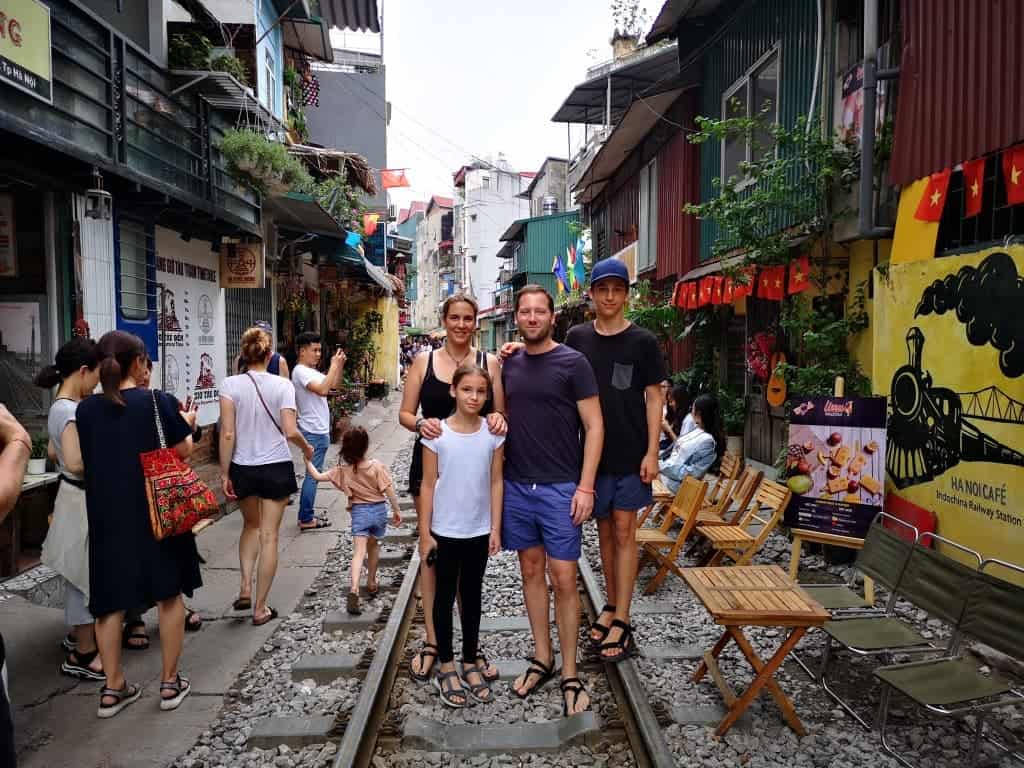
Halong Bay is a UNESCO World Heritage Site , and is one of the most popular things to see in Vietnam.
The stunning bay is full of thousands of limestone islands, pristine beaches, caves, and floating villages. The Vietnamese call it The Bay of the Descending Dragons.
One of the best ways to visit the islands is by boat.
You can take one of the many cruises on offer from the tour operators in town, taking you from Hanoi to Halong Bay, spending a night onboard a boat, and returning you to Hanoi the following day.
Alternatively, make your own way to Halong Bay, and arrange a boat from there.
Halong Bay cruise options vary depending on your budget.
The cruises normally include kayaking, stand up paddleboarding, swimming, visiting floating villages, and exploring caves.
If you find the Halong Bay cruises a little out of your budget, check out this guide to Halong Bay on a budget .
Where to stay in Ha Long Bay: Spend the first night at Halong bay, preferably on board a junk boat. Alternatively, spend the night on Cat Ba Island . Return to Hanoi, and spend the second night there, ready to head to Sapa in the morning.
After a restful night in Hanoi after your cruise, and having enjoyed some more Bun Cha and fresh beer, it’s time to get on a bus from Hanoi to Sapa.
You can also travel by train if you prefer, but buses are the fastest and the best way to get to Sapa from Hanoi.
Alternatively, you can hire a private car, which will get you there faster, but at considerably more expensive.
Sapa is a region in Vietnam’s northwest and is home to beautiful terraced rice fields, great trekking, and exquisite vistas.
Sapa has some of the best trekking in Vietnam .
You can navigate some of these hikes yourself, arrange a private guide, or organize one of the many tours, either from Hanoi or in Sapa itself.
The most popular attraction in Sapa is the highest mountain in the region, Fan Si Pan .
But unless you take the cable car to the top, you’ll need more time in the area for this hike.
Some of the shorter day hikes are Cat Cat, and Tả Phìn , which can be done with or without a guide.
Where to stay in Sapa: Spend two nights in Sapa. Consider a mountain lodge for the true Sapa experience, and then hop on the bus back to Hanoi early the following day. Then fly from Hanoi to Hue. If you would prefer not to fly, you can take an overnight train or bus from Hanoi to Hue instead, arriving in the morning of Day 7.
Hue is the old Imperial City, and is where the Nguyen Dynasty held the throne for 143 years.
The last Emperor, Bao Dai, abdicated his throne and power passed to Ho Chi Minh.
During the American War, the North Vietnamese Army captured Hue as part of the Tet Offensive.
Thus began a battle to regain the Imperial city by the South Vietnamese and the Americans, which lasted almost a month with thousands dead, and the city was mostly destroyed.
After spending the previous night in Hue, or arriving in the morning by bus or train, visit the Old City with its pavilions, beautiful temples, and the Royal Palace , all protected by high walls, exquisite gates, and moats.
Hue is also known for the tombs of the Ancient Emperors. They are all intricate and beautiful.
But don’t miss the Tomb of Tu Duc , or a visit to Tu Hieu Pagoda , which dates back to 1843.
One of the last things to do in Hue is to try the famous Bún Bò Huế , a local noodle dish with beef and chili oil, washed down with fresh beer.
Where to stay in Hue: Spend another night in Hue, then head off early on Day 8 to Hoi An. The most spectacular way is on a motorbike tour through the Hai Van Pass. The operators will take you on the back of a motorbike, and deliver both you and your luggage to your hotel in Hoi An.
Alternatively, you can take a private car or bus.
READ MORE: Learn more about what to do in Hue with our Hue city guide .
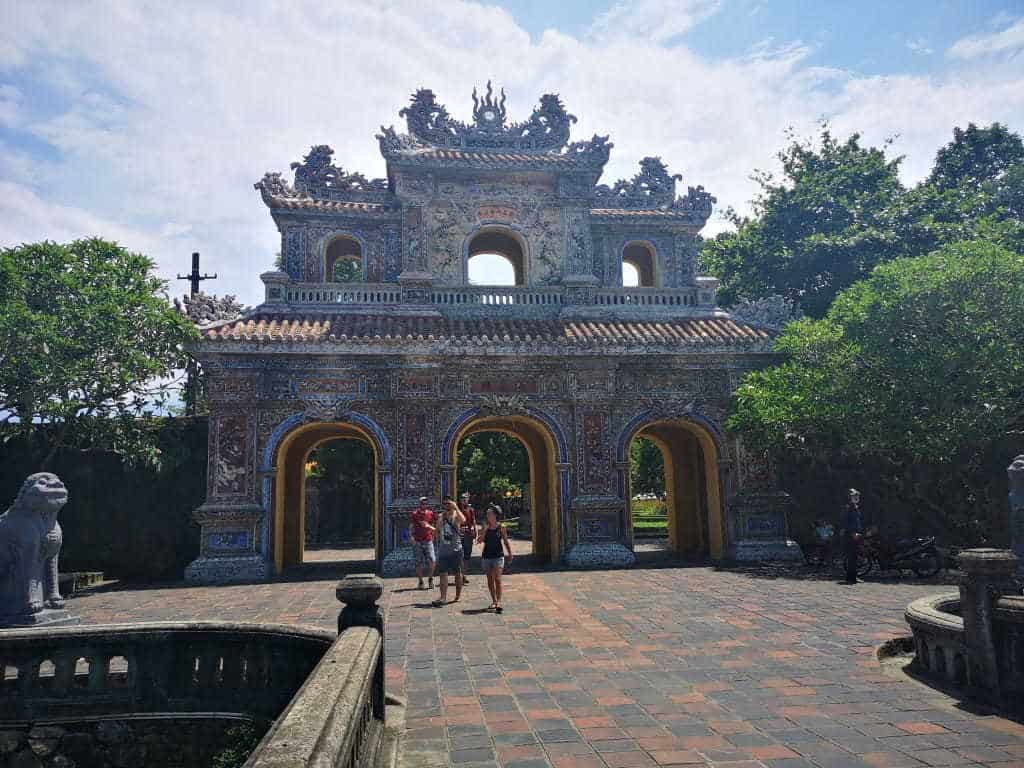
Explore the beautiful city, and enjoy some rest and relaxation at the beach, sitting on beach chairs and drinking cold coconuts.
The old town is simply stunning. As you walk around you’ll pass stores selling little souvenirs, great restaurants, and lots of clothes.
Hoi An is the place to be if you want to have some clothes made. Tailors are everywhere, and prices are affordable.
Make sure to head out into town at night, as the city lights up with hanging lanterns, and comes alive with markets, street food, and people.
While out and about visit the wooden Japanese Covered Bridge from the 18 th Century, and take a boat ride up the river to get a better view of the lights.
Use Grab or take a taxi or scooter and head to the beach. You can sit at one of the many restaurants, use their lounge chairs and stay all afternoon soaking up the sun!
Where to stay in Hoi An: Spend the night in Hoi An, and fly from nearby Da Nang to Ho Chi Minh City the next morning.
READ MORE: Add these things to do in Hoi An to your itinerary !
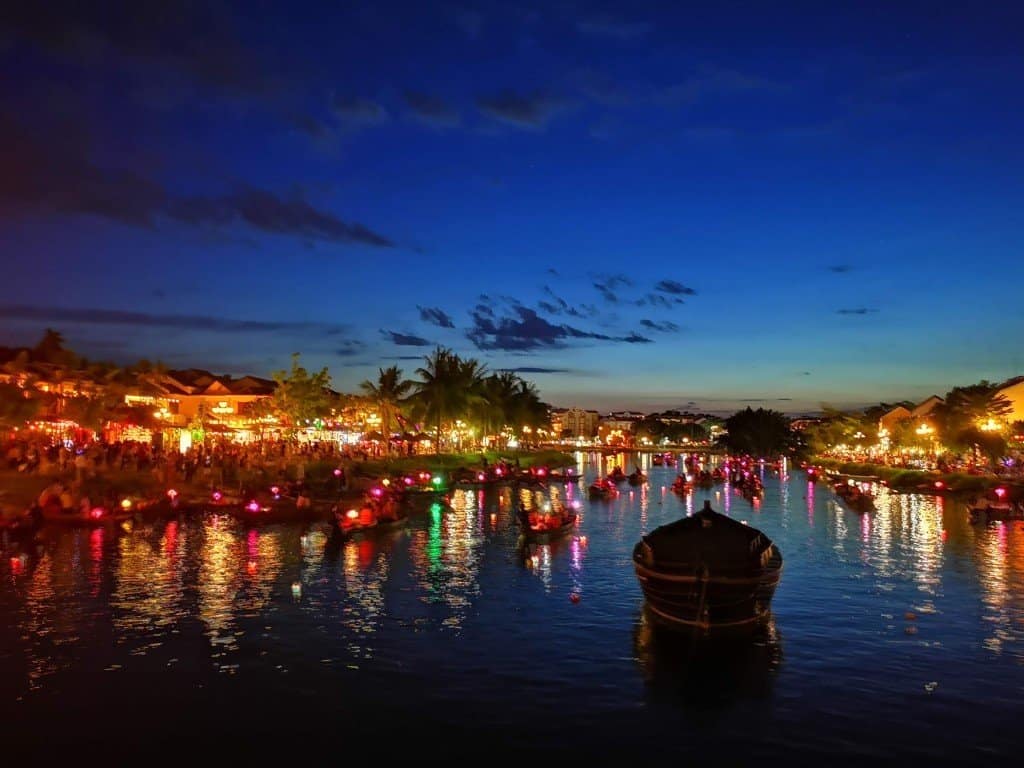
After experiencing incredible Hoi An, it’s time for one last big effort as we reach the home stretch of our 10-day itinerary.
Our time allows for one of two tour options, or if you have an extra day, both.
Vietnam’s largest city, Ho Chi Minh, is a bustling array of buildings, people, food and scooters!
Saigon is where a lot of ex-pats live as it offers so much variety and, like New York, the city never sleeps!
These are your last couple of days in Vietnam, and there is plenty to see. The Vietnam War Museum, Notre Dame (yes they have one too!), the beautiful Central Post Office, and Independence Palace are all must-see destinations while in HCMC.
One of the things to do in Ho Chi Minh City is to head to Bui Ven Walking Street , where all the action happens.
After dark, this street is packed with people sitting at small plastic tables and chairs sinking beers, eating street food, and people-watching.
After a few beers and some food, head back to your hotel and get some rest before your flight home.
READ MORE: Consider these 8 day trips from Ho Chi Minh City .
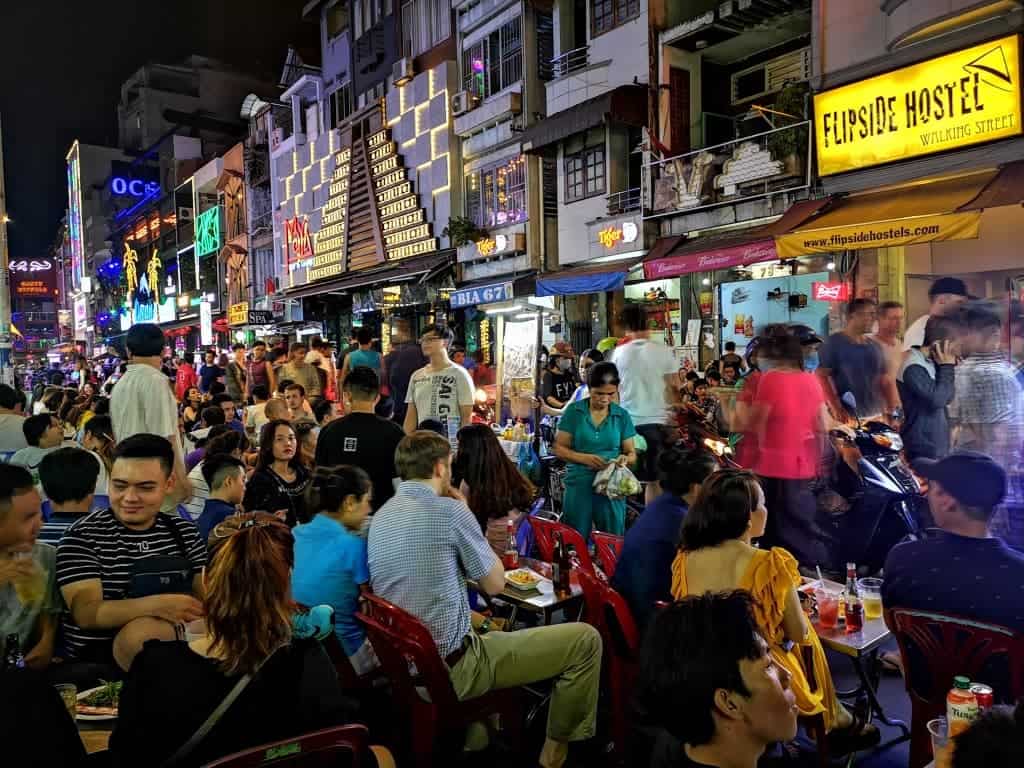
The Cu Chi Tunnels
Even if you’re not particularly interested in Vietnam’s war history, this is an interesting place to visit.
There are two different locations, Ben Dinh and Ben Doc .
Most tour companies usually head to the one closest to the city, Ben Dinh, which is also the largest.
The Tunnels offer an interesting insight into what it was like for the people fighting in the Vietnam/American War, their living conditions, and how they used the tunnels to hide underground during the day and fight the enemy at night.
Today you can go into some of the tunnels, which have been widened for westerners to fit in.
You can only visit the tunnels with a guide, which is provided as part of the entry ticket or part of your tour .
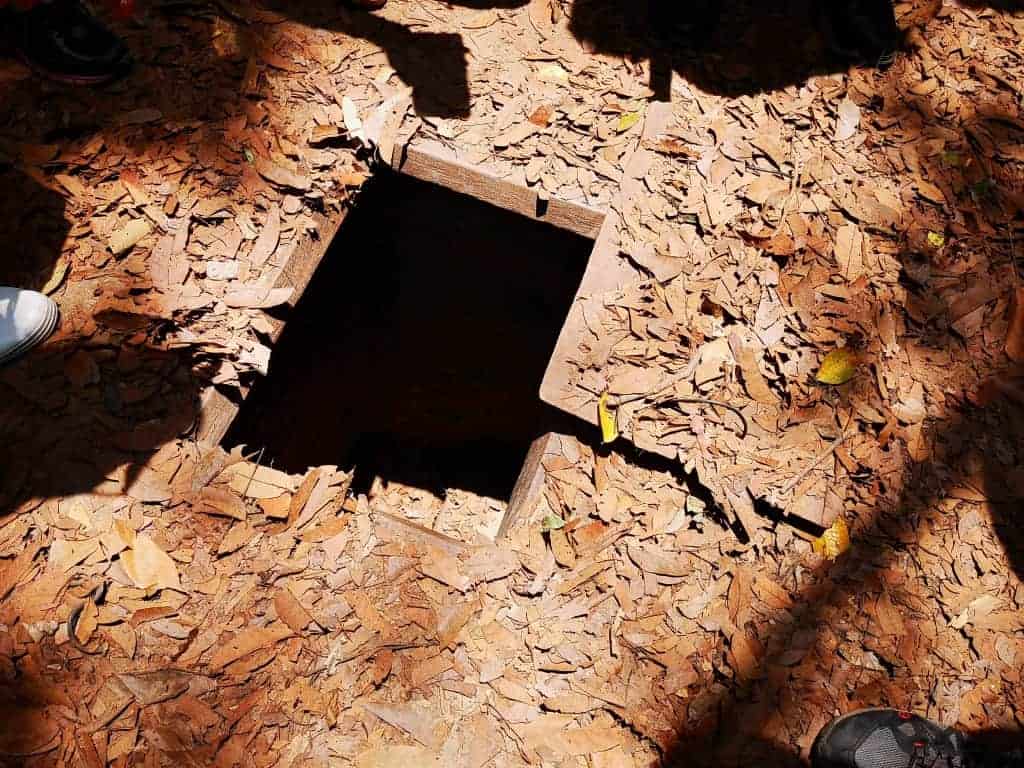
The Mekong Delta Tour
If small little tunnels aren’t your thing and you would prefer to take a pleasant boat ride down the Mekong river instead, there are half-day tours available from Ho Chi Minh City to the Mekong Delta.
Mekong Delta tours usually include exploring small canals by a sampan boat, visiting villages and islands, sampling exotic fruit and touring a coconut candy farm. Yum!
Where to stay in Ho Chi Minh City: For your two nights in Saigon, stay in District 1 to be right in the middle of everything, District 3 if you’d like a more relaxed stay that’s still only moments away from the action or District 4 for a real local experience.
Extension Option
If you’re able to extend your tour to 2 weeks in Vietnam, you’ll have more time for these excursions. Any 2 week Vietnam itinerary should include these!
Da Nang has lots to offer . If you are comfortable on a scooter or motorbike, you can ride from Hue to Da Nang (before going to Hoi An), through the Hai Van Pass .
This route used to be a little dangerous due to all the cars and trucks using the pass.
But since they have built the new freeway and tunnel there is very little traffic, making it a very enjoyable and incredibly scenic ride.
The best way to do this is by motorbike tour from Hue, to either Da Nang or to Hoi An, or in reverse.
Setting out from Da Nang, Ba Na Hills is a scooter ride away. You may recognize the bridge seemingly held up by two large hands.
Between Da Nang and Hoi An lies Marble Mountain , and to the east of Da Nang there’s a large Buddhist temple complex and pagoda called Chua Linh Ung .
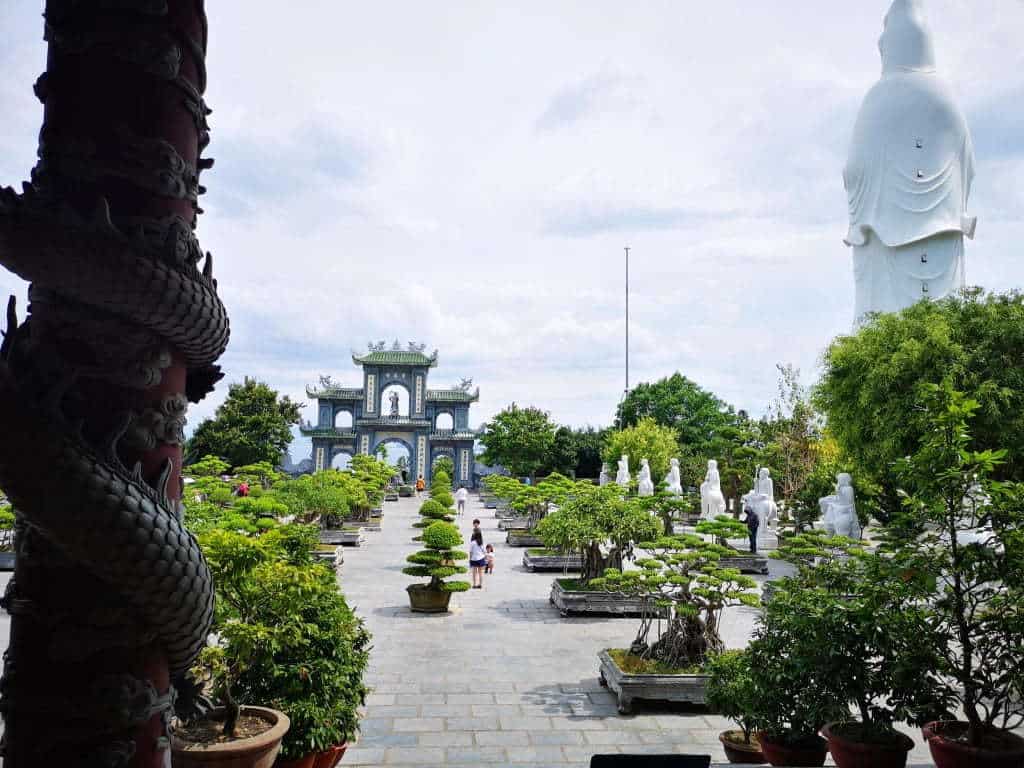
If you have longer in Vietnam and would like to explore more of this beautiful country, combine our North and South options below to create a 2 weeks in Vietnam itinerary.
2 Week Vietnam Itinerary – 1 Week in the North
Start your 2 weeks in Vietnam in Hanoi, Vietnam’s capital city, with beautiful architecture, culture, and food.
While in Hanoi don’t forget to try egg coffee, fresh beer (Bia hơi), and especially the regional dish of Hanoi, Bun Cha . (See Above 10-day Vietnam Itinerary)

Where to stay in Hanoi: Spend the night in Hanoi. We recommend staying right in the Old Quarter.
Ha Long Bay, with its beautiful limestone islands, is on the UNESCO World Heritage List.
It’s a must-see while in Vietnam, with an overnight boat tour to the islands, and other fun activities like SUPing, kayaking, and exploring caves.
The easiest way to see Ha Long Bay is to organize a tour from Hanoi . (See Above 10-day Vietnam Itinerary)
Where to stay in Ha Long Bay: Spend the first night at Ha Long Bay, preferably on board a junk boat. Alternatively, spend the night on Cat Ba Island . Return to Hanoi, and spend the second night there, ready to head to Sapa in the morning.
Think of beautiful rice terraces set high up in the mountains, trekking, and staying in mountain lodges.
Sapa is located in the northwest part of the country, and best seen by a two-day tour from Hanoi. (See Above 10-day Vietnam Itinerary)
Where to stay in Sapa: Spend two nights in Sapa. Consider a mountain lodge for the true Sapa experience, and then hop on the bus back to Hanoi early the following day. Then fly from Hanoi to Hue.
If you would prefer not to fly, you can take an overnight train or bus from Hanoi to Hue instead, arriving in the morning of Day 7.
The old imperial city still has many secrets to uncover.
Hidden behind towering walls and large gates, you can explore where the last Emperor ruled from before abdicating his rule in favor of Ho Chi Minh.
This is where the North Vietnamese overtook the city, sparking a battle that lasted for almost a month in what was known as the Tet Offensive. (See Above 10-day Vietnam Itinerary)
Where to stay in Hue: Spend the night in town. Leave your bags at your hotel while you explore the city the next morning, then head to Hoi An after lunch.
The most spectacular way is on a motorbike tour through the Hai Van Pass . The operators will take you on the back of a motorbike, and deliver both you and your luggage to your hotel in Hoi An.
Head to the beach during the day and relax on one of the many lounge chairs offered by the restaurants lining the foreshore of Central Vietnam.
In the evening enjoy the magical old town that comes alive at night with lights, markets, food, and more! (See Above 10-day Vietnam Itinerary)
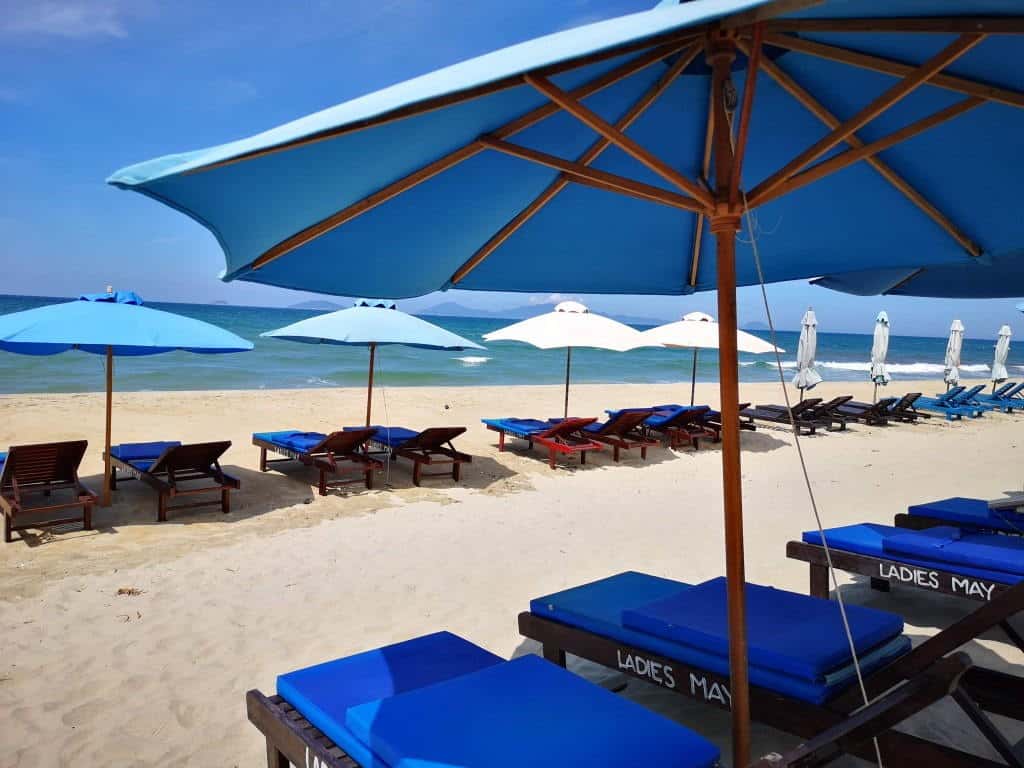
Where to stay in Hoi An: Spend the night in Hoi An, and fly from nearby Da Nang to Ho Chi Minh City, or head to Nha Trang to link up with the Southern Vietnam Itinerary below.
READ MORE: Add these things to do in Hoi An to your 2 week Vietnam itinerary!
Extension Options
If you want more time in the north during your 2 week Vietnam itinerary, add on these trips such as Ninh Binh and some cool national parks.
Considered the inland version of Halong Bay, Ninh Binh is best seen by boat, on a pushbike, or scooter.
We spent two full days in Ninh Binh and enjoyed a pushbike ride in the surrounding area.
We then hired a scooter in Ninh Binh and set out to see more of the beautiful lush hills, taking a boat ride through Tam Coc, and visiting pagodas.
You can easily book an awesome 2-day, 1-night tour of Ninh Binh from Hanoi if you’re not comfortable riding a scooter in the crazy Vietnam traffic.
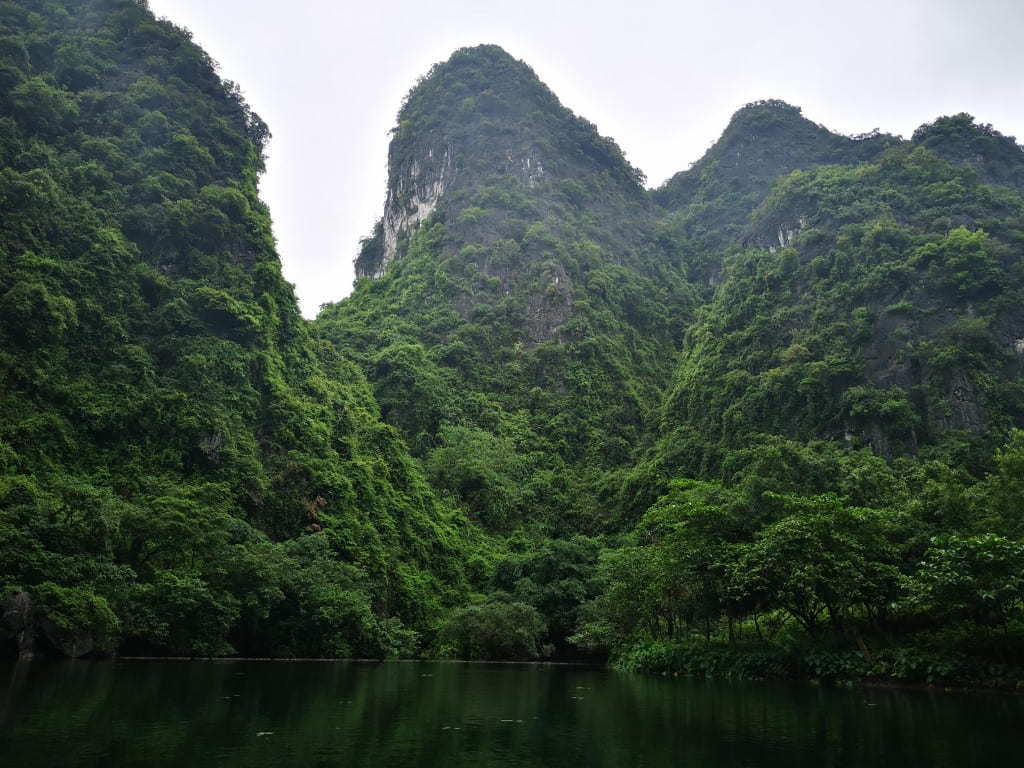
Phong Nha – Ke Bang National Park is home to over 300 caves and grottoes. This UNESCO World Heritage Site protects the oldest karst system in Vietnam.
It comprises of a precious ecosystem, limestone forest, and the world’s largest cave, Son Doong .
The park offers eco-tourism, mountain climbing, trekking, flora and fauna, and caving.
Some of this can be done independently, but tours are often the best option to get the most out of your time.
The My Son ruins are another important UNESCO World Heritage site in central Vietnam.
This temple complex was built by the Champas during their rule, and was influenced by Hinduism.
The ruins of the brick temples and sculptures are often likened to Angkor Wat in Cambodia or Bagan in Myanmar.
Book a tour of My Son to make the most of your experience.
Ba Be Lake is the centre of the National Park, and of the Ba Be Lake legend.
People believe that the lake was formed by an enchantress, who cursed the people of the surrounding area for not showing compassion to her when she asked for help.
Legends aside, Ba Be Lake offers a wide range of activities, from trekking, kayaking, motor-biking, waterfalls, caves, and the natural beauty and diversity of the area.
The highest point of Bach Ma National Park is the 1450m high mountain of the same name.
The park is known for its biodiversity, with lots of birds, flora, mammals, and primates.
The government finally protected the area in 1962, after the area was greatly damaged due to the use of agent orange during the Vietnam War.
The area is now safe for people to explore and is best seen with a tour guide .
You can hike the Five Lakes Cascade Trail taking in the waterfalls, visit the monastery, and hike the Pheasant Trail .
A visit to the demilitarized zone (DMZ), is a great one-day outing for history buffs.
The DMZ area was the dividing line between North and South Vietnam during the war, and as a result, saw heavy fighting.
The tour explains the extent of the fighting in this area, and the importance of the location in the Vietnam War.
2 Week Vietnam Itinerary – 1 Week in the South
Next on your 2 weeks in Vietnam, spend 1 week in the south of Vietnam. You could easily spend 2 weeks in Vietnam in just the north or the south, but you can also spread out your time between both areas.
Our Southern itinerary begins in Nha Trang. Either fly there from Saigon or Hanoi, or take a bus down from Hoi An if you’re continuing on from our Northern Itinerary.
Nha Trang is the most famous seaside resort in Vietnam and is known for its white-sand beaches, coastal islands, and clear waters with abundant marine life, making it perfect for scuba diving and snorkelling.
The town itself also offers interesting cultural sites close by, and places where you can pamper yourself with a mud-bath, or enjoy a seafood dinner.
Where to stay in Nha Trang: Spend a night in Nha Trang, and take a bus or private car to Dalat the next morning.
After a relaxing time on the beach, it’s time to get some more culture in during your 2 week Vietnam itinerary!
Dalat is heavily influenced by the colonial period from the French occupation, as the French built their holiday homes here to take advantage of the temperate weather.
With beautiful buildings, gardens, interesting architecture, coffee and tea plantation tours, waterfalls, mountain biking, hiking, and canyoning , you don’t want to miss out on this city!
Where to stay in Dalat: Spend the night in Dalat, and take a bus or private car to Mui Ne the next morning.
READ MORE: Learn more about what to do in Dalat with our Dalat city guide .
Three main things are offered in this beautiful resort destination; relaxation, watersports, and sand dunes.
Mui Ne beach is dotted with resorts, hotels, and hostels, and is a great place to just sit and enjoy your surroundings.
Although Mui Ne is more than just the beach, this area is set up for tourists and has one main street of shops, cafes, bars, and shopping.
Being a beach town, watersports are a big thing here, and just about everything is on offer from kitesurfing to parasailing.
The Mui Ne sand dunes are popular, and a spectacular sight.
There are two locations, the smaller, closer, red sand dunes, and the white sand dunes about 26km from town.
Tours are available for both locations and you can also hire dune buggies, or go sledding!
Where to stay in Mui Ne: Spend a night in Mui Ne, then shake the sand from your belongings and take a bus or the train to Ho Chi Minh City (Saigon) the next morning.
There’s so much to see and experience in this historic city, including day tours to some pretty important locations, that you’ll need two days .
On the first day, you’ll head out into Ho Chi Minh City. It has some great cultural sites, like the Vietnam War Museum, Independence Palace, Notre Dame, and it also boasts some pretty great nightlife too.
For the second day, we suggest you head out of the city on a day tour. There are two great options: The Chu Chi Tunnels, or a trip to the Mekong Delta. (See Above 10-day Vietnam Itinerary)
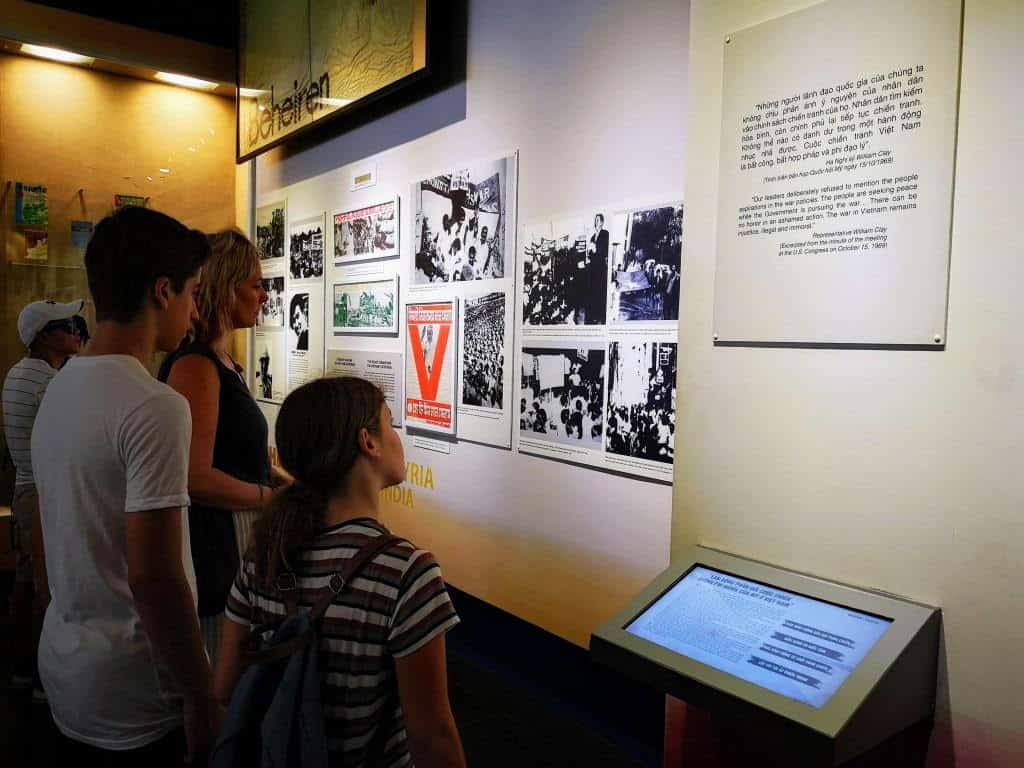
Where to stay in Ho Chi Minh City: For your two nights in Saigon, stay in District 1 to be right in the middle of everything, District 3 if you’d like a more relaxed stay that’s still only moments away from the action or District 4 for a real local experience. Fly to Phu Quoc Island on Day 6.
Phu Quoc is a small island off the coast of Cambodia, lined with white sand beaches and palm trees.
There are many resorts along the southwest coast providing you with ample opportunity for some relaxation time, while you swim, and eat your last fill of tasty Vietnamese food.
Phu Quoc island is home to mountains, tropical rainforest, hiking and wildlife, all within its National Park.
Lots of tours are available to explore the island which offers snorkelling as well, or you can hire a scooter and set off by yourself.
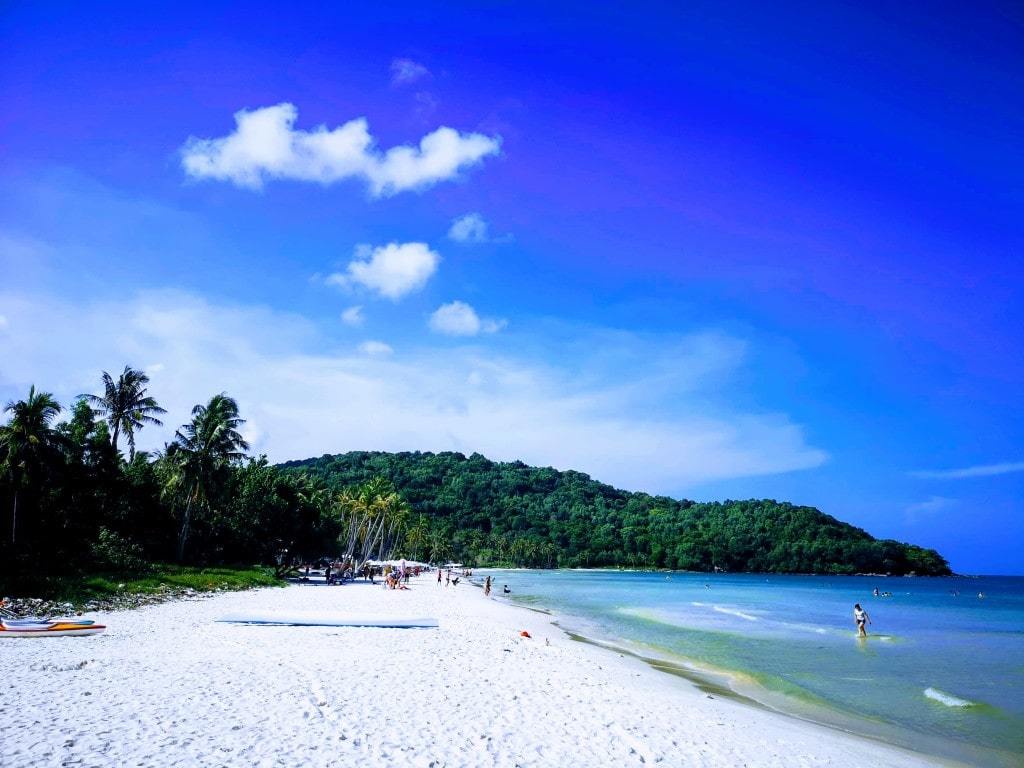
Where to stay in Phu Quoc Island: Spend two relaxing nights on Phu Quoc Island, then fly back to Saigon to catch your onward flight!
If you have more time to spend during your 2 weeks in Vietnam, take the ferry to the mainland, and continue overland to some of the extension options listed below, or to Cambodia.
If you have more time for your 2 week Vietnam itinerary, or you want to further explore one area rather than hopping around, here are some ideas!
Depending on what you did in 7 days for our Southern Vietnam Itinerary, if you have time you might like to see the other option best explored out of Ho Chi Minh City. (See Above 10-day Vietnam Itinerary)
During the French occupation, and later the Saigon regime, this island was used to house political prisoners and prisoners that were considered especially dangerous.
Aside from its harrowing past, the island is known for its natural beauty with over 80% of the island being a National Park.
These days the island is frequented for its spectacular snorkelling and diving, with abundant coral reefs, beautiful beaches, and hidden lagoons.
Can Tho is the de facto capital of the delta region and an unassuming city full of life.
Most of the activity happens around the pier where you can enjoy great food and cold beer.
Boat rides are available to show you more of the city and surrounding area, and visit some early-morning markets.
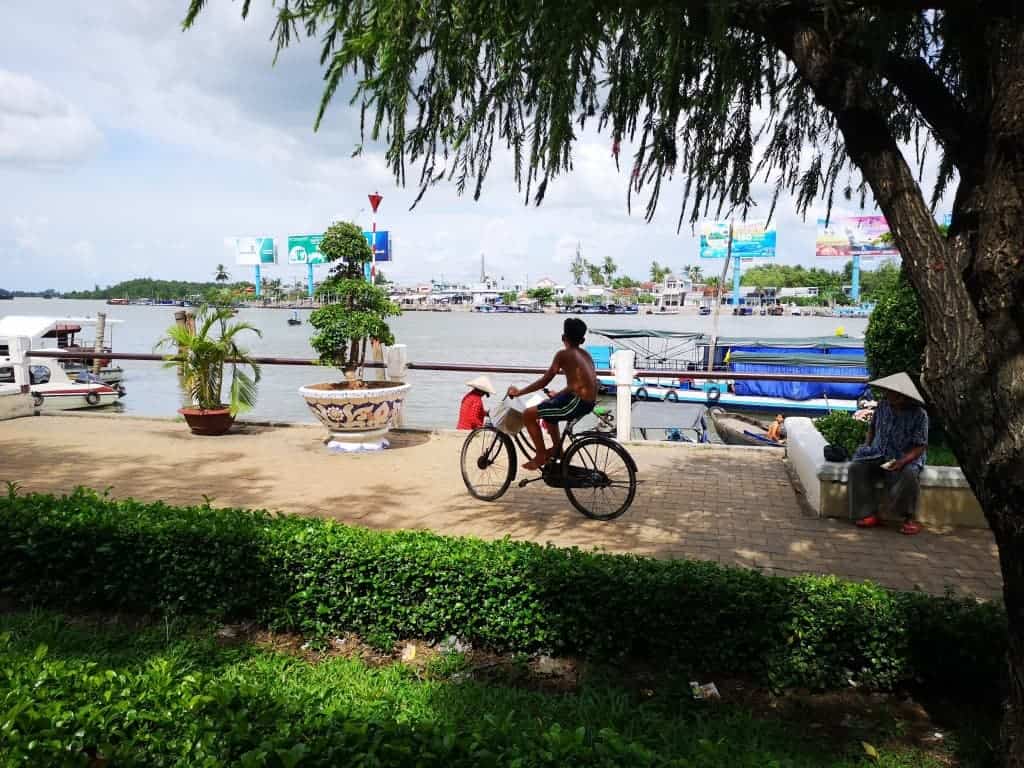
If you’d like a little break from the tourists and are looking to just relax and hang out with the locals, Qui Nhon is the place to come .
Unspoiled by tourism, this sleepy town has squeaky white sand beaches, snorkeling, swimming, temples, and museums.
Cat Tien National Park is comprised of two sections Cat Loc, and Nam Cat Tien, the former being the most visited of the two.
The river by Nam Cat Tien houses an important Hindu archaeological site and temple, where a large number of artifacts have been uncovered and are now in the Dalat museum.
The national park has spectacular flora and fauna and trekking.
READ MORE: 33 amazing things to do in Vietnam !
Vietnam is a large and diverse country, with a great deal to offer the traveller who goes in with an open mind and heart.
While we’ve listed what we feel are the main highlights, there is much more to be explored when you visit Vietnam.
Friendly people really make Vietnam a special place to visit.
The itineraries listed above are a bare minimum if you need to get the most out of a short amount of time.
While doable, if possible it would be a much more relaxing trip if you could pad it out by adding a few days to your Vietnam itinerary, and slow down a little!
We hope you have a wonderful time there!
DISCLAIMER: Some of the links in this article are affiliate links, which means if you book accommodation, tours or buy a product, we will receive a small commission at no extra cost to you. These commissions help us keep creating more free travel content to help people plan their holidays and adventures. We only recommend the best accommodations, tours and products that ourselves or our fantastic editorial team have personally experienced, and regularly review these. Thanks for your support, kind friend!
Hi, We’re Alesha and Jarryd!

We’ve been traveling the world together since 2008, searching for the planet’s best destinations and adventures.
Love Travel?
Sign up for our free weekly newsletter for the best travel tips, ideas and deals!
We respect your privacy. Unsubscribe at any time.
READ MORE...
25 BEST Things to Do in Hue, Vietnam (2024 Edition)
Canyoning In Dalat – What It Is Really Like
A First-Timer’s Guide to Trekking in Sapa
Related Posts
33 best things to do in vietnam (epic 2024 guide), 40 photos that prove why vietnam is simply awesome, dear phong nha…we love you – a photo essay, tu lan cave trekking tour photo essay, 1 thought on “the perfect vietnam itinerary for 1, 2, or 3 weeks”.
Hi, I was wondering how much the 10 day option costs roughly in AUD? Cheers!
Leave a comment Cancel reply
Save my name, email, and website in this browser for the next time I comment.
23 things to know before visiting Vietnam

Aug 7, 2023 • 9 min read

Read on for all the key things to know before you visit Vietnam © Elizaveta Galitckaia / Shutterstock
Adventures abound in Vietnam . You can climb the heights and scuba dive the lows, immerse yourself in culture or just kick back on the sand, confident in the knowledge that a fantastic meal is waiting for you at the end of the day. But there are things to know before you go, to avoid pitfalls in paradise. These are our top tips.
1. Pack for the climate
Perhaps the most important consideration when planning a trip to Vietnam is the weather. The south of the country sits firmly in the humid tropics, but the climate becomes increasingly temperate as you head north, and the highlands around Sapa can be downright chilly in winter. If you plan to visit both halves of the country, bring some clothes for the cooler highlands as well as the steamy Mekong Delta .

Explore related stories

Wildlife & Nature
Aug 12, 2024 • 12 min read
Quiet and culturally rich Laos has lots to offer – much of which you won’t find anywhere else in the world.

Aug 7, 2024 • 8 min read

Aug 5, 2024 • 6 min read
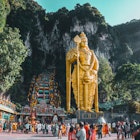
Jul 25, 2024 • 7 min read

Jul 25, 2024 • 10 min read
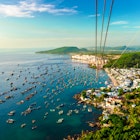
Jul 12, 2024 • 7 min read

Jun 15, 2024 • 9 min read

Apr 8, 2024 • 6 min read

Mar 14, 2024 • 10 min read

Feb 24, 2024 • 8 min read
- Join as a Workawayer
- Join as a host
- Buy a gift membership

50,000+ projects
local communities, individuals and families
162 Countries
for volunteering, working and cultural exchange
604818 Feedbacks
the world‘s leading community
Low cost travel
without having to pay expensive agency fees
Volunteer and work in Vietnam - low cost travel abroad - Workaway!
Here at Workaway you will find 75 hosts and organisations for volunteer work in Vietnam. Low cost travel without having to pay expensive agency fees.
Vietnam
Travel to regions in Vietnam
- Central Highlands (12 )
- Mekong River Delta (3 )
- North Central (3 )
- Northeast (16 )
- Northwest (3 )
- Red River Delta (12 )
- South Central Coast (12 )
- Southeast (10 )
Latest from our community in Vietnam
See the latest updates and news from our hosts in Vietnam
Checkout new hosts that have signed up and are offering volunteering spots
Connect with Workawayers travelling to Vietnam and looking for travel buddies
Feedback from Workaway members
There are 982 reviews for 66 Hosts and organizations in Vietnam. 66 Hosts in Vietnam were rated at least 4.8/5!
Our month-long stay with Anh and her family was an absolute delight. We had our own private room, providing ample time for personal pursuits. Anh's co...
read more...
by Josiah & Meghma , 18 Aug 2024
I enjoyed my time on the farm immensely! I spent two weeks here which provided many opportunities to exchange with both international and Vietnamese v...
by Andrew , 17 Aug 2024
It was fantastic! Kevin and Leo have been working for 5 years to build up these english courses for children. I had a wonderful experience with the ki...
by Kevin , 9 Aug 2024
This was our first work away experience, we stayed at the resort with Steve and his staff for a month and a half and has been an experience we'll neve...
by Fabio & Silvia , 6 Aug 2024
Thuy is an amazing host and the volunteering experience was great. We helped with English classes by creating presentations for the students, talking...
by Stash , 3 Aug 2024
Registering as a Host
Registering as a host with workaway.info is completely free of charge.
Workaway.info has been set up to promote and encourage exchange and learning. Hosts on Workaway should be interested in cultural exchange and sharing experiences. They should be able to provide a welcoming friendly environment for visitors as well as offering accommodation and food.
Workaway benefits
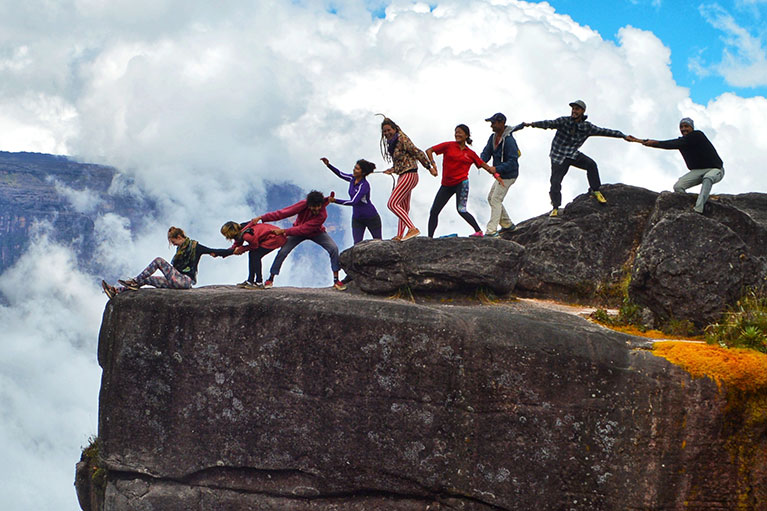
Popular Hosts and organizations in Vietnam
Hostel (17), family (15), school (11), individual (10), farmstay (9), community (6), sustainable project (5), animal welfare (1).
Your next adventure begins today
Join the Workaway community today to unlock unique travel experiences with over 50,000 opportunities around the globe.
Forgotten your password?
Workaway has committed over $20,000 USD from the Workaway foundation to help refugees from Ukraine.
Upon request all workawayers based in Ukraine will have their accounts extended for free until further notice.
Hosts in Ukraine have been temporarily disabled for safety reasons.
If you are a host and are able to take in refugees please add the information in your account and you will be added to our last minute host list .
Should you wish to donate and help please click here .
12 Best Places In Vietnam | Bucket List Destinations 2024
Vietnam – the next top destination.
Why visit Vietnam? Vietnam is at that sweet spot as a travel destination where unique luxury resorts meet cheap street eats, where untouched rural nature gems are increasingly well connected to hyper bustling cities.
On the cusp of becoming the next top global travel spot, Vietnam offers an array of holiday options. From pristine beaches to historic sites, from mountain ranges to skyscrapers, these are the top 12 best places to visit in Vietnam.
Table of Contents
Majestic mountain destinations.
For a country strongly associated with the hot, humid, equatorial climate and flat landscape of Ho Chi Minh City, actually, Vietnam has many amazing mountains to offer.
Most of the mountain ranges lie in North Vietnam, the tallest peaks are close to the Chinese border. You can even experience snow here during winter. Central Vietnam is also home to some mountains, offering a refreshing escape from the surrounding cities.
1. Fansipan, Sa Pa
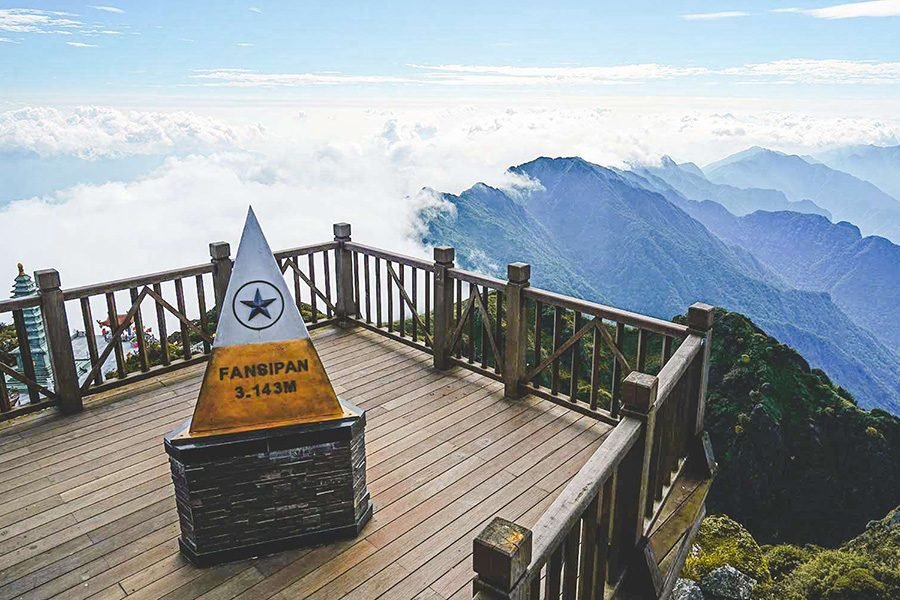
Fansipan is the tallest peak in Indochina, often called the roof of Indochina, standing at an impressive 3147 metres in height.
Adventure lovers should take hiking Fansipan as a challenge in stride, with options to conquer it in a day, or two days with camping. From the peak, you will get incredible sweeping views of Sa Pa , of rice paddies etched into the mountain ranges, buffalos and children at play, and unique villages belonging to the ethnic minorities.
There is also an easy way to the top – by cable car! If you choose this method, you will find a scenic landscape complex comprising of temples, amusement areas, and restaurants.
Fansipan is 9 kilometres away from Sa Pa town, a mountain town, which most foreign tourists used as a base to visit the Lao Cai province region, one of the most remote and untouched places to visit in Vietnam.
Love hiking in mountainous paradises? Check out our article on the best hiking and trekking in Sapa Vietnam
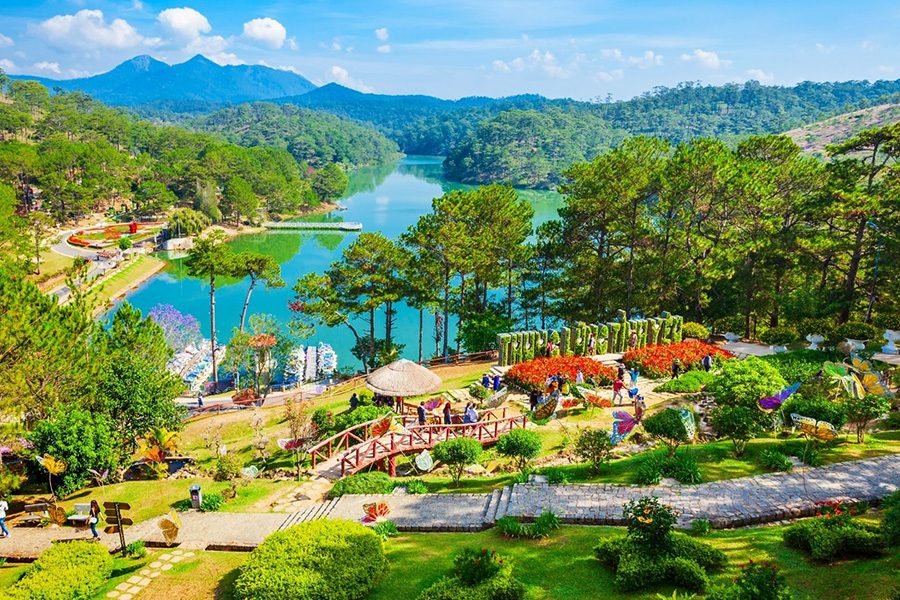
Based in Ho Chi Minh City and looking to escape to the mountains? The good news is Da Lat is just around the corner.
Da Lat is one of the popular tourist destinations from Saigon because of its ideal temperate climate. Sitting at 1,500 metres above sea level, Da Lat is a blend of natural beauty and man-made landmarks. Come here to visit beautiful flower gardens, wild pine forests, and vast peaceful lakes.
Da Lat is the fresh food capital of the country, coffee, wine, strawberries, avocados, and many other fruits and vegetables, are all grown in this fertile area. Make sure you set aside some time to visit the local market to taste everything the region has to offer.
Hungry for more? Explore the best food in Da Lat.
3. Ha Long Bay
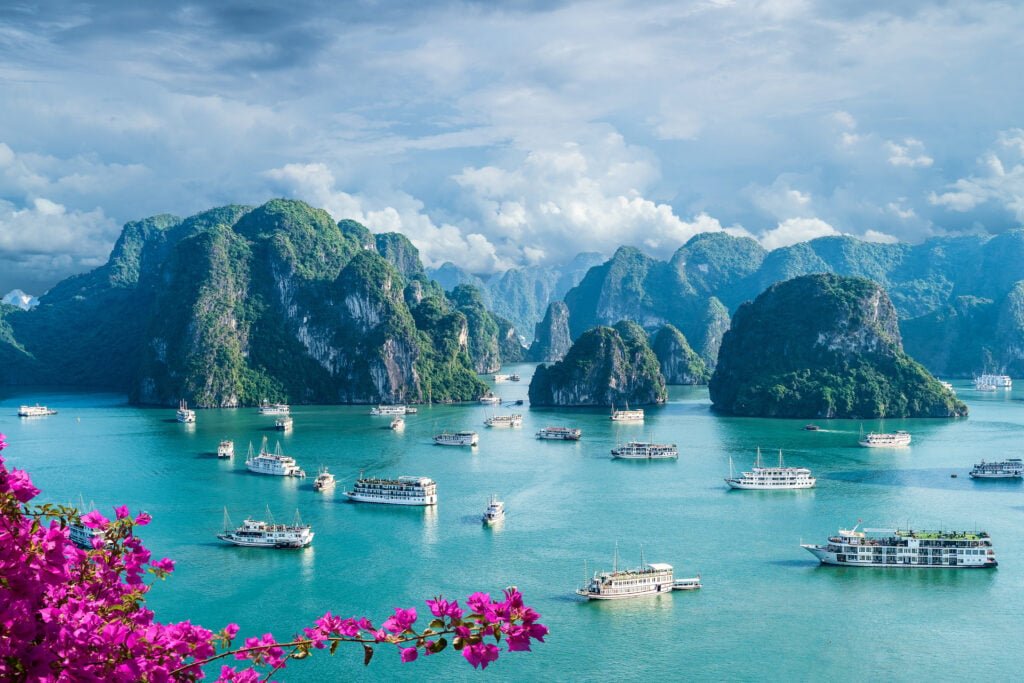
Ha Long , a UNESCO World Heritage Site, is a place of mystical beauty, a myriad of limestone karsts and blue waters. Legend has it that this is the place where dragons decided to descend to rest, as ‘ha’ means to descend in Vietnamese, and ‘long’ is dragon.
Taking an overnight cruise through the ancient channels of Ha Long Bay is the best way to explore this breathtaking wonder of the world. There are 3 general zones of travel – the three neighbouring bays of Halong Bay, Lan Ha Bay, and Bai Tu Long Bay.
Visitors are free to explore thousands of limestone mountains and islands of Ha Long Bay, with plenty of opportunities to go swimming, kayaking, or caving. One can also visit floating villages, pearl farms, and One could even Sun World Halong Complex, an amusement park in North Vietnam.
Most cruises start off from Cat Ba Island, the largest island in the region. Cat Ba Island will give you a taste of local life and is home to a variety of bars, hotels, and restaurants. It also houses the Cat Ba National Park, which is definitely worth a visit. A trip to Halong Bay isn’t complete without trying out the food. Top dishes include chả mực (squid sausage), sam (horseshoe crab). These specialties are unique to this region of Vietnam.
The legendary beauty of Halong Bay makes it one of the wondrous places to visit in Vietnam.
Planning a trip? Here’s our round-up of the best attractions in Halong Bay
4. Phong Nha Ke Bang National Park
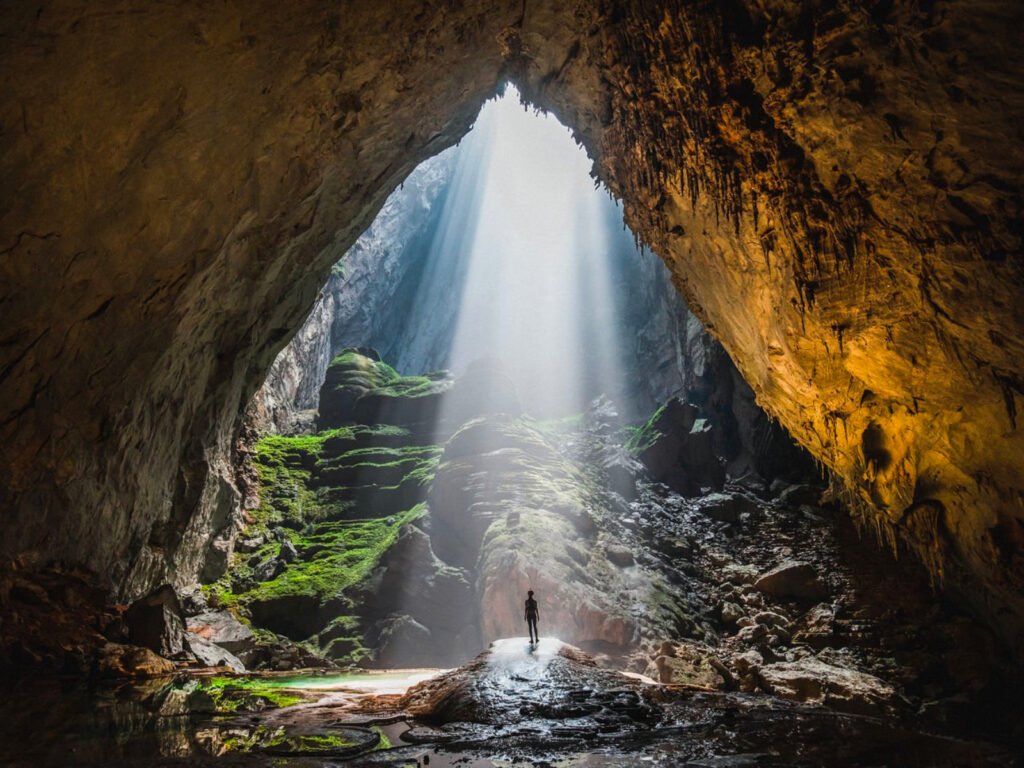
Phong Nha Ke Bang National Park is Vietnam’s well-kept secret. Often skipped over for Halong Bay or Ninh Binh, Phong Nha has a lot to offer. Picture limestone formations, underground rivers, overland lakes, tropical lush jungles, and over 100 kilometres of caves. The natural wonder of Phong Nha is not to be overlooked.
The limestone formations here have evolved since the Palaezoic period, 400 million years ago, making Phong Nha home to the oldest karst mountains in Asia.
The gem of Phong Nha Ke Bang National Park is Paradise Cave, often called the underground royal palace for its majestic awe-inspiring beauty. It is 31.4 kilometres in length and has a height of 60 metres, it is an impressively large cave, and is in fact the longest dry cave in Asia. Filled with stalactites and stalagmites, it is illuminated with floodlights. You can book a tour to go deeper into the cave, and this includes a swim through the underground river and lunch under these ancient rocks.
Sun and Sea Destinations
With well over 3,000 miles of coastline coupled with several reputable island destinations, Vietnam has no shortage of gorgeous beaches. You’ll be spoilt for choice when it comes to white sand beaches , snorkelling, tourist attractions, and all-around tropical paradises.
Whether you are looking for laidback full-service beach resorts or adrenaline-packed water sports, Vietnam has it all.
5. Phu Quoc Island
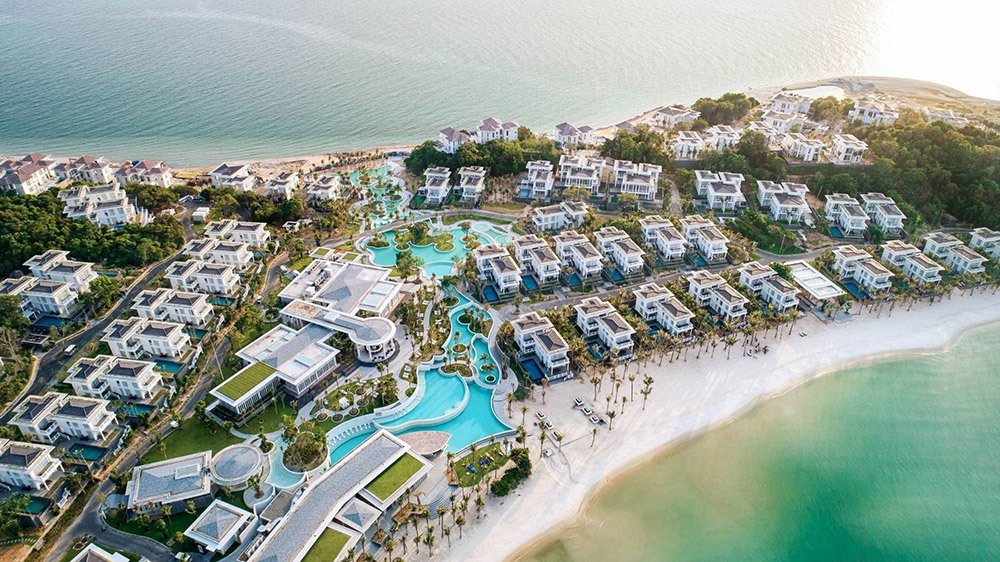
Seating at the tip of southern Vietnam is the idyllic Phu Quoc Island . A densely forested island shrouded by clear blue waters, this beach lover’s paradise is less than an hour’s flight away from Ho Chi Minh City.
The largest island in Vietnam, Phu Quoc boasts infinite stretches of beautiful white sand, thriving coral reefs, and lush green forests, it is also home to a number of Cao Dai and Buddhist temples, vibrant local markets, traditional fishing villages, and pepper plantations – perfect for visitors looking to try their hand at island living.
Of course, the main attraction of this sunny island is its immaculate beaches. Some are quiet pristine white sandy stretches, and some are packed full of life with fishing boats and seafood restaurants. The best way to see some of the loveliest beaches (and sample the catches of the day) is by motorbike, we suggest you take day trips to the northern side and another to the south, to experience them all!
Feel like a vacation in paradise? Check out our guide to the best beaches in Phu Quoc.
6. Con Dao Islands
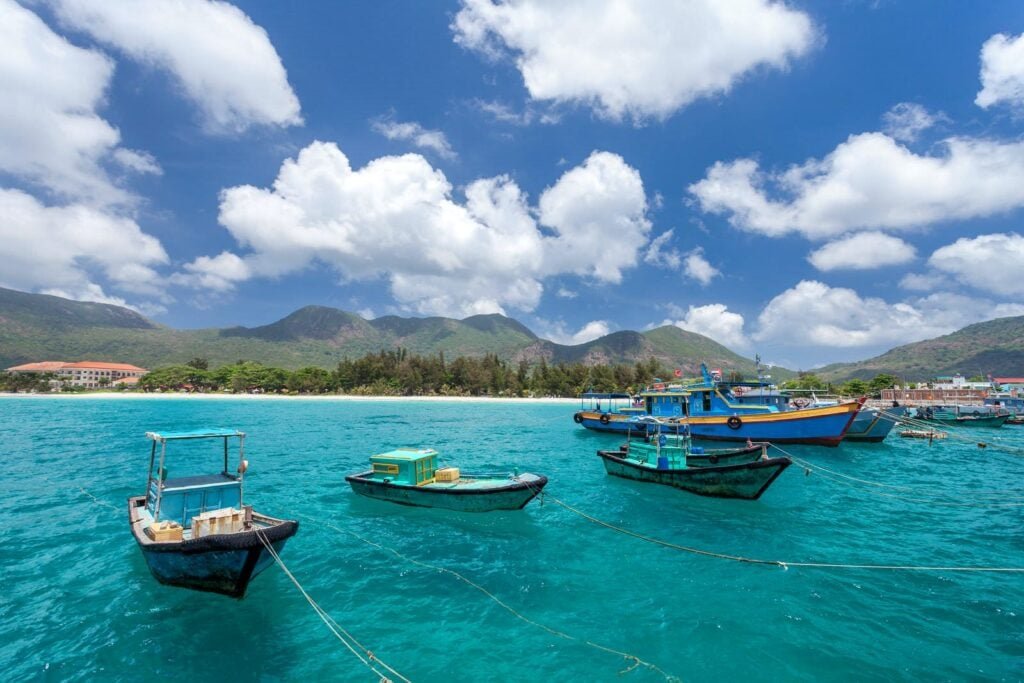
The Con Dao archipelago is a collection of 16 islands famous for its unspoiled beaches and lagoons. The great thing about the Con Dao Islands is that it is off the beaten path and not that easily accessible as one can only reach there by a 45-minute turboprop flight from Ho Chi Minh City.
Con Son Island is the main island in the Con Dao archipelago, with only 5000 locals living there. This rustic getaway is filled with white sand beaches and amazing seafood.
Only a single main road goes about halfway around Con Son, and the best way to get around is of course by motorbike. Catch views of jaw-dropping cliffs, tropical plants, and the perfectly calm sea. Best places to visit include the small fishing village and fresh seafood market.
War history is embedded into the everyday life of Con Son Island. During the Vietnam War, prisoners were kept in poor conditions by the French in Phu Hai Prison . The main prison walls is still a landmark in Con Son Town and is regarded as a monument to those who died during the war and to Vietnam’s resilience. Come here to enjoy beautiful beaches while taking in important lessons from history.
Con Doa is a hidden gem. Discover more in our guide to the best activities on Con Doa Island.
7. Nha Trang

Nha Trang offers a six-kilometer stretch of beautiful coastline where one can enjoy a day of scuba diving, swimming, island hopping, or just relax and take in the lovely sunset views. This coastal town has been a well-kept secret of Vietnam and has only recently become a tourist hot spot.
There are also 19 untouched islets that are just a short boat ride away. Popular things to do in Nha Trang include mud baths, cooking classes, bicycle tours, boat cruises, and scuba diving. Nha Trang’s vast countryside is also great for exploring on foot, by bicycle and motorbike. Take a day trip out to find new beaches on the tourist trail.
For those who are looking beyond sunning on the beach, pay a visit to the salt fields at the nearby Hon Khoi Peninsula. Take in the amazing sight of women in conical hats farming salt mounts along the incredible coastline. Otherwise, spend some time at closely historical sites including the Po Nagar Temple , a remnant of the Cham kingdom.
Discover more in our guide to the best beaches in Nha Trang
Culture Filled Destinations
Vietnam is home to some of the world’s earliest civilisations in the early Bronze Age, which started to cultivate rice along its rich and welcoming riverbanks. With this long history and 53 different ethnic groups living here, Vietnam is a fascinating destination to learn about different cultures and ways of life. Travel to understand Vietnamese culture through food, dress, language, architecture, crafts and art.

The ancient imperial capital Hue in Central Vietnam is considered the historic treasure chest of Vietnam, and the top destination to discover the fascinating culture of the country.
Hue was the capital of the imperial Nguyen Dynasty for 143 years till 1945. Sitting on the banks of Perfume river, the waters shroud Hue in charm.
At the heart of Hue is of course the Imperial City – a must-visit for all visitors to this old town. It is ringed by a moat fed by the Perfume River and houses a complex series of gated courtyards, gardens, pavilions and palaces. The most important monument is the Forbidden Purple City, a term identical to the Forbidden City in Beijing, reflecting its Chinese influence. This is the innermost enclave, which was restricted to the imperial family.
In addition, tourists must visit the mausoleums and tombs of old emperors, the Thien Mu Pagoda, and the Trong Tien Bridge.
Central Vietnam has some of the most unique cuisines in Vietnam , here are the must-try dishes of Hue .
9. Mekong Delta

Hailed as the rice bowl of Vietnam, over 50% of the country’s rice is produced in the Mekong Delta. The Mekong Delta has more than 2000 years of history and is home to Vietnam’s early civilisation along its fertile banks. Understand and experience the riverine culture of Vietnam by visiting the Mekong region.
Ben Tre is one of the best places to visit in the Mekong region due to its cultural diversity. Known as Vietnam’s coconut capital, you will see many handicrafts and trade-related to the coconut industry. The lush greenery of Ben Tre also produces plenty of other fruit. Depending on what is in harvest, do make time to visit different fruit farms, and get to experience picking ripe fruit off trees!
The floating markets are a great cultural symbol of the mighty Mekong river, being the trade lifeline of many who have lived along its banks for centuries, and for other seafaring visitors in the region. The Cai Rang floating market is the largest of its kind in the Mekong Delta. Boat trips are the way to go here, jostle with the other boats selling fruits, freshly cooked Vietnamese food, flowers, knick-knacks, and more, and get ready to haggle!
Today, the Mekong remains an important symbol of power and prosperity in Vietnam and is called the ‘River of Nine Dragons’ (Song Cuu Long) in Vietnamese.
Looking for a cultural adventure? Follow our guide to the best things to do in the Mekong Delta.
Amazing City Destinations
Vietnam is a nation developing at a rapid pace. Its cities are overflowing with cultural richness, which includes Vietnamese, Chinese, French, and other global influences.
Cities are attractive to Vietnam’s young, eager, and ambitious population, and the Vietnamese youth flock to the country’s hubs for further education and better career prospects. Likewise, many foreigners come here to join up-and-coming industries. It is no wonder Vietnam’s cities offer an exciting snapshot of ongoing life.
10. Da Nang / Hoi An
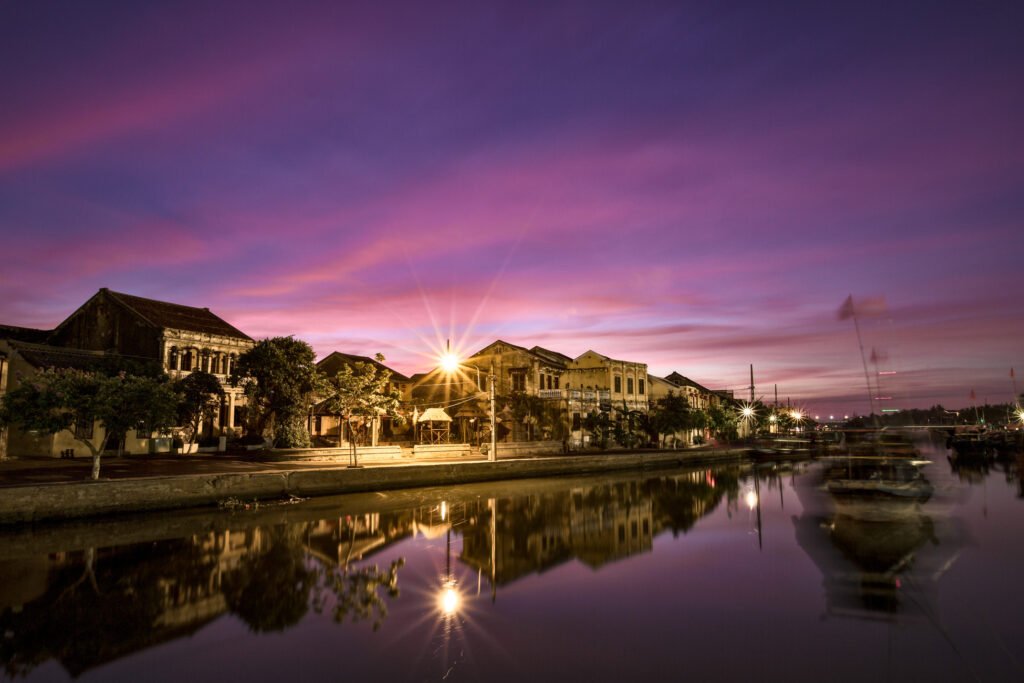
A coastal city along the central coast of Vietnam, Da Nang has something for everyone. A bustling city tropical paradise known for its sandy beaches and history as a French colonial port, it has good restaurants, upmarket shopping, and plenty of cultural sites to visit. Popular beaches include An Bang Beach and My Khe Beach , which are known by travellers of Southeast Asia as some of the most beautiful destinations.
A short half hour’s drive away is Hoi An ancient town, a UNESCO World Heritage Site, and a prime example of a Southeast Asian trading port dating from the 15th century. Its unique architecture includes Chinese assembly halls, French colonial buildings, Vietnamese timber shophouses and the iconic Japanese Covered Bridge.
Both Da Nang and Hoi An are popular bases for visiting the Bà Nà hills to the west of the city. Here the hillside Hải Vân Pass offers stunning views of Da Nang Bay and the Marble Mountains, which are 5 limestone outcrops topped with pagodas and hide caves containing Buddhist shrines. The Ba Na Hills also has the famous Golden Bridge which is a 150-metre-long pedestrian bridge.
Looking for the best spots in Da Nang? Check out the best beaches Da Nang has to offer.
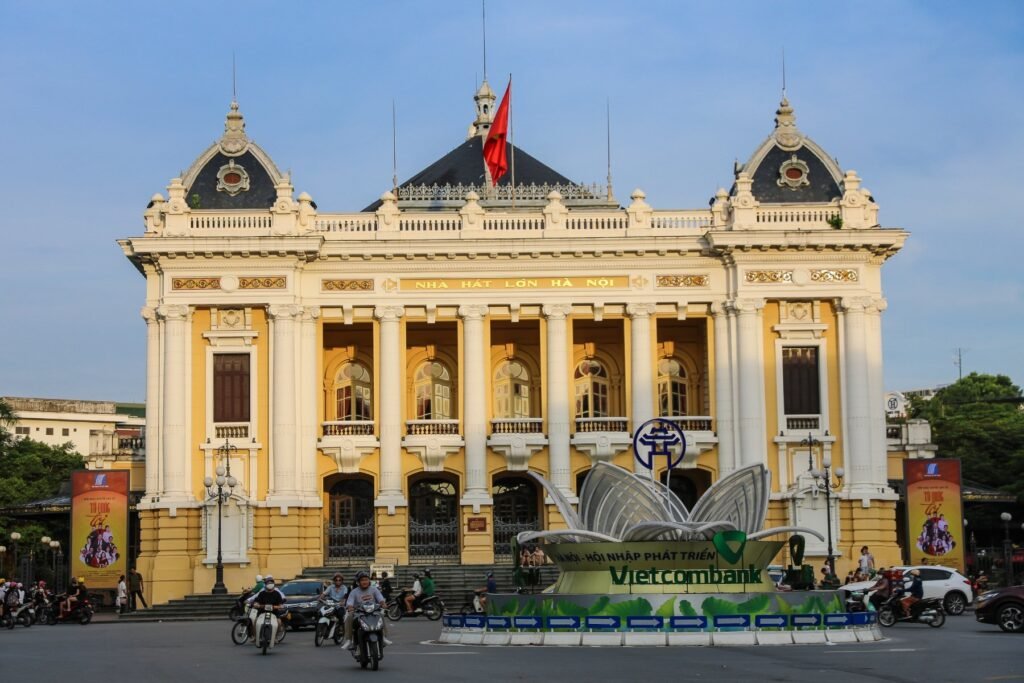
Located in northern Vietnam, the capital city Hanoi is well over a thousand years old. Hanoi offers everything from temples to ancient pagodas, unique art, culture, and amazing wilderness within a day-trip distance.
The old quarter is the heart of Hanoi and also the most fascinating part of this ancient city. The old town is a maze of craft streets, where lanes and lanes of streets specialise in only selling one item. Here you can find silk street, traditional medicine street, paper street, and more.
The history of Vietnamese street hawkers has its origins in pre-colonial Hanoi, and here you can try the widest variety of delicious street food in Vietnam .
The list of things to do in Hanoi is endless. This can include visiting the Ho Chi Minh Mausoleum, The Perfume Pagoda, Hanoi Old Quarter, Ba Vi National Park, Thăng Long Imperial Citadel, and Hanoi Opera House. Traffic is hectic and fast-paced in this bustling city, but you’ll be happy to know that Hanoi can be explored easily on foot or by bicycle, especially the famous and stunning west lake.
12. Ho Chi Minh City

Economic hub Ho Chi Minh City is one of the best places to visit in Vietnam. It’s a place where the old meets the new with striking contrast. Temples are hidden among skyscrapers and cuisines with Vietnamese and global influences are consumed with gusto.
Each district of Ho Chi Minh City has its own unique flavour. District 1 is of course the city center neighbourhood and home to many of the famous historic and cultural sites, such as Ben Thanh Market, the Independence Palace (Reunification Palace), and the War Remnants Museum. It is also wonderful to simply walk around this district and take in the mishmash of brutalist and French colonial architecture.
Take a day trip to Cu Chi Tunnels, to see the large network of tunnels used by Communist troops in the war against Southern Vietnamese and American forces in guerrilla tactics. You can even try to wriggle through one of the tunnels for a memorable experience.
Discover Vietnam
There are endless places in Vietnam to discover. From spots with majestic natural beauty to cities pumping with nightlife, there is something for everyone. This bucket list of 12 best places in Vietnam covers the wide spectrum of delights Vietnam has to offer.
Whether you are an expat living in Vietnam, a holidaymaker planning your next heart-stopping vacation, or simply someone who is curious about Vietnam, discover the culture of Vietnam in our handy guide.
If you want to have a staycation in Saigon , but still want to be underwater, and to explore a scenic view of the skyline, be sure to check out these awesome rooftop swimming pools .
Our publication is powered by our community. Join the conversation on Facebook.

Written by My Huynh
Join our community for free and unlock exclusive benefits.
We extend our thanks to our Ambassadors for their contributions to this post

You might also like

Top Cities in South Vietnam: The Ultimate Travel Guide

Central Vietnam Guide: 7 Must-Visit Destinations Await!
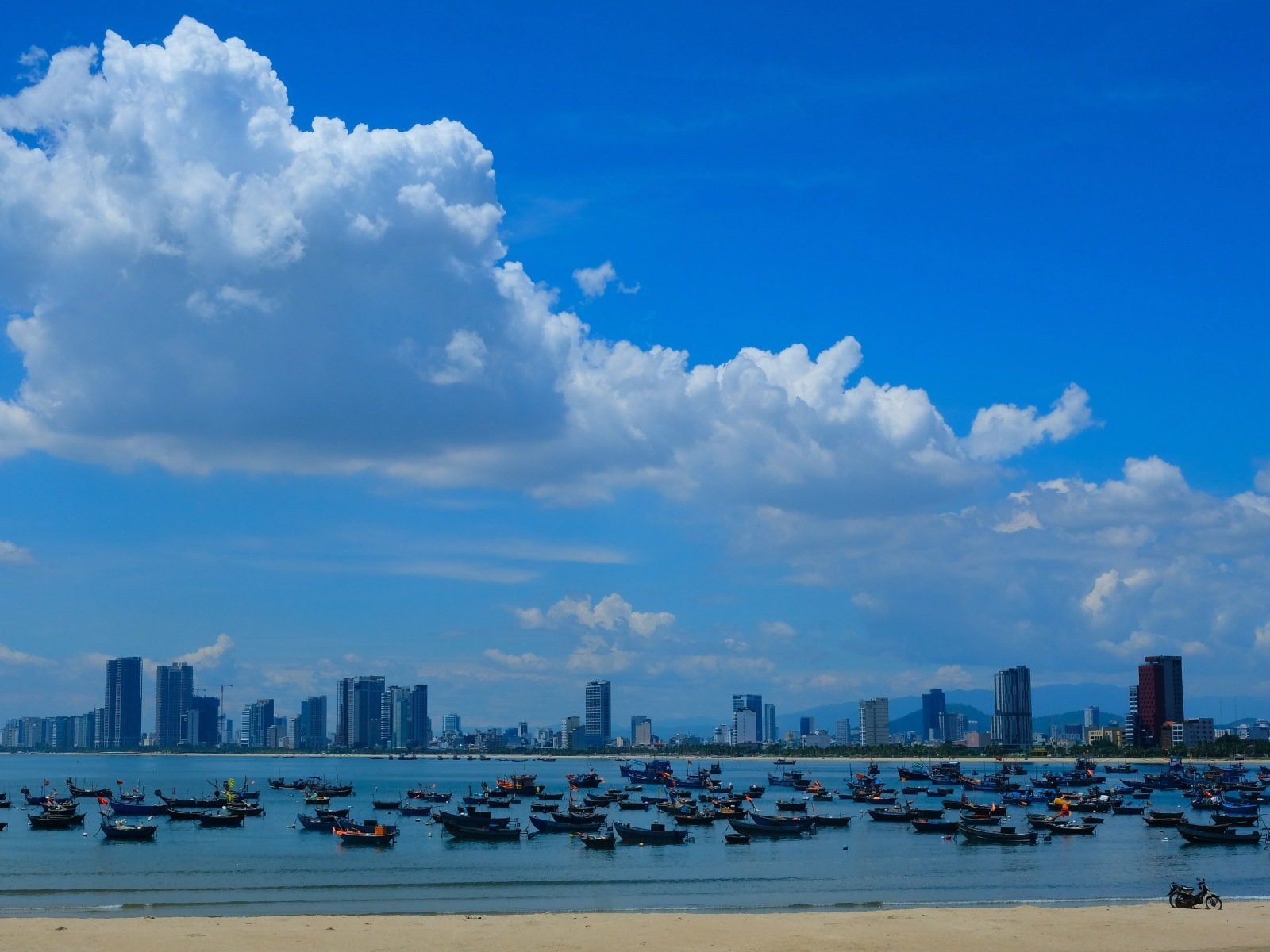
BEST Tours in Da Nang in 2024: A Snapshot of Beautiful Sites & Experiences
Book vietnam is awesome community tours.
Curated and hosted by our passionate local ambassadors & community leaders offering an authentic and enriching experience of Vietnam's hidden gems and vibrant culture.

Ho Chi Minh Full-Day City Tour
From $ 98.
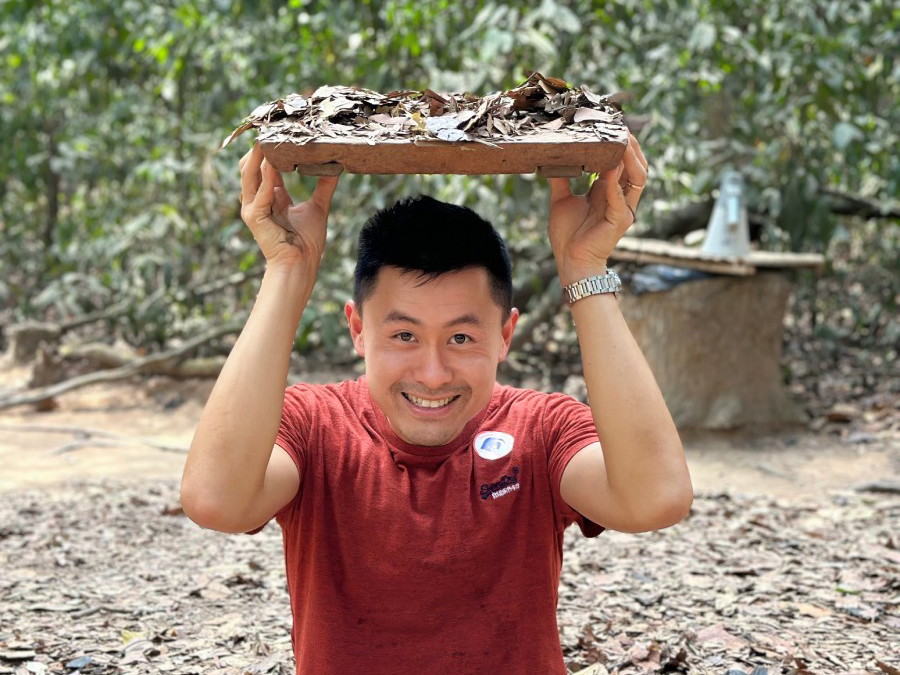
Cu Chi – Ben Duoc Tunnels Tour
From $ 58.
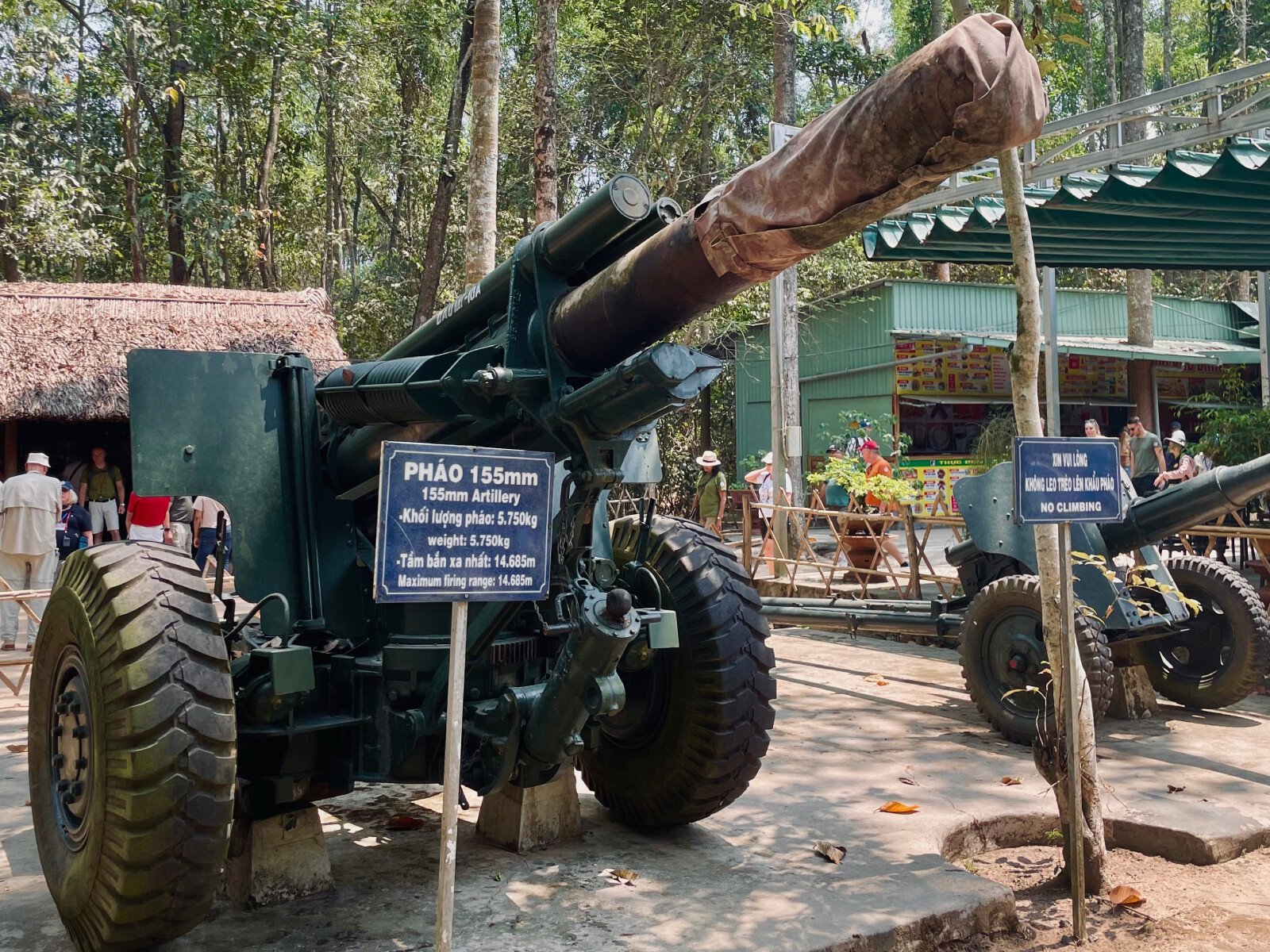
Cu Chi – Ben Dinh Tunnels Tour
From $ 38.

Cai Be Village Mekong Delta Tour
From $ 28.
Saigon Iconic Landmarks Cycling Tour
From $ 45.

Chinatown Cholon Discovery Tour – Trails of Quach Dam
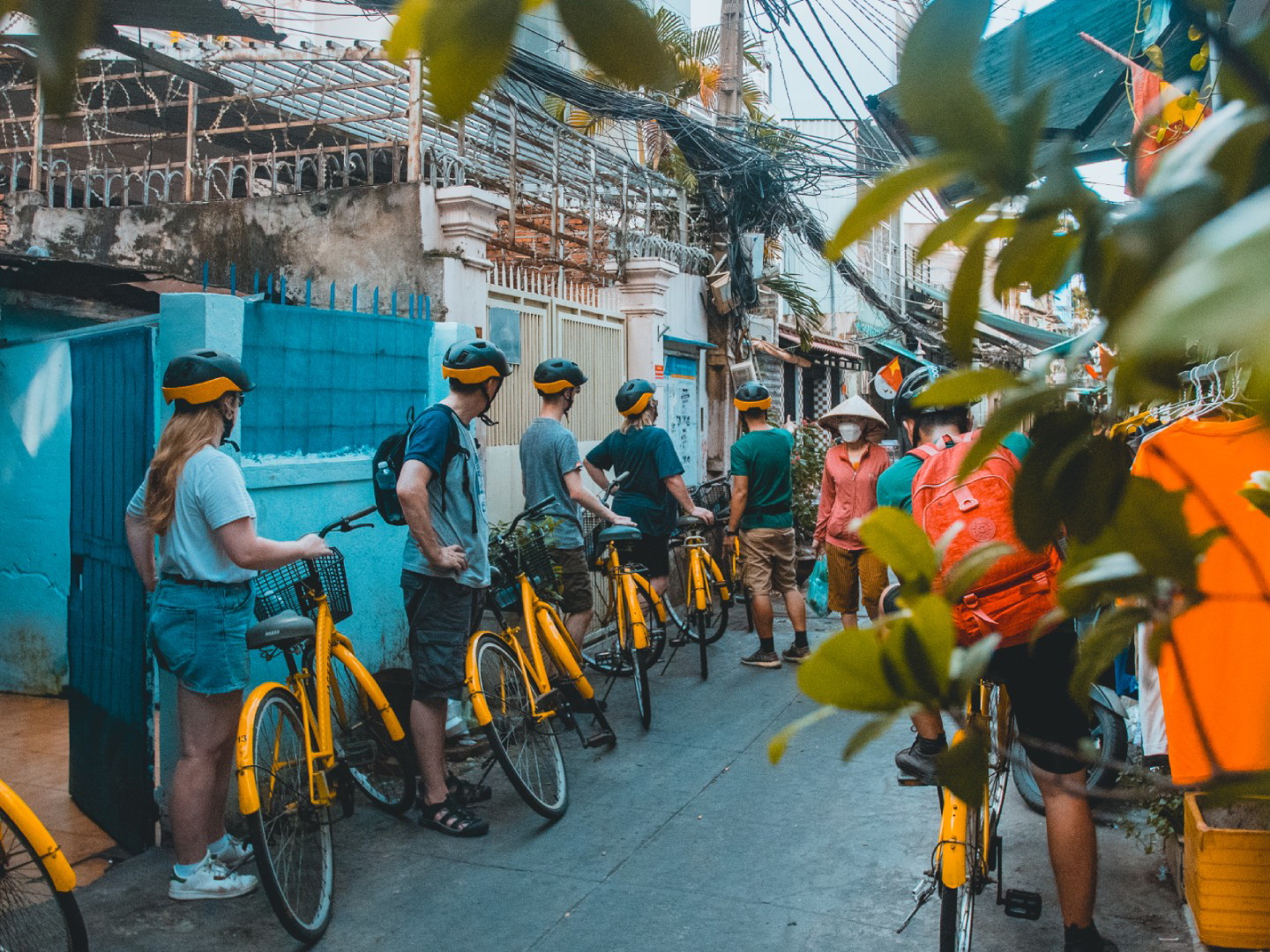
Saigon Off-the-Beaten-Path City Cycling Tour
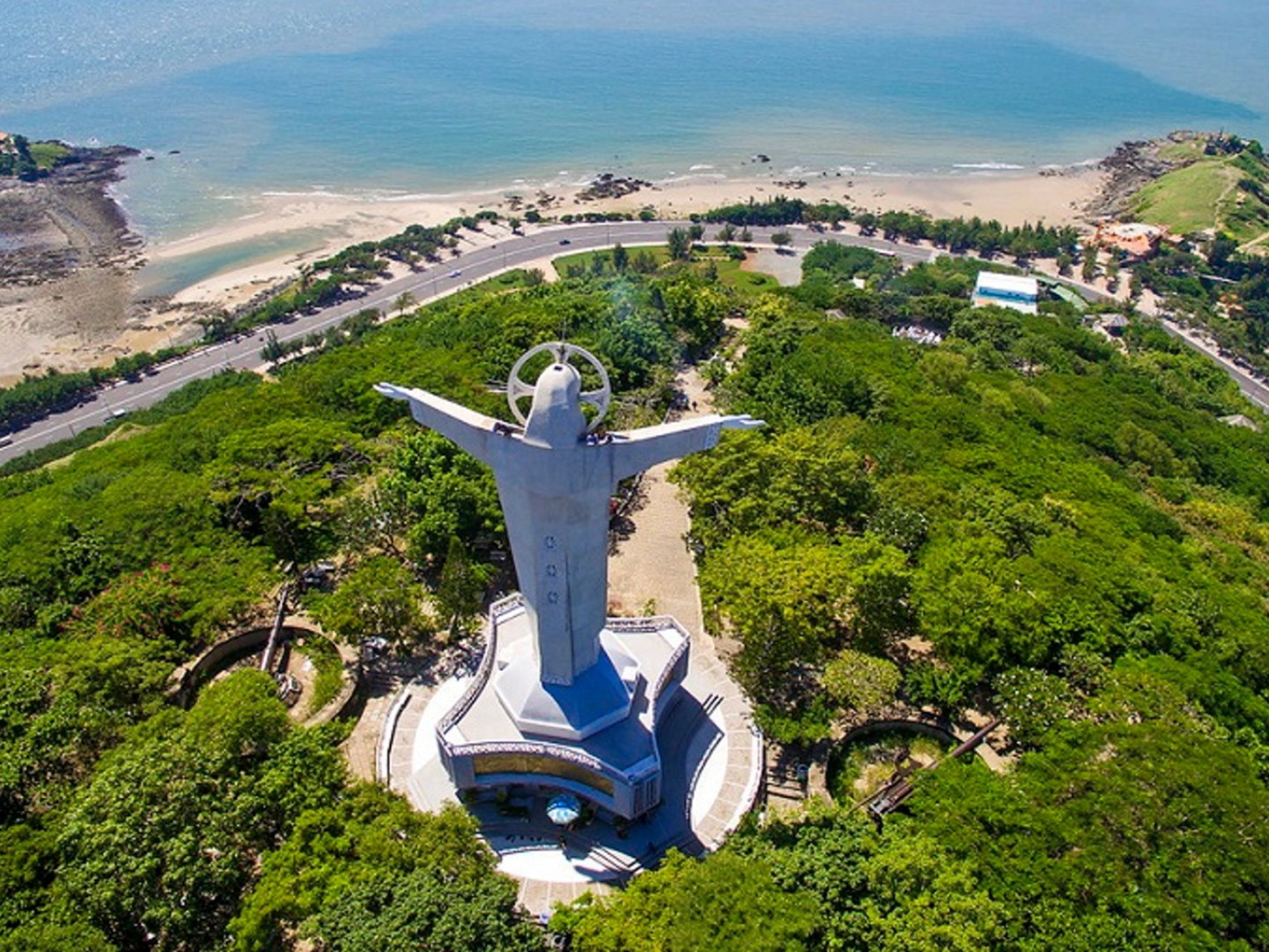
Long Tan – Nui Dat and Vung Tau Historical Highlights Tour
From $ 174.
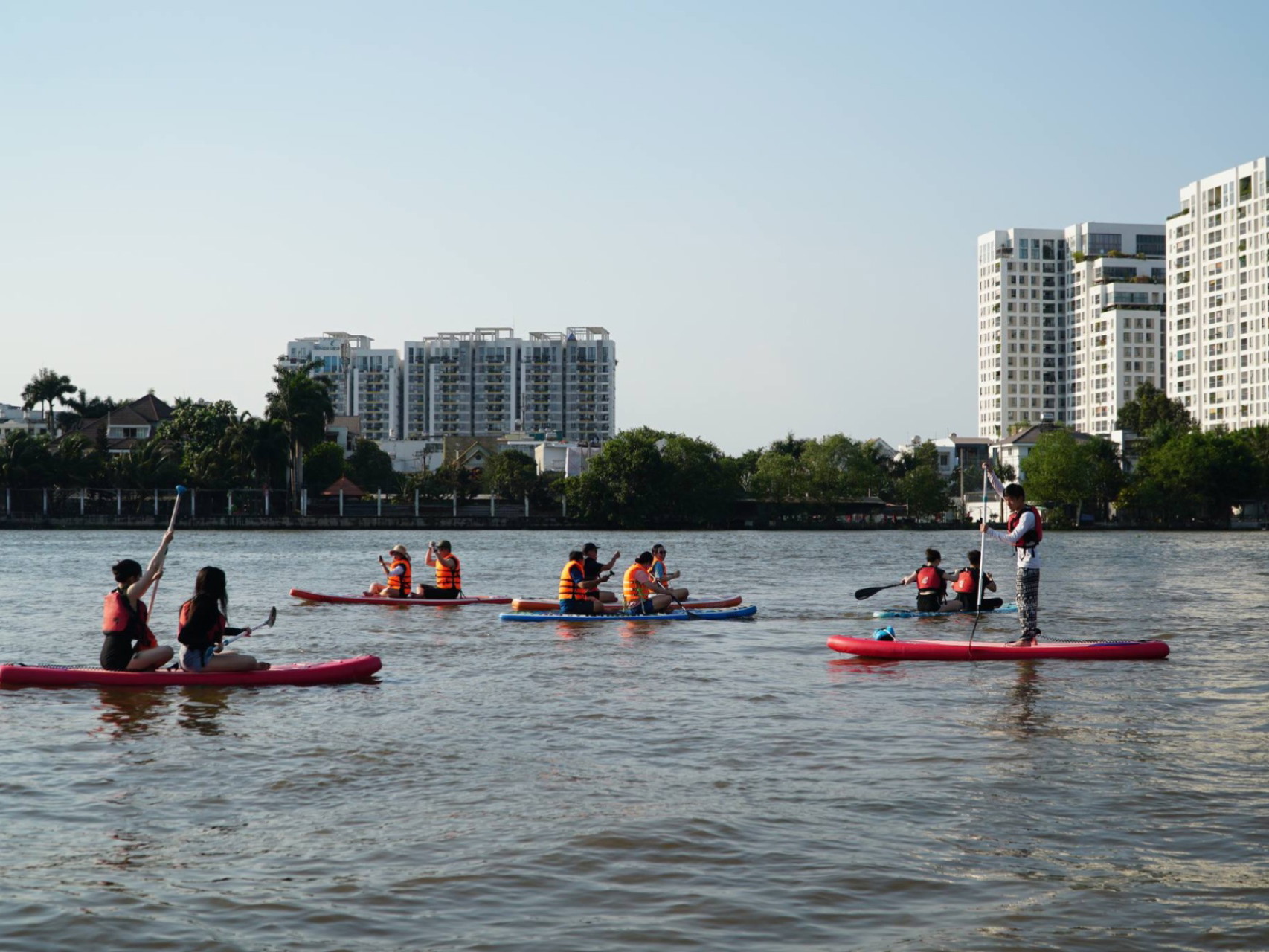
Sunset Stand Up Paddle (SUP) on Saigon River Tour
From $ 39.

Sunrise Stand Up Paddle (SUP) on Saigon River Tour
From $ 34.

Ho Chi Minh City Walking Food Tour
From $ 57.

Secret Cocktail Experience In Saigon
From $ 75.

Secret Sips and Stories: Saigon Culinary & Cultural Journey
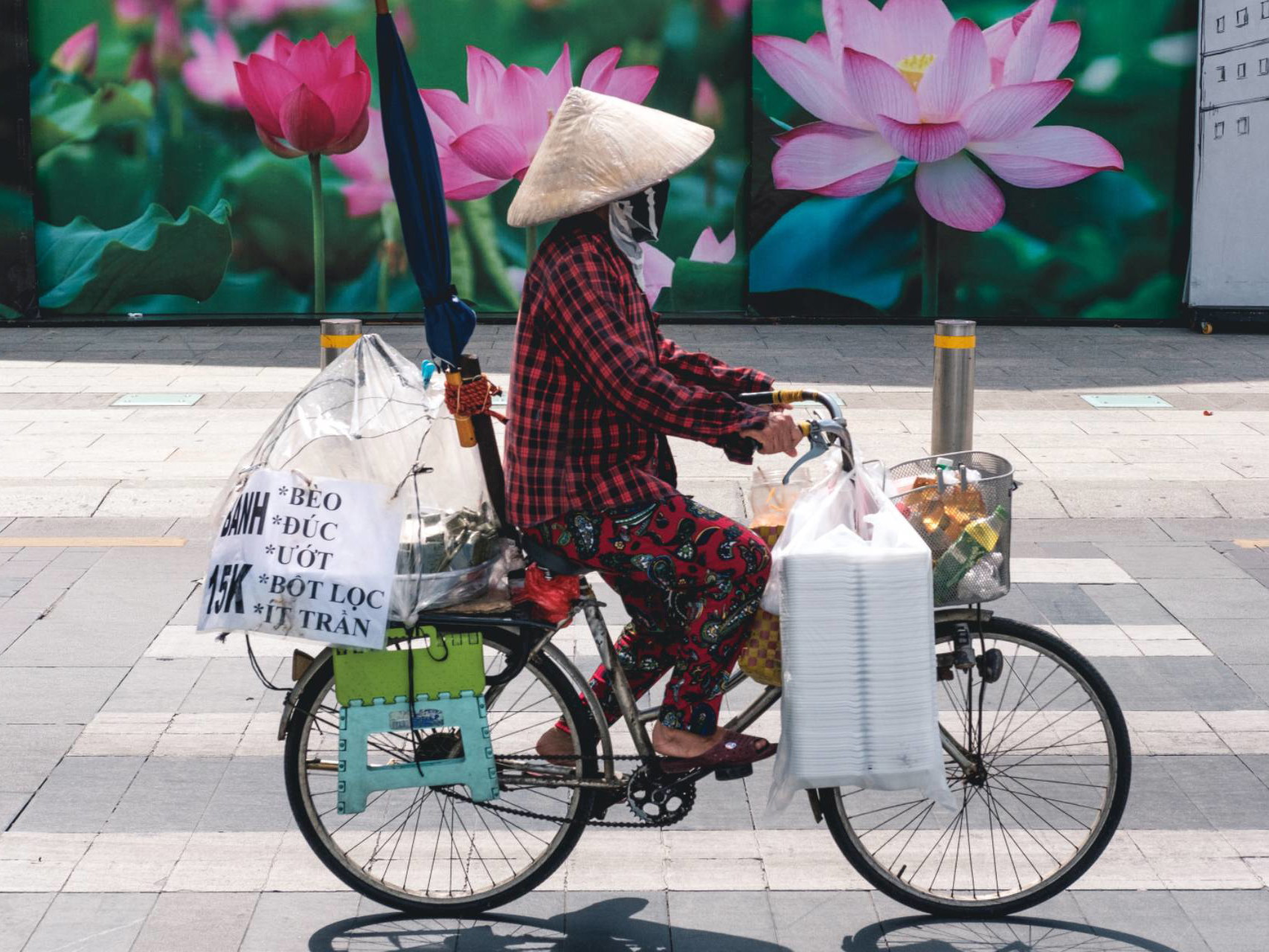
Sunset Photography Half-Day Tour in Saigon – Travel Through History
From $ 70.

Sunrise Photography Half-Day Tour in Saigon – Down in Chinatown
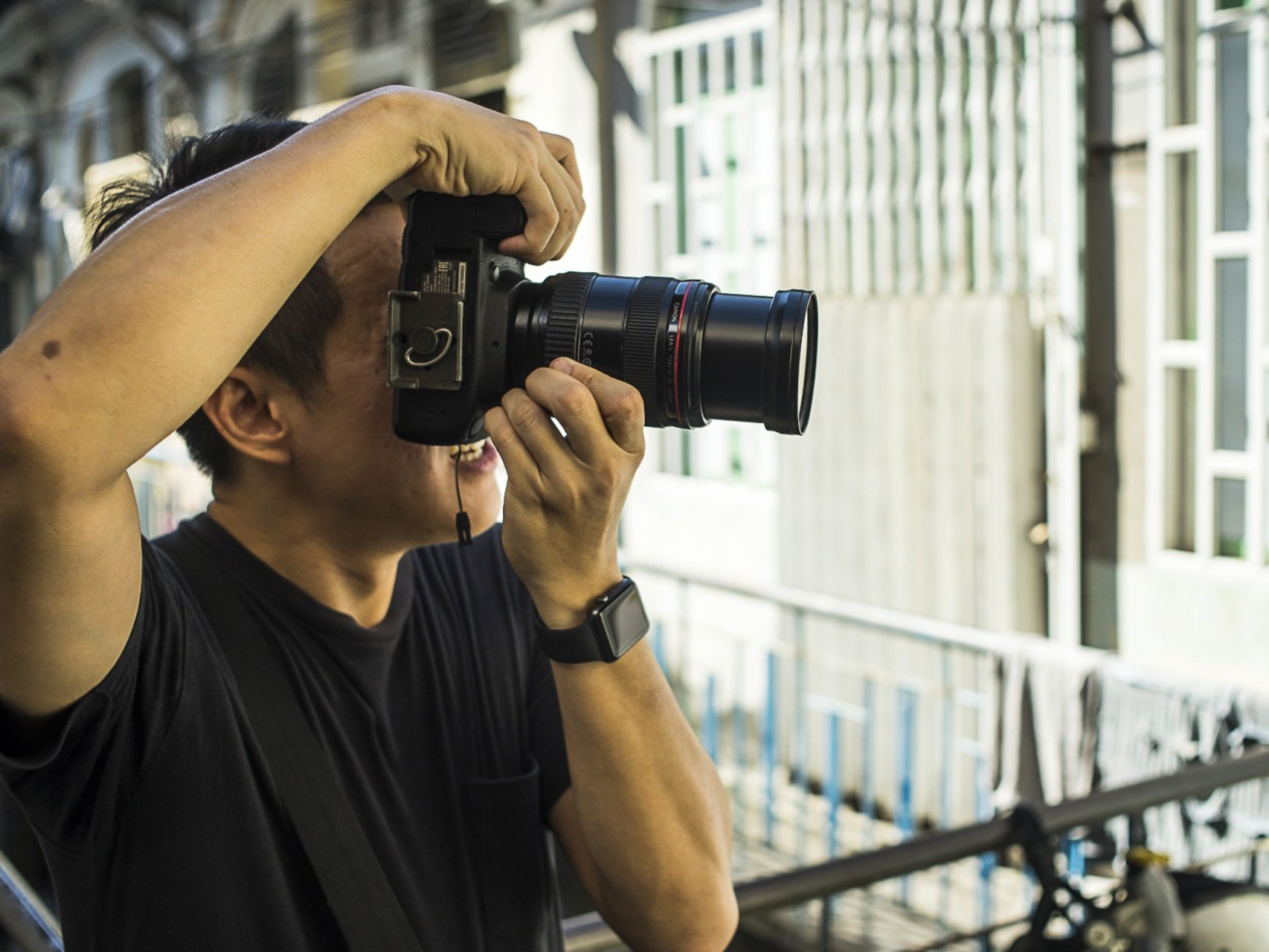
Saigon Street Photography Half-Day Experience
From $ 65.

Sunrise Photography Half-Day Tour in Saigon – Rise and Shine in the Enchanted Maze
55 Ta Hien, Thanh My Loi Ward, Thu Duc City, Ho Chi Minh City, Vietnam © 2024 Vietnam Is Awesome. All rights reserved. Terms of use | Privacy Policy Call Us: +84 98 1212 484

Vietnam Travel Guide
Looking for an in-depth Vietnam travel guide ?
Then you’re in the right place!
Thanks to its stunning natural beauty in places Ha Long Bay and the Mekong Delta, bustling cities with incredible street food, and fascinating culture and history, Vietnam is an unmissable destination in Southeast Asia .
It’s also extremely affordable, and visitors will find that their money stretches far in Vietnam when it comes to food, hotels, and transportation.
Keep reading to dive into resources from Jessie on a Journey as well as its sister site Epicure & Culture that will help you with planning a trip to Vietnam.
Note: This guide to Vietnam travel contains affiliate links to trusted partners!

Vietnam Map
Use this Vietnam travel map to begin planning your trip!
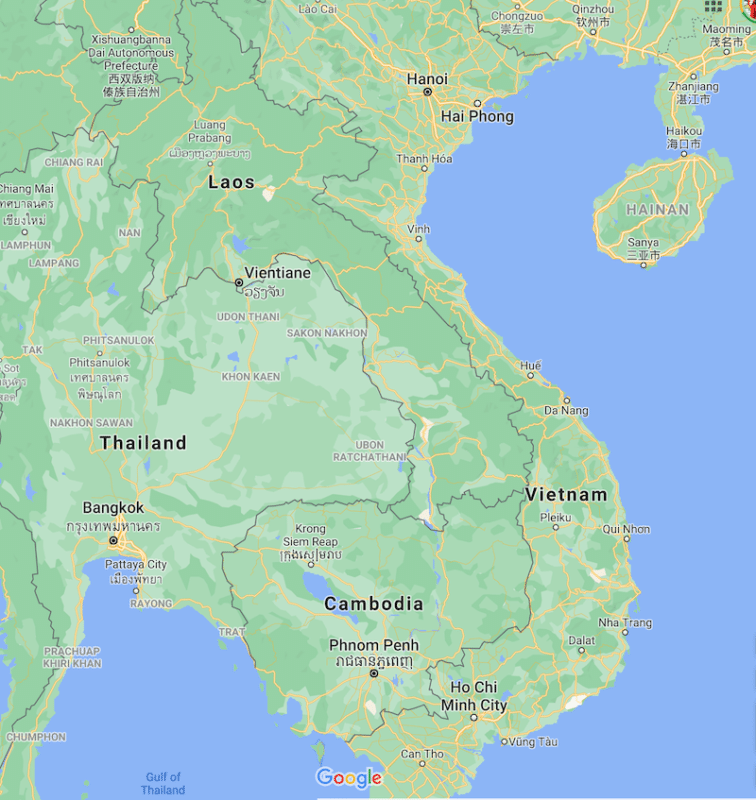
Click here for an interactive version of the above map.
Best Places To Visit In Vietnam
Learn about the top places to visit in Vietnam .
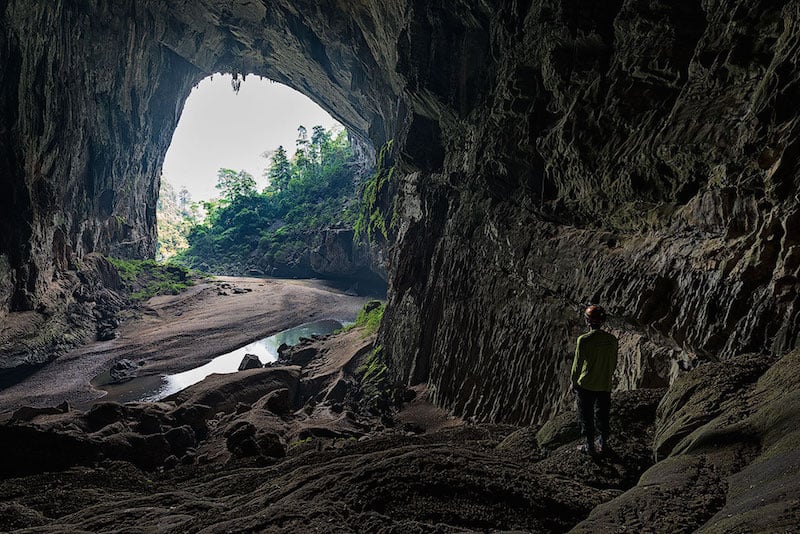
Stunning Images From The World’s Largest Cave In Vietnam
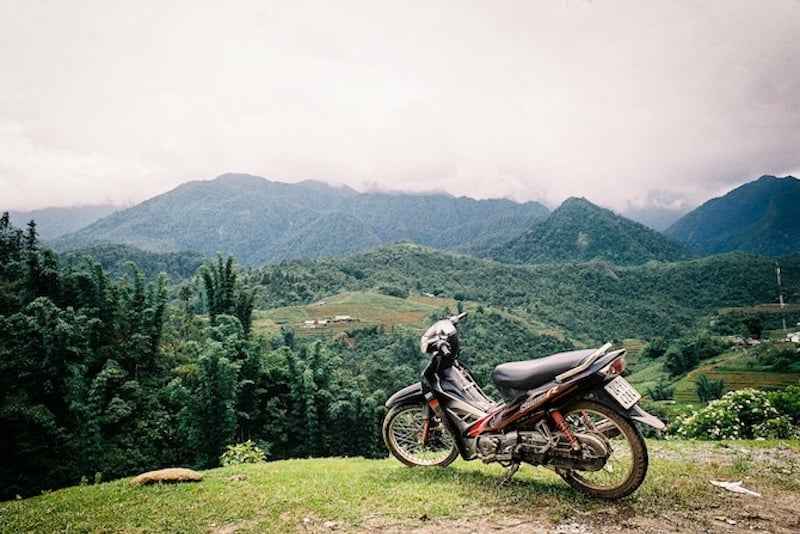
Solo Travel, Local Culture & Going Beyond The Guidebook In Vietnam
Vietnam Travel Advice
Use these Vietnam travel tips to plan the perfect trip.
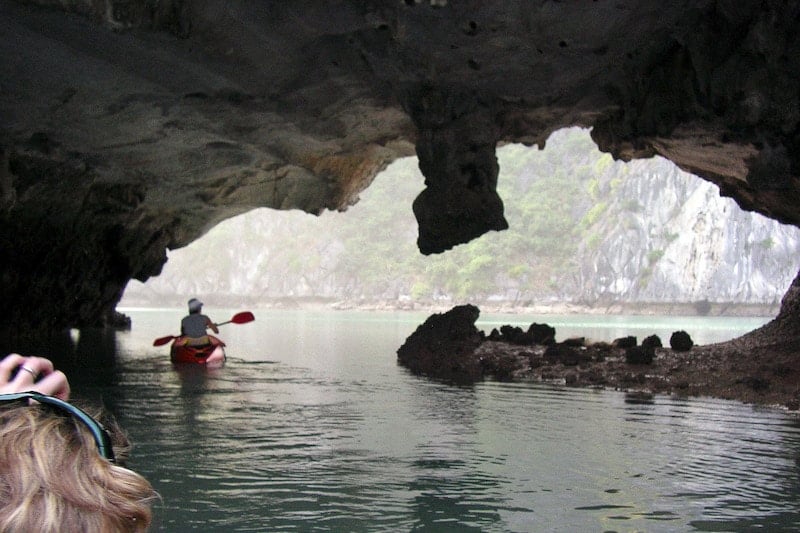
My Unwanted Paparazzi Moment On Cat Ba Island In Vietnam (Important Lesson Included!)
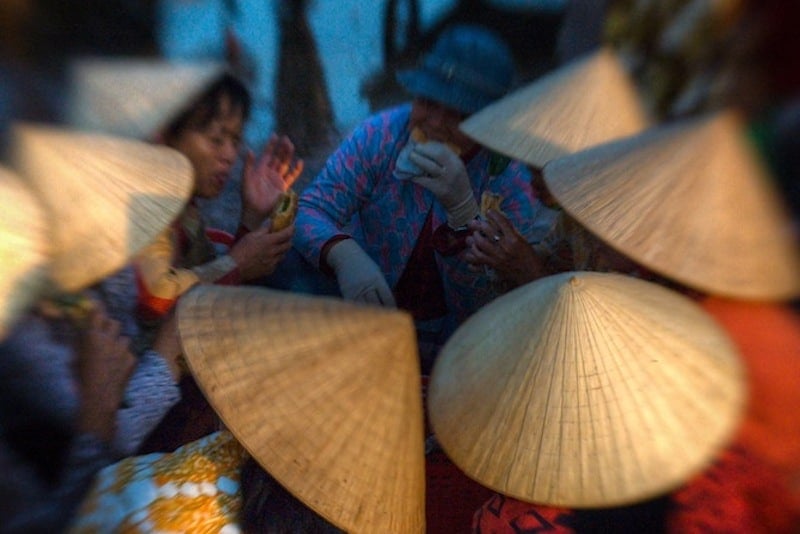
Top 10 Vacation Destinations In Asia
Vietnam Food Trip
Explore the country on a virtual Vietnam food tour with these travel resources.
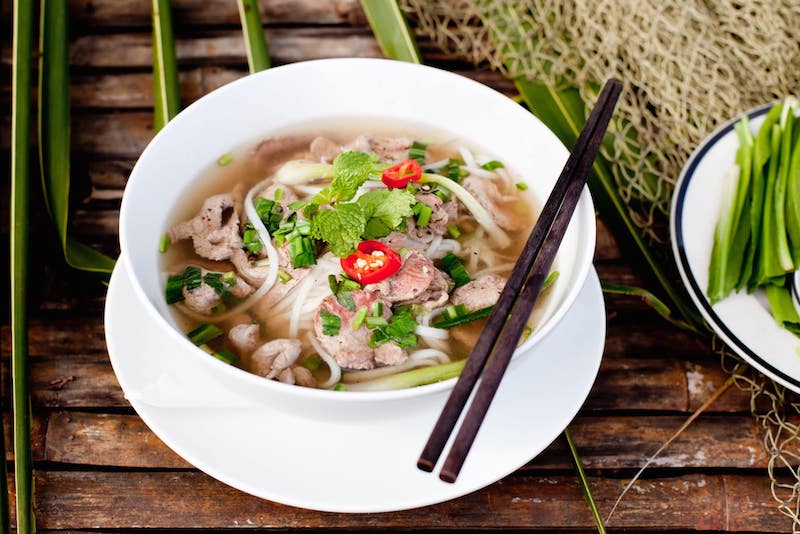
A Guide To Southeast Asian Culture Through Spices

The French Influence On Vietnamese Cuisine
Asia Travel Tips
This Asia travel advice can help you plan the perfect trip.

24 Best Places For Solo Travel In Asia
Top Vietnam Tours
Check out these fun tours in Vietnam from my affiliate partner, Viator:
- Cooking Class in Local Villa with Market Tour (Seasonal Local Wine Tasting) in Hoàn Kiếm
- Saigon Evening Food Tour By Scooter in Ho Chi Minh City
- Overnight Sapa Tour from Hanoi
These excursions will help you learn about Vietnam from a local!
Vietnam Travel Insurance
It doesn’t matter if you’re traveling solo or with a group on a Vietnam tour. When visiting Vietnam — or any other country in the world — make sure to get travel insurance to protect your health and safety.
In my opinion, the best travel medical insurance for travelers is SafetyWing as they’ve got a large network and offer both short-term and long-term coverage — including coverage if you’re traveling for months as well as limited coverage in your home country).
Additionally, SafetyWing is budget-friendly and offers $250,000 worth of coverage with just one low overall deductible of $250.
With coverage, you’ll have peace of mind as you embark on your Vietnam itinerary.
Click my referral link here to price out travel insurance for your trip in just a few clicks .
Vietnam Hotels
Click here to browse hotels in Vietnam!
Prefer self-contained stays?
Click here to check out unique local rentals!
You can also use this map to search for local stays:
Renting A Car In Vietnam
Need a rental car for your Vietnam trip?
Use Discover Cars to quickly compare your car rental options.
Vietnam Travel Guide FAQ
Below, find answers to frequently asked questions about traveling Vietnam .
Q: Is Vietnam safe for tourists?
Vietnam is a safe country for tourists to visit. In fact, it’s one of the best destinations for a solo trip to Asia .
There is very little violent crime; however, tourists should be vigilant when it comes to petty theft and scams, especially in popular tourist destinations.
Q: Is Vietnam cheap to travel?
Vietnam is a very budget-friendly destination! Like many places in Southeast Asia, your money will go far in Vietnam.
A typical backpacker budget is around $30 a day, while a mid-range traveler may want to budget $60-$75 a day.
If you’re on a budget while traveling Asia , definitely add Vietnam to your itinerary.
Q: Can you travel Vietnam by train?
Yes, train travel is one of the best ways to get around Vietnam!
Trains in Vietnam are comfortable, affordable, and scenic. Although they can be slow, they offer great views and a good value for money.
Q: What are some Vietnam travel do’s and don’ts?
Things you should do in Vietnam:
- Do dress conservatively, especially when visiting temples or pagodas
- Do keep an eye on your belongings at all times, especially in tourist areas
- Do learn a few basic phrases in Vietnamese, such as hello, please, and thank you
Things you should not do in Vietnam:
- Don’t take photos without asking for permission first, especially in rural areas or villages
- Don’t expect public restrooms to have toilet paper – always bring your own with you!
- Don’t miss out on trying Vietnamese street food
Q: Do I need a visa to enter Vietnam?
Citizens of most North American and European countries will need a visa in order to visit Vietnam. Visas must be applied for in advance.
It’s recommended to view your country’s Vietnam International Travel Information page for the most up-to-date information on entry and exit requirements. You can also contact the Embassy of the Socialist Republic of Vietnam.
Q: What are some must-try street foods in Vietnam?
Vietnam has some of the best street food in the world!
Experience Vietnam through delicious dishes like pho (a hearty noodle soup), xoi (sticky rice laced with various options like pork or fried egg), and banh mi (a tasty baguette sandwich).
Q: What are some great Vietnam tourist places?
When visiting Vietnam, some tourist spots not to miss include Ho Chi Minh City (aka Saigon), Phú Quốc Island, Mekong Delta (aka the Western Region), Vũng Tàu, Halong Bay, and Ninh Binh, which is a town just an hour-and-a-half from Hanoi, which another great destination.
It’s also easy to get to other countries in Southeast Asia and the rest of Asia from Vietnam, like Hong Kong, Thailand, and Laos.
Q: What is the local currency in Vietnam?
The local currency in Vietnam is the Vietnamese đồng.
What would you add to this Vietnam travel guide?

Enjoyed this guide to Vietnam travel? Pin it for later!
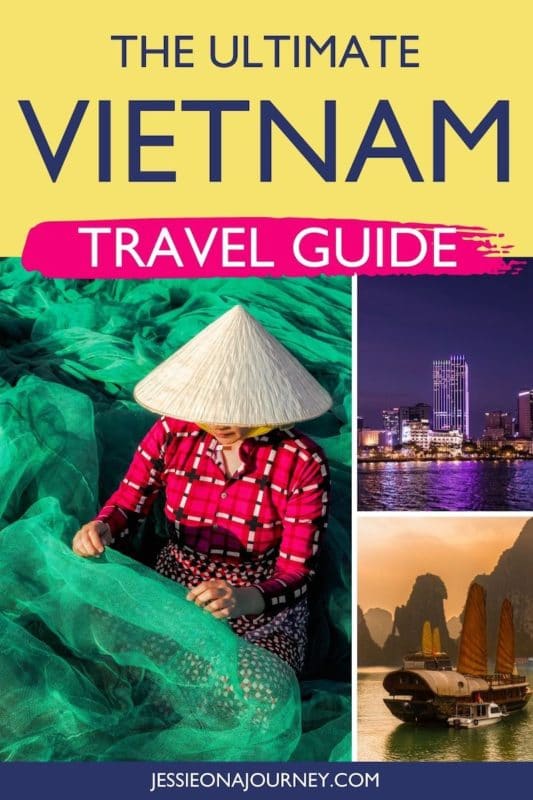

2 Week Vietnam Itinerary: Travel North to South in 14 Days
Posted on Last updated: May 2, 2024
Two weeks in Vietnam is the perfect amount of time to truly appreciate the different destinations this country can offer. This 2 week Vietnam itinerary is pretty much the exact route I traveled myself, starting in Hanoi and making your way down the coast of Vietnam to Ho Chi Minh City.
Vietnam has many different landscapes to offer, from mountainous rice terraces to dramatic cliffy islands to bustling cities. You will surely be enthralled with the culture and landscapes of this Southeast Asian country, and this 14-day itinerary will introduce you to a little bit of everything – just the way it should be!
Do You Need a Visa to Visit Vietnam?
Some countries, such as the UK, allow 14 days inside Vietnam for free (visa on arrival). Citizens of 80 countries can apply for a visa to Vietnam online using the country’s e-Visa system. The Vietnam e-Visa, introduced in 2017, is a 30-day online visa that allows visitors to stay in Vietnam for a maximum of 30 days.
The e-Visa for Vietnam is meant for various purposes, including tourism, business, education, family visits, investment, journalism, and labor employment. Delivery of the electronic visa takes three working days after the payment has been made so you need to make sure to apply before you travel and know it’s not a visa on arrival (don’t make the same Vietnam visa mistake I made)!
Vietnam Visa for Australians is an electronic visa that allows Australians to enter Vietnam for a wide range of purposes as a part of visa-free travel. A similar visa exists for Americans and many other countries – make sure to check before you go ! Using an e-Visa, you can enter the country only once and stay for a total of 30 days.
The main advantage of the Vietnam e-Visa is that it’s easy to apply. Using a credit or debit card, you can pay the fee for the online application in just a few minutes and answer some simple questions.
Getting Around Vietnam
It’s usually quite easy to book busses and night busses between your destinations in Vietnam. You can rent a scooter to travel certain sections of the country (such as from Hoi An to Da Nang) but most people take busses or fly.
I took busses for my whole 2 weeks in Vietnam with a mixture of booking at random local travel agencies and booking them in advance for a cheap set price on Bookaway.
2 Week Vietnam Itinerary from Hanoi to Ho Chi Minh City

Day 1—Arrival at Hanoi
Welcome to this land of architectural splendor – Vietnam’s capital city is brimming with travel opportunities. Enjoy a filling breakfast or brunch at a local eatery to get your day started right.
A Vietnam itinerary would not be complete without sampling the local cuisine. While you’re there, consider taking a top-rated Hanoi food tour . You can’t go wrong with the Egg Coffee, Banh Cuon (steamed rice roll), Banh Gio (pyramidal dumpling), and Bun Rieu (rice cake) (Crab paste vermicelli).
During the rest of the day, you can ride a rented bike around Hanoi or simply walk around the city’s Old Quarter neighborhood. Because Hanoi is known for its bustling nightlife, the evenings are expected to be active. Bia Hoi U Phao, a well-known Vietnamese restaurant, is a great place to relax and enjoy a drink.
Day 2 – Explore Hanoi’s Stunning Attractions and Museums
Begin the day with a trip to some of the city’s most awe-inspiring historical landmarks. You can’t miss the Imperial Citadel of Thang Long, a UNESCO World Heritage Site. Next, visit Hoan Kiem Lake , a freshwater lake, and Ngoc Son nearby. To end the day, there’s another cultural experience you can’t miss — a show at the Thang Long Water Puppet Theatre . If you prefer a guided experience, there are Old Quarter tours led by Vietnamese students !
If you wish to do some shopping, head to the famous “ 36 streets ,” which are a veritable shopping mecca with a distinctly regional flavor. Get your hands on artwork, embroidery, food, coffee, silks, stuffed toys, watches, silk products, and other goodies!
The Temple of Literature , built in the 11th century, is also worth a visit. Don’t miss the opportunity to see Ho Chi Minh’s preserved body in his mausoleum at the Ho Chi Mnh museum in Ba Dinh Square -a popular tourist destination in Vietnam. You can also visit other museums like the Women’s Museum and Fine Arts Museum.
End your day at a popular restaurant for dinner— Tini Cafe, Red Bean Trendy Restaurant, The Railway Hanoi, or Grandma’s Restaurant.
Where to Stay in Hanoi
There are lots of options are areas when considering where to stay in Hanoi! Here are my top recommendations for different budgets:
Budget Option : Hanoi Backpackers + Rooftop Bar for a fun social vibe and views
Mid/Splurge Option : La Nueva Boutique Hotel Hanoi & Spa for cute rooms, on-site spa, and epic views
Day 3 – Day Trip to the Astonishing Limestone Mountains of Ninh Binh

Today it’s time for a day trip to Ninh Binh which is an unmissable spot to visit from Hanoi while in North Vietnam. I recommend this one to see all the best sights in one day. But first, food! Banh mi (Vietnamese bread) or noodle soup at Pho 10 restaurant is an excellent way to start the day before departing. After a hearty breakfast, join the tour to the Ninh Binh Province for a full day of exploration.
Hoa Lu, Tam Coc & Mua Cave are stunning locations in Ninh Binh, Vietnam, where visitors can see valleys, caves, and limestone peaks. The tour includes a boat ride through the caves where you can truly enjoy one of Vietnam’s breathtaking scenery.
Visit one of Vietnam’s most popular locations where the Hollywood film “Kong: Skull Island” was shot after finishing your meal at a local eatery. Prepare to go on a photo blitz in this location.
Day 4-5 Exotic Halong Bay 2 Day Trip

Ha Long Bay is best experienced over multiple days, with a night or two spent in some basic yet magical accommodation on one of the islands or on a boat. You can experience one of the most incredible sunrises ever, and a morning boat trip you’ll never forget.
Spectacular limestone islands dominate the landscape of Halong Bay. You can take a ferry boat from the mainland (most leave from Cat Ba, which also has spectacular Cat Ba National Park ) to experience these incredible islands, coves, and beaches firsthand.
For the most convenience, take a 2 day tour that includes transportation from Hanoi, or check out the best Halong bay cruise options. These tours will show you all the best spots. If you want a party tour for young people, your hostel will know which direction to point you in.
After day 5, you’ll head back to Hanoi where it’s time to get on a night bus to Da Nang. Or, you can sleep in Hanoi and take a flight in the morning.
Day 6 – Arrive in Da Nang Vietnam

Flights from Hanoi are the quickest and most convenient way to get to Da Nang, or you can take an overnight bus if you are on a budget like I was. And if you really got the time and are a fan of trains, you can book a sleeper. Both buses and trains are available to book in Vietnam through Bookaway
Check into a hotel and make yourself at home in this laid-back city in Vietnam and savor a few quick bites before getting started on your day exploring Da Nang.
I noticed that a lot of people tended to skip over Da Nang on their Vietnam trips, and I don’t understand why as I absolutely loved exploring this fascinating city. Here are some reasons to visit Da Nang and things you can do during your day here.
On your first day have a quick explore around the downtown area and the big flashy shops. Save the big adventure for tomorrow. You might need a rest today!
Where to Stay in Da Nang
Budget Option : The Memory Hostel for a SUPER awesome design with private boutique rooms and dorms too.
Mid Option: Nami Home is a super cozy homestay with studio rooms just blocks from the beach and close to many restaurants. The best part is that it’s pretty quiet at night time and in the morning! This spot is prefect to get a private room on a budget.
Splurge Options (still for less than about $60USD/night): Wink Hotel Da Nang is a very cute and modern boutique hotel in the city center close to everything with futuristic design and amazing rooftop views. Minh Boutique is closer to the beach with a more traditional, natural vibe with incredible design, a koi pond, wooden accents, and outdoor bathrooms.
Day 7: Explore Da Nang on Your 2 Week Vietnam Itinerary

There are lots of places to explore in Da Nang from the bustling city to some incredible bridges to lush green forests and hilltop views.
The Ba Na Hill Mountain Resort is a stunning place to visit outside of the city. Take a cable car ride to the top for spectacular views. You can also take a stroll through the ecological park and marvel at the fantastic replica of a French village. Enjoy the breathtaking natural splendor as you stroll across the magnificent Golden Bridge too!
Most people book a tour to visit the Golden Bridge and Ba Na area. If you wish to book in advance, this is the best and most affordable tour to the areato book online, including transport, food, and cable car rides.
Today might also be a good day to head to the beach if that is more your style – there are MANY in Da Nang – or take a scooter around the Mui Da Dang peninsula to Son Tra Mountain, and to visit the Chua Linh Ung Buddhist temple with its huge white buddha.
Day 8 – Da Nang to Hoi An – Scooter Road Trip or Bus

To get to Hoi An, you can either take a bus OR have the adventure of your life and rent a scooter in Da Nang and DRIVE there! This is what we did, and it was so much fun. You can truly see more amazing coastal viewpoints this way, and stop to explore more of the Vietnamese coast.
Arrive to Hoi An and check into your hotel for a relaxed rest of the day, especially if you drove here. The port city of Hoi An, a UNESCO World Heritage Site, offers a wide range of attractions and things to do. The city sits on a beautiful river and has no shortage of beautiful walks and great food.
Where to Stay in Hoi An:
Budget Option: SnapStay for higher end more relaxed hostel with pods and curtains or Mad Monkey Hoi An for super social party vibes, larger size, great pool with tours available (and private rooms available)
Mid/Splurge Option: An easy choice: Little Riverside Hoi An . This affordable luxury hotel is directly on the river in the ancient city, with a pool overlooking the main area, elegant rooms, and fantastic food.
Day 9: Explore Hoi An and Get Some Custom Made Clothes

For your day in Hoi An, you have a few options. First, you can plan on spending a lazy day at the Ong Pagoda watching people pray, or exploring the Chinese assembly halls and ancient city in search of exciting photos for your Instagram feed. The Old Town is incredibly charming and has plenty to explore – it’s popular to rent a bike to explore Hoi An.
Stop by the Japanese Bridge for a truly breathtaking view if you have time, and keep a lookout for the famous Hoi An lanterns between the Japanese Bridge and the An Hoi Bridge. If you want to get a bit more exciting, Hoi An is popular for Vietnamese cooking classes or you can take a lantern making class , or for something EXTRA unique on the river take a circular basket boat tour (pictured above) and learn to fish from one!
Hoi An is famous for its tailors, and many travelers come here to get custom-fitted suits or any other type of clothes! It’s a really fun thing to do on your Vietnam itinerary and super cheap too. You can show the tailors photos of any outfits or articles of clothing, and they can do their best to recreate them for you with the fabric of your choice. I got a super cute backless romper and a matching top/shorts set.
Day 10-11 Vietnam Itinerary – Head to Nha Trang

To be honest, Nha Trang isn’t my favorite destination, but I had to include it on my Vietnam itinerary 14 days as it’s a natural place to stopover on your way from Hoi An to Ho Chi Minh City if traveling Vietnam overland. It tends to have a lot of interesting expats and definitely has many beautiful beaches.
When I was here, I took a night bus to another night bus, but that’s not a very appealing way to see the city. Spend one night here to split up your journey between Hoi An and Ho Chi Minh city if you are not going to fly. Head to the beach or any of the famous islands off the coast for incredible sea views.
There’s also a famous amusement park here if you are into that kind of thing, and an aerial cable car with some incredible views too. You can also do some waterfall treks or go scuba diving too here – Hon Mun is a popular destination for scuba diving and snorkeling.
Where to Stay in Nha Trang
Budget Option: Bondi Backpackers is the best-known hostel in the area, with a rooftop pool and views.
Splurge Option : Treat Yourself to a fancy apartment with a view at the Costa Nha Trang Residences with fantastic amenities and design.
Day 12- Get to Ho Chi Minh City

You can either take a flight from Nha Trang to Ho Chi Minh or another night bus – about 8-10 hours. The city is a must-see if you plan on visiting Vietnam, and you will surely feel the difference between the South and the North while here.
Read my travel stories about my experience traveling in the south and the north of Vietnam as a veteran’s daughter!
After getting here, you might be exhausted from this jam-packed 2 week Vietnam itinerary. If you aren’t… you didn’t do it right! 😛 Check into your accommodation today and have a rest/quick explore of the City in your area before gearing up to explore more fully tomorrow.
Where to Stay in Ho Chi Minh City
Budget Option: Saigon is a HUB for many kinds of awesome hostels. I stayed at Meander Hoste l one year and loved it (SUPER modern, single and double pods or private rooms, coworking), but you might want another option for parties. Check out all your options here.
Splurge Option: MY favorite hotels in Ho Chi Minh are the Silverland Line, which are boutique and modern hotels with rooftop pools, great on-site restaurants and amenities, and a mix between Vietnamese and modern decor. The Silverland Jolie has the best rooftop view, and the Silverland Sakyo Hotel is stunning also. The Adora Art Hotel is also awesome.
Day 13: Explore Ho Chi Minh City

Begin your day with a bowl of Pho from a street vendor. Slurp up a bowl of these Vietnamese-style hot noodles and appreciate the crazy bustle of the city – maybe even with a Vietnamese iced coffee in hand (they are DELICIOUS).
Take a stroll through Ben Thanh Market, which is known for its chaos. Similarly to Hanoi, HCMC is known for its epic food. If you’re a foodie, perhaps a great idea for today is to take a food tour all around the city with 11 different tastings to get to know the unique flavor of the South.
The War Remnants Museum is probably the most significant museum in the city with artifacts from the Vietnam War, and is worth sending some good time in.
Attend an opera performance at the Saigon Opera House later on in the day, or at least check it out. You can also see some truly unique water puppetry at the Golden Dragon Water Puppet Theatre for something unique and cultural. Afterwards, have a night out on Bui Vein Street tonight – you’ve earned it!
Day 14 Vietnam Itinerary: Take a Day Trip to the Cu Chi Tunnels

For some more fascinating and bone-chilling war history, take a day trip to the Cu Chi tunnels today. These are the tunnels that the Viet Cong used during the Vietnam War to move around and surprise American/South Vietnamese soldiers.
The tunnels total over 250 kilometers are are often tiny, dirty, and stuffy but give you an idea of the mind-blowing lengths people went to back then during the War. You will also be able to experience some museum exhibits and jungles around the city.
To visit the Cu Chi tunnels you must book a tour in advance. For the most reliable tour, book this one here.
Did You Enjoy your 2 Week Vietnam Itinerary?
Let me know if you have any questions or feedback on this Vietnam itinerary – was it too fast or slow? Should anything else have been included? Let me know in the comments below!
Privacy Overview
Vietnam travel guide
This Vietnam Travel Guide is a comprehensive resource that offers essential information for travelers exploring this diverse country. It includes details on popular destinations, practicalities such as visas, currency, and language, as well as transportation options like taxis, buses, trains, and domestic flights. The guide also provides insights into the weather patterns month by month, allowing you to plan your trips accordingly. Furthermore, it offers cultural background and inspiration.
Destinations
Essential guide, getting around, vietnam weather by month.
- Inspiration
Vietnam is a country with a countless of destinations to explore, and this Vietnam travel guide highlights some of the most popular ones.
North Vietnam
Hanoi , the capital city of Vietnam, is known for its rich history, vibrant culture, and bustling street life. Visitors come to explore its charming Old Quarter, taste delicious street food, and visit iconic attractions like Hoan Kiem Lake and the Temple of Literature.
Sapa , located in the northwest of Vietnam, is renowned for its stunning terraced rice fields and ethnic minority hill tribes. Travelers flock to Sapa to trek through breathtaking landscapes, experience the unique culture of local communities, and witness the beauty of the Fansipan Mountain, known as the “Roof of Indochina.”
3. Halong Bay
Halong Bay , a UNESCO World Heritage site, is famous for its breathtaking natural beauty. Travelers visit this iconic destination to cruise along the emerald waters, marvel at the limestone karsts and islets, and explore hidden caves and floating fishing villages.
4. Ninh Binh
Ninh Binh , often referred to as the “Halong Bay on land,” captivates visitors with its stunning karst landscapes, ancient temples, and picturesque countryside. Travelers come to Ninh Binh to take boat rides through the Trang An Complex, explore the ancient capital of Hoa Lu, and enjoy the tranquility of the rural scenery.
5. Ha Giang
Ha Giang , located in the far north of Vietnam, offers adventurous travelers an off-the-beaten-path experience. Known for its dramatic mountains, winding roads, and ethnic minority communities, Ha Giang attracts visitors seeking epic motorbike journeys, trekking adventures, and cultural immersion in remote and pristine landscapes.
6. Mai Chau
Mai Chau , nestled in the peaceful valley of Hoa Binh Province, offers a serene escape from bustling cities. This rural destination is famous for its picturesque landscapes, traditional stilt houses, and warm hospitality of the Thai ethnic minority. Visitors can cycle through scenic villages, participate in local homestays, and enjoy traditional dance performances.
Central Vietnam
7. phong nha.
Phong Nha , is a paradise for nature and adventure enthusiasts. This UNESCO World Heritage Site is famous for its magnificent cave systems, including the world’s largest cave, Son Doong. You can explore the stunning underground wonders, go trekking in the lush jungle of the national park and kayak over the Son River.
Hue , the former imperial capital of Vietnam, is renowned for its historical significance and majestic citadel. Visitors come to Hue to explore its UNESCO World Heritage sites, including the Imperial City and the royal tombs, and to experience the city’s rich cultural heritage, traditional music, and delicious royal cuisine.
Da Nang , a coastal city in central Vietnam, is known for its beautiful sandy beaches, stunning bridges, and modern skyline. Travelers visit Da Nang to relax on its pristine shores, explore iconic attractions such as the Marble Mountains and the Dragon Bridge, and indulge in delicious seafood.
Hoi An , a charming ancient town, enchants visitors with its well-preserved historic architecture, lantern-lit streets, and vibrant riverside atmosphere. People flock to Hoi An to wander through its atmospheric alleys, shop for tailored clothing, immerse themselves in its lantern festival, and savor local delicacies
11. Nha Trang
Nha Trang, a coastal resort city, is famous for its turquoise waters, white sandy beaches, and vibrant underwater world. Travelers visit Nha Trang to relax on its idyllic beaches, enjoy water sports and island-hopping tours, and experience its lively nightlife and seafood dining scene.
Dalat , situated in the Central Highlands, is known as the “City of Eternal Spring” for its pleasant climate and picturesque landscapes. Visitors come to Dalat to escape the heat, explore its French colonial architecture, visit flower gardens and waterfalls, and engage in outdoor activities like hiking, biking, and canyoning amidst its natural beauty.
South Vietnam
13. ho chi minh city.
Ho Chi Minh City , the bustling metropolis of Vietnam, offers a captivating blend of modernity and history. Visitors are drawn to Ho Chi Minh City to explore its iconic landmarks like the Independence Palace and Notre-Dame Cathedral, indulge in vibrant street food, experience the vibrant nightlife, and immerse themselves in the city’s rich history and culture.
14. Mekong Delta
The Mekong Delta , a vast maze of rivers, canals, and lush green fields, is a unique region known as the “Rice Bowl” of Vietnam. Travelers venture to the Mekong Delta to cruise along its waterways, visit floating markets, witness traditional village life, and taste the fresh tropical fruits and local delicacies unique to this region.
15. Phu Quoc
Phu Quoc , a tropical paradise island, is renowned for its pristine white-sand beaches, crystal-clear waters, and stunning coral reefs. Visitors flock to Phu Quoc to relax on its picturesque beaches, explore its national parks, indulge in water activities such as snorkeling and diving, and savor the island’s fresh seafood.
16. Con Dao
Con Dao , a secluded archipelago, offers unspoiled natural beauty and a rich historical background. Travelers seek out Con Dao for its pristine beaches, lush forests, and diverse marine life, as well as to discover its haunting history at the former prison complex, Con Dao Prison. The island provides a tranquil retreat for relaxation, outdoor activities, and exploring its captivating landscapes.
Mui Ne , a coastal town, is renowned for its stunning sand dunes, vibrant kite-surfing scene, and serene fishing villages. Visitors come to Mui Ne to witness the dramatic landscapes of the Red and White Sand Dunes, engage in water sports, taste fresh seafood, and enjoy the laid-back beach atmosphere and stunning sunsets.
Off the beaten track destinations
Explore the off the beaten track destinations in Vietnam: Cao Bang , home to the stunning Ban Gioc Waterfall ; Mu Cang Chai , renowned for its breathtaking terraced rice fields; Quy Nhon , a tranquil beach town; Kon Tum, where you can discover the mountains and ethnic minorities of the central highlands. Experience the unspoiled beauty of Lan Ha Bay and Bai Tu Long Bay , the lesser-known siblings of Halong Bay. Visit Cat Ba, the largest island in the bay, and uncover the hidden gem of Ba Be Lake , the largest natural lake nestled in the jungle.
Health & Safety
When traveling to Vietnam, it’s important to be aware of certain health and safety considerations.
Mosquitoes are prevalent, especially in certain regions, so it’s advisable to use mosquito repellent and take precautions to prevent mosquito-borne diseases like dengue fever or malaria.
Road safety can be a concern, with chaotic traffic and different driving habits, so it’s recommended to exercise caution and use designated pedestrian crossings.
It’s advisable to avoid drinking tap water and instead opt for bottled or filtered water to prevent waterborne illnesses.
Additionally, practicing good food safety by eating freshly cooked or hot meals, avoiding street food stalls with questionable hygiene practices, and practicing proper hand hygiene can help prevent food-related illnesses.
It’s always recommended to consult with a healthcare professional or travel health clinic before your trip for personalized advice on vaccinations and health preparations.
Vietnam is generally a safe destination for travelers, with a low rate of crime targeting foreign visitors; however, it’s important to remain vigilant and take precautions against petty theft, such as keeping a close eye on personal belongings and being aware of common scams.
Money & budget
Vietnam’s official currency is the Vietnamese Dong (VND), and it’s advisable to carry local currency for most transactions as other currencies are not accepted. Banks and authorized currency exchange offices are the best places to exchange foreign currencies, but interestingly, gold jewelry shops often offer competitive exchange rates.
The average cost of a trip to Vietnam varies depending on your travel style. For budget travelers, a weekly average budget can range from $150 to $300, including accommodation, meals, transportation, and some sightseeing. Midrange travelers can expect to spend around $300 to $700 per week, while luxury travelers may have a budget of $700 and above per week.
In Vietnam, there is no tipping culture , and service charges are usually included in the bill. However, it’s appreciated to give small tips for exceptional service. ATMs are widely available throughout the country, but it’s important to note that there may be limits on the amount you can withdraw per transaction. Additionally, many local shops and restaurants may not accept card payments, so it’s advisable to carry enough cash for smaller purchases.
Internet & calling
Vietnam has a widespread availability of Wi-Fi networks, ranging from local restaurants and coffee shops to upscale resorts. As a customer, you can typically access these Wi-Fi networks for free.
However, to ensure a reliable internet connection and avoid dependence on Wi-Fi, it is recommended to buy a Vietnamese SIM card . SIM cards are affordable and convenient, allowing you to have internet access for various purposes such as navigating with Google Maps, using Google Translate, booking taxis through ride-hailing apps, or checking reviews on platforms like TripAdvisor. While there are several providers to choose from, Viettel is generally considered the best option for its coverage and reliability.
Electricity & socket adapters
The voltage in Vietnam is typically 220V, and the sockets commonly used have 2 pins , accommodating both flat and round pins. If your devices use a different type of plug, you can either bring a travel adapter with you or easily purchase one in Vietnam at one of the many convenient stores available.
Traveling to Vietnam
Before traveling to Vietnam, it is essential to check the visa requirements for your country. While a few countries, including 11 European countries, are eligible for visa-free entry , allowing a maximum stay of 15 days, those wishing to stay longer or coming from other countries such as the US, Australia, Canada, or New Zealand, must arrange a valid visa before their trip.
For most travelers, the e-visa is the recommended option, which can be easily obtained through the official website of the Vietnamese immigration. The e-visa process typically takes 3 to 4 working days, costs 25 USD, and allows a stay of up to 30 days in Vietnam.
Arrival options
Unlike major hub cities like Hong Kong, Singapore, Bangkok, and Kuala Lumpur, Vietnam doesn’t have as many international direct flights from the US, Australia, and Europe, often requiring a transit. It’s important to note that even when boarding your flight to Vietnam, you need to show a valid visa.
In addition to flights, Vietnam can be accessed by land borders from countries such as Cambodia, Laos, and China. Another option is entering Vietnam via a seaport. Fortunately, all of these entry options, including land and seaports, are possible with an e-visa.
Long distance
1. domestic flights.
Domestic flights in Vietnam are a great option for traveling within the country, offering convenience and affordability. With tickets that can be as cheap as $40 USD, it’s an excellent alternative to avoid long journeys by bus. Vietnam has three major airlines, namely Vietnam Airlines, Vietjet Air, and Bamboo Airways, providing extensive coverage to numerous domestic airports across the country, totaling around 21 airports.
2. Bus travel
Bus travel in Vietnam is a popular and extensive mode of transportation, with a network that connects every corner of the country. It is known for being very affordable, making it an economical choice for budget-conscious travelers. There are various options available, including day buses and sleeper buses, with different classes such as smaller limousine buses, VIP sleeper buses, normal sleeper buses, and mini vans. Opting for the luxury options may provide a more comfortable and enjoyable experience without a significant increase in cost.

3. Train travel
Train travel in Vietnam offers a unique and nostalgic experience, allowing you to soak in the scenic beauty of the country at a more relaxed pace. While trains may be slower compared to buses, they are generally considered a safer mode of transportation. Depending on your preference and budget, trains offer various options including hard seat, soft seat, and different cabin configurations such as 4 berth and 6 berth cabins. For popular routes like Sapa to Hanoi, there are tourist trains available, providing additional comfort for the journey.
4. Private transfers
Private transfers in Vietnam offer convenience and flexibility for travelers, as foreign tourists are not permitted to drive cars themselves. Renting a car with a driver allows for comfortable and hassle-free transportation, whether for airport transfers or exploring different destinations. Moreover, private transfers can be customized to include stops along the way, giving you the opportunity to create your own personalized tour or embark on a multi-day trip to discover the diverse landscapes of Vietnam.
Short distance
5. public transportation.
While public transportation options like the metro and buses exist in Vietnam, they are often underutilized by tourists. The metro system is still in its early stages of development, and communication barriers can make it difficult to navigate public bus routes. However, the biggest reason not to use public transportation in Vietnam is the way better alternative of using taxis.
Taxis in Vietnam are an affordable and convenient mode of transportation, offering door-to-door service for travelers. Additionally, taxi apps like Grab have gained popularity, providing an effortless way to book a taxi and communicate your destination, effectively overcoming any language barriers you may encounter.
Walking in Vietnam’s cities can be challenging as sidewalks are often in poor condition and occupied by parked motorbikes, forcing pedestrians to walk on the main road. Crossing roads can also be a daunting task, unless you come across a traffic light. Generally, Vietnam is not considered pedestrian-friendly in urban areas.
However, outside the cities, there are excellent opportunities for trekking in Vietnam , allowing you to explore beautiful landscapes, such as rice fields, jungles, and smaller villages.
Other options for getting around
Apart from practical transportation options, there are leisurely alternatives for getting around in Vietnam. Cycling is a fantastic way to explore the peaceful cities and picturesque countryside, offering a closer connection to the surroundings.
Cyclo rides provide a unique and authentic local experience, allowing you to leisurely explore the streets and soak in the vibrant atmosphere. Boats and cruises are popular for discovering the rivers, canals, and stunning landscapes of the Mekong Delta and the famous Halong Bay.
Best time to visit Vietnam
Vietnam experiences three distinct weather regions due to its elongated shape. Each region has its own best time to visit , making it somewhat challenging to pinpoint a single ideal time. However, if you’re looking for a period that aligns with all three regions, the best time to visit is generally from January to May, with March being particularly favorable.
Northern Vietnam : In the north, the weather is divided into four seasons. From January to March, it is often chilly with occasional fog in Hanoi and Halong Bay. Spring (April and May) brings pleasant temperatures and blooming flowers. Summer (June to August) is hot and humid, while autumn (September to December) offers cooler temperatures and clearer skies.
Central Vietnam : Central Vietnam has a tropical climate with distinct wet and dry seasons. From January to August, the weather is relatively dry, making it a good time to visit cities like Hue and Hoi An. However, be aware of potential typhoons from August to November. The region also experiences high temperatures in the summer months.
Southern Vietnam : Southern Vietnam has a tropical climate with two main seasons – dry and wet. From November to April, the dry season prevails, characterized by lower humidity and pleasant temperatures. May to October is the wet season, with frequent rainfall and higher temperatures. Ho Chi Minh City and the Mekong Delta are popular destinations in this region.
Vietnam by month
With so many incredible destinations to choose from in Vietnam, it can be overwhelming to decide where to go. Here are some inspiring recommendations to help you plan your trip:
- For the best rice fields , consider visiting Sapa, which is easily accessible and boasts vast landscapes. Alternatively, Pu Luong offers smaller, less touristy rice fields but requires a bit more effort to reach.
- When it comes to beautiful beaches , Phu Quoc is renowned for its stunning shores. Along the central coast, you’ll also find picturesque beaches in Hoi An, Quy Nhon, Phu Yen, and Nha Trang.
- Seeking adventure? Embark on a thrilling motorbike journey in Ha Giang, explore captivating caves in Phong Nha on caving expeditions, or try canyoning in the scenic town of Dalat.
- Vietnam is home to some of the most beautiful cities , including the charming ancient town of Hoi An, the bustling capital city of Hanoi, the historic city of Hue, and the picturesque hill station of Dalat.
- If trekking is your passion, head to Sapa, Ha Giang, Pu Luong, or other mountainous regions for unforgettable hiking experiences amidst breathtaking landscapes.
- For nature enthusiasts, Ha Giang, Sapa, Ninh Binh, Halong Bay, and Ban Gioc Waterfall offer spectacular natural wonders to explore and admire.
For more inspiration and detailed information about these and other remarkable destinations in Vietnam, you can check out our Vietnam inspiration list .
Vietnamese culture
To fully immerse yourself in Vietnamese culture, here are some helpful tips to enhance your experience:
- Embrace Vietnam’s culinary pride by indulging in local cuisine. Take a street food tour or join a cooking class to discover the diverse flavors and ingredients that make Vietnamese food so renowned.
- Vietnam is home to 54 ethnic groups , each with its own unique traditions. Learn from them by visiting ethnic markets, staying at homestays, and exploring villages to gain insights into their customs, arts, and way of life.
- Gain a deeper understanding of Vietnam’s history by learning about the Vietnam War . Visit significant sites such as the Cu Chi Tunnels and the War Remnants Museum , which provide valuable perspectives on the country’s past.
- When visiting temples and pagodas, dress appropriately by covering your shoulders, wearing modest clothing, and removing your shoes as a sign of respect.
- Make an effort to learn some basic Vietnamese phrases . While many Vietnamese may not speak fluent English, they appreciate and welcome your attempts to communicate in their language.
- Celebrate special events with the locals, such as Tet (Lunar New Year), Mid-Autumn Festival , or National Day . Participate in traditional festivities, enjoy local customs, and savor the festive atmosphere.
- When entering someone’s home or certain establishments, it is customary to remove your shoes as a gesture of cleanliness and respect.
- Always ask for permission before taking photos of people, as it shows respect for their privacy and personal space.
- Avoid any disrespectful actions towards the national flag or the country’s leaders. Show reverence and sensitivity towards symbols of national importance.
- Explore traditional craft villages to witness artisans practicing age-old crafts, such as pottery, silk weaving, or wood carving. This provides an opportunity to appreciate Vietnam’s rich artistic heritage.
- Join locals for a casual beer-drinking experience on the street. Sidewalk stalls offer a social and lively atmosphere where you can engage with Vietnamese people and soak up the local culture.
- Experience the warmth of Vietnamese hospitality by joining a family dinner. Embrace the tradition of sharing abundant food and engaging in lively conversations, creating lasting memories of authentic Vietnamese hospitality.
- Ho Chi Minh City
- Mekong Delta
- Language & travel dictionary
- Electricity
- Internet & calling
- Best travel time & weather
- Hoe does it work?
- Visa on Arrival
- Visa at embassy
- Holidays & Events
- People & minorities
- Flights to Vietnam
- Domestic flights
- Motorbike buy/rent
- Train travel
- 15 most beautiful destinations
- 20 best things to do
- 10 best off the beaten track
- 10 most stunning beaches
- 10 best rice fields places
- 10 best adventures
- 10 cultural experience
- All travel inspiration
- Package trips
- Custom made trip
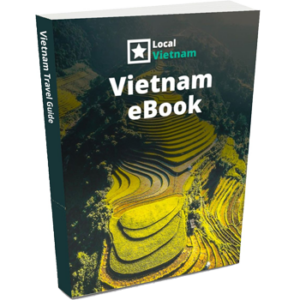
- Destination Guide
- Essential Guide
- Getting Around
- Vietnam Month by Month
- Vietnam blog
- Travel tips
- Custom Made Trip
- Day- & Multiple Day tours
- Holiday Packages
- Local Meo Vac Homestay
- Local Dong Van Homestay
- Our Team & Company
- Our Customers & Reviews
Copyright © 2023 Local Vietnam
Start typing and press enter to search
Free ebook vietnam travel guide.


Vietnam Travel Guide
Last updated on May 18, 2024 by Shannon

While lumped together with Southeast Asia for geographic and tourism purposes, Vietnam stands out as a destination unique among its neighbors. Each region balances the other.
The frenetic chaos in Saigon is just a stone’s throw from the sleepy colonial towns in the Mekong Delta. Hoi An’s charming, historic ancient town is a mere 40 minutes from the fast-growing and friendly Danang.
History and tradition infuse every aspect of life in Vietnam—from food to religion—and the culture and people are remarkably welcoming to tourism, having built a thriving industry that makes traveling and backpacking in Vietnam unforgettable.
As such, modern Vietnam is a favorite hotspot for budget-loving backpackers traveling Southeast Asia , and destination travelers from all over the world. Although I had spent years traveling other regions of Asia, Vietnam was my final country to visit on mainland Southeast Asia. What an incredible experience.
I have no idea what took me so long to backpack through Vietnam. I spent three months traveling south to north and I discovered cities across the country highlighting various aspects of Vietnam’s long history. I traveled from the War Remnants museum in Ho Chi Minh City to the Japanese and Chinese influenced Hoi An to the French-influenced coffee and baguette culture throughout.
Vibrant, unique, chaotic, traditional—no single word sums the experience of traveling Vietnam.
If you’re visiting Vietnam, this guide covers the essential travel information you should know, pre-trip reading , how to travel responsibly in Vietnam, and specific travel and accommodation recommendations to jumpstart your research.
Table of Contents
Is it safe to travel in Vietnam?
Vietnam is safe for travelers on the physical level—you don’t have to worry about bodily harm from the Vietnamese people. That said, theft is an issue and the scams center around money. Travelers should never walk the streets with cameras and bags draped on their shoulder or a motorbike might speed by and grab it from you.
Wear your purses cross-body and cameras secured to your wrist or neck. For the same reason, don’t walk with your cell phone held away from your body (consider investing in a phone leash ) they are fantastic and give peace of mind when wandering).
In touristy areas especially, count your change. Confirm your taxi fare before the ride (or just use Uber , which is what I did—it’s explained more in the transportation section). Use TravelFish to research possible scams in places like Hanoi , Hoi An and Saigon . Since anything can happen on the road, I am a firm advocate of travel insurance and I always carry IMG Global travel insurance .
In addition to the safety concerns listed above, many travelers rent motorbikes and scooters in Vietnam. This is a dangerous place to learn to ride. In the months I visited, I saw dozens of travelers with serious road-rash scarring their bodies.
If you rent a motorbike, please make sure it’s covered by your travel insurance (usually only if you are licensed to drive in your home country) and that you wear the proper gear to protect you if you fall (pants and good shoes). If you have respiratory issues, pollution is a problem in both Hanoi and Saigon, so bring a surgical mask.
Fast Facts About Vietnam Travel
Vietnamese Dong (VND) ( current exchange rate )
Electricity
127V/60Hz (American or European plugs both work here, although only without the third prong)
Primary Airports in Vietnam
- Saigon’s Tan Son Nhat Airport (SGN)
- Hanoi’s Noi Bai Airport (HAN)
- Da Nang International (DAD).
Can you drink the water in Vietnam?
No, it’s not safe to drink the local water in Vietnam. Drink bottled, bring a reusable water bottle so you can buy big jugs, or consider the merits of a SteriPen or LifeStraw for your trip.
How’s the internet in Vietnam?
WiFi is rampant and thoroughly spread even into the smallest of Vietnamese towns. Saigon has a bustling café culture and these coffee shops all offer fast free WiFi. It’s also a standard amenity in all hotels and guesthouses.
You’ll need a VPN if you plan to access many U.S. sites and to stream U.S. Netflix. A VPN is also crucial for those working from abroad since many U.S. sites either IP block or serve an international version of their sites. I’ve used NordVPN since 2016 while living abroad and it’s never failed me once.
Local SIM Cards
Data is very cheap in Vietnam, even the tourist bundles (locals have different rates, so ask your first guesthouse owner to buy your SIM card if you’re a data hog and really need a lot).
I paid 70,000 Dong for 16 GB lasting three months, and the tourist rate is about 150,000 Dong for 8 GB lasting two months. Because I had so much data, I tethered my phone and worked from my data when I encountered slow speeds. Read a full Vietnam SIM card guide here .
And it’s handy that NordVPN works on my iPhone, too.
Vietnamese Visas
The visa situation for North Americans changes often and is entirely unpredictable. That said, in early 2017, the government implemented an online e-visa program that is fast, safe, and affordable.
For more information, check the visa requirements here . While most visitors had to arrange a visa through a third-party company, that is no longer the case, so use the government site directly to avoid fees.
Festivals of Note
- Tết is the country’s New Year’s celebration and is huge throughout Vietnam (late January or early February).
- Lantern Festival in Hoi An (14th day of every lunar month—not calendar month—so research to find out when it’s happening).
Food Considerations
Vietnam is one of the best food destinations in Southeast Asia. The country has a vibrant street food culture and a range of different dishes from north to south. If you are vegetarian, it’s possible to find food, but not always street food. And you have to be diligent.
On my Vegetarian in Vietnam guide , I outline the considerations and obstacles. If you’re celiac, this is a fantastic and thorough post , complete with a downloadable GF translation card .
This post shares the most common street food dishes you will find, and this book chronicles a beautiful food journey through Hanoi. And if you decide to eat street food (which you will!), follow these food safety principles .
Pick out accommodation on Booking.com.
This is the only booking platform I use because it rewards you for loyalty, and I regularly score free breakfasts and 15% off my hotel.
Accommodation
The links in city guides below go to my favorite hotel booking site, Booking.com many options are also found on or VRBO , if you are member.
For backpackers and families, Booking.com is perfect for pre-booking hostels and hotels; in high season the bigger towns book up fast ( Hostelworld has a solid selection of hostels, too).
And if you buy a local SIM (which you should), you can easily call ahead and directly reserve spots en route. If none of these will do, check out my detailed guide to finding good places to stay .
What’s the weather like?
Vietnam is long, with a varied topography, meaning at least one region has poor weather at all times of year. This chart is by far the best visual to use in planning your trip weather-wise (although note that Jan/Feb is noted as clear for Sapa, when in reality it’s bitterly cold and often very foggy).
How much should you budget to travel in Vietnam?
Vietnam may well be the most budget-friendly location in Southeast Asia, and that is saying a lot, because nearby Thailand , Laos , Cambodia are quite affordable. Budget backpackers sleeping at hostels and eating street-food will easily stay under $20 a day.
The only activity requiring you to splash out on cash is a Halong Bay Tour—and often you will get better value for a bit more if you choose your tour company wisely.
Mid-range travelers will spend $25 a night on nice accommodation (with A/C and spacious rooms), and another $10-20 on food. High-end travelers get a lot bang for their buck as even nice hotels and food are affordable—scale up from the mid-range budget of $45 a day depending on if you choose to splurge on food, accommodation, or both.
How to Get Around Vietnam
Most backpackers in Vietnam take an overland route starting in one of the two primary cities, either Hanoi in the north or Saigon in the south. Vietnam offers train travel in many areas and buses in others—you can suss out the best routes around Vietnam on Bookaway .
It’s a very long country, so keep that in mind when you consider timing your trip. The distances are longer than you expect and if you’re cramming the entire country into a short week or two-week trip, you will need some long overnight trains and buses to navigate it all.
Air travel is another option. VietJetAir is the country’s privately run low-cost carrier and you can find fares as low as $25 to hop around the country. This is mega convenient and I recommend using SkyScanner to search for fares since it includes all the regional low-cost airlines.
Locally, when you are within a city you will likely use mototaxis and taxis to navigate. Uber operates in this area and you can even catch a mototaxi with it! Instead of haggling with xe om drivers, I used Uber exclusively in the cities.
And because of the taxi scams in Saigon and Hanoi, I stuck with Uber getting to and from the airports and such, but if you need to hail a cab, stick to either Vinasun or Mailinh.
If you have a local SIM, Grab is the regional version of Uber and offers slightly better rates. Either option works, I used Uber because I already have an account that I’ve used in dozens of cities around the world; I highly recommend that travelers at least sign up for Uber and have it in your phone because you never know when it will come in handy to summon a ride and get out of a sticky situation (happened to me in South Africa!).
History to Know Before Traveling to Vietnam
Vietnam has a lengthy and complex history, with each layer still visible in modern Vietnam. From tangible evidence of French colonial rule to the aftereffects of the American War and a food culture deeply influenced by the international flavors and cultures—this country has a lot on offer from north to south.
Vietnam has a lengthy and complex history, with each layer still visible in modern Vietnam. Consider this a quick rundown on the basic backstory you’ll need to understand and enjoy traveling and backpacking through Vietnam. Ruled by the Chinese in 111 B.C., Nam Viet (what we now know as Vietnam) was a part of the Han Dynasty.
Over the next thousand years or so, Vietnam remained in the hands of the tyrannical Chinese, before regaining full control of their country in the 15th century. By the middle of the 17th century, Vietnam’s independence was being chipped away by France and in 1884 France gained full colonial control over Vietnam.
France’s impact on Vietnam is a living, breathing, tangible part of modern Vietnam, which is why you need to understand this history before traveling there. The French brought a Western-style education system, European architecture and food, and also instituted political and cultural changes.
Not surprisingly, despite some good brought by the French, many Vietnamese were unhappy with colonial rule. The Viet Minh attacked French forces in 1946, which eventually ended with Geneva peace talks between the nations and the decision to split Vietnam in half: north and south. The communist insurgency began 1957 in South Vietnam; two years later, weapons and men from North Vietnam began gathering in the south.
In response, the United States increased aid to President Ngo Dinh Diem. By 1963, the Viet Cong, a communist group specializing in guerrilla warfare, defeated The Army of the Republic of Vietnam. In a U.S.-backed military coup, representatives from The Army of Republic of Vietnam overthrew and killed the President Diem ; U.S. intervention in Vietnam would only escalate from this point forward.
In response to the threats posed by the North Vietnamese and the Viet Cong, by 1967 the U.S. had sent roughly 500,000 troops to Vietnam. The Vietnam/American War lasted far too long, fueled by poor decisions made by U.S. politicians and resulting in horrifying escalation of violence throughout the war (this is a sad and informative visual history of the war ).
Many thousands of people were killed before Paris peace talks brokered a ceasefire agreement in 1973. By that point, the actions by American troops had forever changed the country as the after-effects of Agent Orange and other chemical weapons continue to impact the Vietnam even today.
Two years after U.S. troops left, North Vietnam invaded the south and took control of the country. As the socialists assumed control over the country, hundreds of thousands of Vietnamese continued to flee, many resorting to crowding into small vessels—anything to escape life in Vietnam. This war is one key reason for the massive Vietnamese diaspora spread around the world.
It’d be great if the warfare ended there, but tired of the Khmer Rouge attacking remote villages near the border, Vietnam invaded Cambodia in 1979 and removed the Khmer Rouge and Pol Pot from power. Ten years later, Vietnam removed their troops from Cambodia. There is still a large ethnically Khmer population in Vietnam’s Mekong Delta region. Since the 90s, Vietnam has grown and the government has stabilized, with tourism a major contributing part of the country’s economy.

Pre-Trip Reading Inspiration: Books About Vietnam
Fiction & Nonfiction Books About Vietnam
- Catfish and Mandala : Travel memoir is often an intriguing way to learn about the culture. A Vietnamese-American return to the Vietnam he left as a young child when his family moved to California. He bicycles around the country, and the journey is beautiful.
- The War. There are no shortage of books about the Vietnam-American War. If you read just two, go with The Sorrow of War , a harrowing recounting of the war and aftermath written from the perspective of a North Vietnamese soldier, and Embers of War , a Pulitzer Prize winning account of the long path of policies and leaders that eventually led to the devastating war.
- Saigon: An Epic Novel of Vietnam : For historical fiction that perfectly accounts the war, but contextualizes it with romance, politics, story, and intrigue, this novel is a better read for those less inclined to learn about the war through drier non-fiction books.
- The Beauty of Humanity Movement: A Novel : Showcasing modern Vietnam in the context of its war-torn history, this beautiful novel takes place in Hanoi and is an easy read. If you’re looking for a better cultural look at contemporary Vietnam, however, Vietnam: Rising Dragon is my recommended non-fiction read.
- Inside Out and Back Again : A beautiful and lyrical story written from the perspective of a 10-year-old girl. This is a wonderful family-friendly read if you are traveling Vietnam with children.
- Eating Viet Nam : A journalist moves to Hanoi and begins a food journey through the back alleys and tiny street stalls of Vietnam. A great read for food lovers.
Podcasts and Online Reads
- The Sandwich that Ate the World : A close look at the history of bánh mì, a tasty Vietnamese sandwich that is wildly popular in Vietnam, and how that love has spread around the globe.
- The History of Pho : This longread recounts the history of Vietnam’s other famous dish, loved the world over: Pho.
- The Vietnam Solution : An interesting piece about current American and Vietnamese relations and how the two countries overcame the war to work together in modern politics.
Find more regional fiction and nonfiction books and long-reads .
Recommended Guidebook
I traveled through Vietnam using the Lonely Planet Vietnam . It was solid. It had just the right amount of detail I needed to understand the nearby travel options.
I used online booking sites ( Booking.com ) for accommodation, and then the Lonely Planet to help figure out transportation and what to do nearby.
Socially Responsible Travel in Vietnam
Let’s talk about socially responsible travel in Vietnam, as well as the greater opportunities in Southeast Asia. This topic has many layers. From volunteering to donating to beggars to choosing ethical activities. It’s a complex situation.
Animal tourism has a dark side, and responsible travelers should research alternatives. Child sex trafficking and tourism is particularly an issue in Vietnam. Environmental pollution from tourism has devastated parts of Halong Bay.
There are a lot of considerations. All travelers should also read this post on giving to child beggars ; you will face this conundrum, so it’s best to be ready. Read our full Vietnam Responsible Travel & Social Enterprise Guide (and one more general responsible travel in Southeast Asia to lessen your impact on any place you visit, then read below for specifics to Vietnam.
Let’s jump into activities you might want to do, as well as alternatives that are just as fun! And at the end, I share tips for responsible volunteering in Vietnam.
Engaging in Human Tourism
Vietnam is among the most unique places to participate in hill tribe tourism. Unlike the sketchy ethnic group tour options in Thailand , northern Vietnam has a well-developed infrastructure of hill tribe groups offering homestay and trekking. Most notably, Sapa O’Chau has a wonderful business model employing and supporting hill tribe communities.
Also, throughout Vietnam, home stays are a common and excellent way to respectfully visit rural communities, support the local economy, while also learning a lot about the people and culture. Use the regional and city guides below for links to community-based tourism options, and responsible tour companies throughout Vietnam.
Riding an Elephant
If you’ve long dreamed of riding one of these majestic creatures, you should read up on their treatment and what it takes to actually break an elephant’s will enough for it to perform tricks and ferry around tourists. It’s a sad industry and one that has grown exponentially alongside tourism.
Traditionally, the Southeast Asians used elephants for hard labor, to help clear land and forests. They make more money from tourism, however, and this has led to a cycle of overworked and abused animals. On the flip side of the debate , feeding an elephant costs a lot, and tourism (including rides) help mahouts afford to properly care for their elephant. It’s a complex, complicated issue.
There are options though! To the best of my knowledge, there are no responsible elephant experiences in Vietnam. There are, however, several sanctuaries in Thailand and Cambodia that offer responsible traveler-elephant interactions. Travelers love the responsible experience .
These sanctuaries are doing wonderful work to give elephants a home and a peaceful life. Avoid elephant experiences in Vietnam, and check out the Save Elephants Foundation to plan a visit in Thailand or Cambodia.
Side note. Generally, avoid riding any exotic wild animal. Riding ostriches in Dalat is gaining popularity and it’s beyond unfortunate. An ostrich’s body is not designed to hold an adult’s weight and these animals fully panic when ridden.
Buying Endangered Animal Products
Vietnam has a massive industry built around selling, exporting, and trafficking in exotic wild animals. Likewise, many of these animals are used for tourist souvenirs. Avoid purchasing anything made from wild or endangered animals—turtle shells, skins, ivory, etc. And do not buy exotic animal meat or turtle eggs for consumption. Engaging in these practices is either illegal or contribute to the continuation of these destructive practices.
To ensure you’re buying authentic, ethical souvenirs handmade in Vietnam, shop at any of the fair trade shops that offer unique gifts made my vulnerable groups.
Haggling Too Much
Bargaining is a fun part of the culture in Vietnam, and it’s surely something you should engage in freely when buying fruit, souvenirs, and even tours. But be warned that certain over-touristed locations have started a dangerous precedence for the locals.
In Hoi An, for example, the prevalence of so many tailor shops has driven prices so low that some locations will accept a commission and lose money rather than lose business (the fabric is a sunk cost, so some are willing to lose net money if it means food on the table that night).
Bargain respectfully and remember, your sale is directly helping the local economy, so spend money and feel good about infusing your cash into the local economy.
Volunteering
Many travelers are keen to volunteer or support responsible businesses on the road. If you’re backpacking Southeast Asia, you may want to stop for a few weeks or months and support a cause near and dear to your heart. Since not all NGOs and volunteer companies are doing great work, consider this list of vetted independent volunteer opportunities in Vietnam .
Supporting Responsible Businesses
Vietnam has standout social enterprises operating all over the country. I highlight a few in the city guides below , and I profiled my absolute favorite social enterprises in Hoi An . Consider researching all of the options for supporting social enterprises on your trip .
Supporting social enterprises is one of the easiest ways to create a trip with positive impact. This means picking businesses that are using funds to support local communities and to offer training, support, or to protect natural resources. You can do everything from get a massage or pick a trekking guide—all with companies committed to social impact.
Don’t forget to book travel insurance for your trip —a great policy provides coverage in case of medical emergencies, lost or stolen gear, adventure sports riders, and more. I’ve used IMG Global for more than a decade highly recommend it !
Best Things to Do in Vietnam

Starting in southern Vietnam, I spent three months backing north through Vietnam. Many travelers pick a direction for their Vietnam travels since the country’s long and skinny shape lends itself to this style of travel—if you’re backpacking across Southeast Asia , your clockwise or counter-clockwise route through the region will determine where you start.
I used a combination of buses, trains, and budget airlines to skip over some long distances, but it’s super common for adventurous travelers to rent a motorbike and ride the length of Vietnam either independently, or on a tour, while exploring the vast number of things to do.
Three months doesn’t make me an expert, but I did find information was surprisingly scarce in some areas (the Mekong Delta), so I offer these city and regional suggestions below as an accounting of how I did the trip, great accommodation I discovered, and my favorite social enterprises and tasty eats.
My Favorite Experiences in Vietnam
- Sipping tea at the Reaching Out Teahouse in charming Hoi An .
- Boating through the Ha Long Bay region from Cat Ba Island.
- Boating through the karst rocks in Tam Coc.
- Spending lazy days in the sun-drenched colonial towns in the Mekong Delta region.
Best Things To Do in Saigon
Humidity, noise, and a friendly face greeted me when I landed in Ho Chi Minh City airport. My friend James has lived in Ho Chi Minh City (known as both HCMC and Saigon) for several years, and he met me at the airport and served as my official welcome party over the next two weeks I visited the city.
We mowed down on spring rolls the first night, and then toured a range of tasty veggie spots and coffee shops around the city. I am far from the expert on this massive, vibrant city, so I polled my global community of travelers for inspiration and guidance during my time.
And I researched, a lot. I detail the handful of things I did before I traveled south to the Mekong Delta, and I’ll link out to other fantastic resources that will allow you to eat and sightsee your way around Saigon.
Take a self-guided walking tour of District 1 highlights.
Most tourists stay in D1 and spend most of their time exploring this part of the city—it holds the bulk of the historical monuments, museums, buildings, and markets. Grab a map or use your smartphone to walk the city.
You could start at Ben Thanh market, then pass the Ho Chi Minh City Hall and head toward Notre Dame Cathedral and Central Post Office—each of these are beautiful structures.
Be sure to enter the post office and look at the old city maps along the walls. From there, you can either head to a coffee shop along the waterfront and beat the heat of the day, or loop around to visit the two primary museums that tourists should visit.
Visit the Reunification Palace and the War Remnants Museum.
You could combine this with your walking tour, or fill a different afternoon with these two activities. Each one is a must visit, though if you had to pick just one, I recommend that all Americans should visit the War Remnants Museum for a sobering take on the Vietnamese-American War.
Spend a half-day visiting markets and temples in Saigon’s Chinatown, Cholon.
Either take the bus or a mototaxi to Cholon in District 5. This makes for a fascinating morning wander, especially for photographers or those keen on visiting architecture and temples. Check out this blog post for all the details —I saved the map offline to my phone, then used it as a guide throughout the morning.
I started at Binh Tay Market (furthest point east of D1 on the map), and walked back toward District 1, zig-zagging through town to see the buildings, pagodas, and churches. I summoned an Uber back to D1 once I had reached the end of the marked Cholon sites. All told, it took three to four hours at a very leisurely pace.
Hang out at a coffee shop.
The coffee culture is alive and huge throughout Vietnam, but especially in Saigon, where local chains dot every corner and hipster boutique coffee shops hide in plain sight. Many cafes have balconies overlooking busy intersections or streets, making for prime people-watching.
These cafes are also the ideal place to work from if you have a bit of travel planning research or work on your docket. This post has a map you can use to find an expat’s extensive list of quirky, fun, and unusual coffee shops throughout the city.
Take a day trip.
There are several popular day trips from HCMC. The Củ Chi Tunnels is the most common and you can join a tour bus from the backpacker district for less than $10 for the day (negotiate, negotiate, negotiate). You could also head to the beaches of Vung Tau . Although I skipped this day trip in favor of flying to Phu Quoc , Vung Tau is a popular day or weekend spot that is quite easy to get to from HCMC, from what I am told.
Lastly, you could take a day tour to the Mekong Delta—it’s a canned tourist experience with heavy sales pressure at points, but if you’re pressed for time, you could get a taste of the Delta on the day trip (I opted to spend nearly two weeks in the Mekong Delta and below I detail how you can navigate the sun-drenched delta towns).
If you go for the day or overnight tours, consider researching more creative tour experiences, like the Delta by Vespa , or a private guide navigating you by motorbike through the interesting towns.
Sip coffee at Quán Cà Phê Cheo Leo.

This is a completely local spot beloved by those who sip local iced coffee and tea throughout the day. The owner has been written up in several local publications for her decision to continue preparing the coffee using traditional methods.
Grab your coffee from a new spot every morning.
Chances are that your guesthouse or Airbnb has several neat coffee shops nearby. Star this free Google map of the city’s coffee shops and try a new one every day.
Eat something tasty in Saigon.
Vegetarians in Saigon will find a wide range of tasty eats, although it’s hard to eat street food throughout the city unless you know where to look. But there are a plenitude of tasty vegetarian restaurants. Use Saigon Vegetarian and Happy Cow for initial ideas, and I marked a few of my favorite spots on the Google Map. Although many of the vegetarian street eats are sweet and dessert-like, I’ve included a few street food stalls on the map, too.

- Sample tasty food at Hum Vegetarian, Cafe & Restaurant . (32 Võ Văn Tần). Convenient place to eat just near the War Remnant’s Museum. It’s mid-range price but the dishes are beautifully prepared, the setting is lovely, and I highly recommended eating here. It offers both Western and Vietnamese dishes, but there are plenty of tasty dishes that do not rely on fake meat.
- Find evening street eats near Mani Vegan . (291/2 Võ Văn Tần). Although I didn’t sample this restaurant, there is a street food stall out front that serves delicious vegetarian soups and spring rolls. She’s there most nights and was the only one serving food on that corner, but be sure to confirm it’s “chay” before eating.
- Use this street food guide to eat well in Saigon . It includes a rundown of the dishes, as well as where to find them in the city.
Sleep somewhere central in Ho Chi Minh City.
With several weeks in HCMC, I tested out a couple of accommodation locations before settling on a VRBO located on a quiet street about halfway between the Ben Than market and the Pham Ngu Lau backpacker/party district. J
ust a six-minute walk to either area, it was central without having a party vibe and few other tourists. Those on an extreme budget and those wanting proximity to the backpacker scene will likely stay in Pham Ngu Lau, others should look for a place walking distance to the main sights in District 1.
- Book a VRBO in a central spot . Vacation rentals in HCMC average about $30-60 for a modern room that sleeps two people and often includes a kitchen nook where you could store breakfast items. Some have multiple bedrooms or beds and can sleep more, or a few even offer penthouse views for a bit more money.
- Stay at a central hotel . Uber-budget travels should look at Vintage Hostel Saigon and La Hostel Saigon . Midrange options are plentiful, including Ngoc Phan Guesthouse and Town House 50 Saigon (both a hotel and a hostel), and for a nicer central spot, consider Cap Town Hotel .
Phu Quoc Travel Guide
Phu Quoc surprised me with its lovely vibe and laid-back beaches. After years of avoiding the party vibe on the busiest of the Thai islands, I had feared that Phu Quoc would follow a similar fate.
Well, it’s not there yet. I tacked this trip on the end of my three months and I flew round trip from Hanoi for less than $100—Vietnam’s budget airlines have amazing deals. So, with flights secured I enjoyed a full week down south, with my last days coinciding with Tet holidays.
I had anticipated either the place would be packed, or everything closed. In reality, most of the island is open during Tet, but the restaurants tack on a surcharge to every meal. You’ll find quiet beaches during the day, and a bit of a party at night, if you want it.
The night market underwhelmed me, but it’s there if you want seafood and souvenirs one night. Otherwise, head to a resort or bungalow for beach time. The island has a lot of investment income—new airport, new roads, new resorts, etc.
So it’s developed, but in the anticipation of large-scale tourism, which it’s not there yet. It’s a beautiful island and I recommend at least a few days here, especially if you are at the end of your travels and need to detox a bit.
Enjoy pristine sands at Sao Beach.
Located a 30-minute motorbike ride from Long Beach, this is the most gorgeous white sand beach you can imagine. It’s very lightly developed, so pack snacks, sunscreen, and a good book.
While there are many chair and towel rentals just near the parking lot, walk further down the beach for shady palms and open sands. To get there, I rented a motorbike from my accommodation and drove out there for the day with a travel friend.
Sleep somewhere budget but nice.
Stay at Kim Lien Phu Quoc Guesthouse for private budget accommodation. This guesthouse offers a convenient location and basic but clean accommodation.
Although the bungalows are not beachside, you are incredibly close. It’s a one minute walk through Rory’s Beach Bar to reach the sand and sun. The family is exceedingly lovely too, and I enjoyed my time there.
Splash out some cash for a great sleep.
Splurge for luxury at La Veranda Resort . While I didn’t stay here, I chatted with a Canadian couple several mornings in a row who use this resort as their go-to vacation spot in Vietnam. The husband works for Vietnam Airlines and they escape here on long weekends.
Sip drinks at Rory’s Beach Bar .
This spot is pricey by Vietnamese standards and it’s straight-up Western, which is sometimes welcome. The Aussie owners serve the best cappuccino on the island and offer creative Western dishes if you are jonesing for a change of flavors. It’s also the central backpacker hangout spot on Long Beach, so head here if you want drinks and a bit of a party vibe in the evening.
Eat at September Vegetarian.
September Vegetarian (141 Trần Hưng Đạo) offers creative vegetarian fare and tasty smoothies. The restaurant is right on the main street, so the location is unfortunate, but the staff is friendly and the food is great.
Enjoy beach-side barbecue.
Around sunset, all the beachside restaurants on Long Beach set up barbecue stations and display fresh, iced fish and seafood. While expensive, my traveling friends said their meals were spectacular. Walk along the beach at sunset and you can peruse the selections and find ones that hit your price points and food preferences.
Things to Do in Hoi An
My custom Google Map shares a full list of cafes and vegetarian friendly spots and you can easily save this map and see it overlaid on your own Maps app while you’re in town.
I was in Hoi An for several weeks, so I visited many places. For that reason, the cafes and restaurants are just my favorite spots that I found myself returning to time and again.
Visit the historic sights in Old Town.
You’ll buy a pass at one of the entrances to Old Town. This pass includes entrance tickets to any five of the 22 UNESCO World Heritage Sites. Each time you enter one, you’ll need to hand over your pass and they will snip one ticket.
Admire the Japanese Bridge.
The Japanese Bridge (Chùa Cầu) is obviously gorgeous and worth visiting and photographing, but the shrine inside is quite small and I don’t recommend that you hand over a ticket to visit—you can walk across the bridge with just your tourist pass, no ticket required. No matter how hard they try to snip your pass, don’t let them unless you’re keen to see the shrine.
Photos from the bridge are lovely, although you will likely want to circle around to the small footbridge that gives you reflective views of the Japanese bridge in the water. Visit both day and night as it looks entirely different and they do a great job illuminating the structure.
Take in the vibes as you photograph Old Town.
Hoi An is seriously pretty. It’s also seriously touristy. More so than any other spot in Vietnam, you will find yourself navigating waves of Chinese and international tourists.
The crowds thicken throughout the day, so your best bet for gorgeous photographs is to roll out of bed early and stroll through town at sunrise. That’s when the sunshine-yellow houses look most atmospheric and you’ll be one of the few tourists up that early as the locals rush through breakfast and preparations for the day ahead.
This is a great blog post outlining timing and how to get gorgeous photographs in and around Hoi An . I was crushed that I couldn’t take this photo tour , but the photographer was away leading a tour in Burma, so I’ll have to do it next time.
Visit all of the main sights at night, too!
Lanterns light the streets of Hoi An and it just couldn’t be more picturesque. If you enjoyed the city during the day, it’s time to take a look at your favorite parts at night, too.
Wander the central market.
You’ll find a labyrinth of food stalls inside of the central market, and numerous fruit and vegetable sellers lining the streets around the market. This is a good spot for lunch (there is one veg-friendly restaurant in the northeast corner inside), and also just interesting to see and experience the bustle of locals going about their daily business.
Sip tea and support a social enterprise.
Stop by the Reaching Out Teahouse (131 Trần Phú). Visiting this teahouse was a highlight of my time in Hoi An. It’s a quiet sanctuary away right in the center of Old Town. While the streets can be crushingly busy, the teahouse is run as a social enterprise employing deaf people from the local community.
The staff communicate through gestures, small word blocks, and notes. It’s thoroughly lovely and I recommend the tea or coffee tasting and sampling all the handmade sweets. Read my full profile on this delightful social enterprise.
Visit the temples and historic halls.
There are several main temples that travelers should explore to soak in Vietnam’s cultural heritage. One key significant site is the Quan Cong Temple, dedicated to General Quan Cong, adorned with exquisite carvings and remarkable craftsmanship.
Additionally, the Phuc Kien Assembly Hall, Trieu Chau Assembly Hall, and Quan Thang Ancient House are must-visit destinations, each showcasing distinctive architectural features and offering insights into the town’s history and multicultural influences.
The map above shows the five places I think you should visit in Hoi An if you buy just one tourist pass while in town. These include the three ancient houses of: Tan Ky, Duc An, and Quan Thang. Also visit The Museum of Trade Ceramics, and Phuoc Kien Assembly Hall—the most impressive of the ones in Hoi An.
The Museum is low-key and the most interchangeable of the recommendations, so consider visiting a second assembly hall if you’re not keen on reading about the history of trading and how that built Hoi An.
Bike the rice paddies (and stop for coffee and treats!).
Many guesthouses provide free bicycles for your use, or you can easily rent one in town. While you can use the bike to navigate around town, you should also head out on the road toward the beach and get lost in the rice paddies.
It’s nigh impossible to actually get lost, so you should instead wander through narrow lanes and dig deep into this rural slice of life right outside of touristy Hoi An.
You could also stop by Jack’s Cat Cafe for a coffee and cat cuddles—this social enterprise supports strays.
Visit the beach.
Near the beaches, try P&B Restaurant for food (corner of Nguyễn Phan Vinh and Hai Ba Trung) and Sound of Silence for a coffee—it’s has a great indie vibe.
Enjoy delicious vegetarian eats.
Eat something great at Minh Hien Vegetarian Restaurant (50 Trần Cao Vân). This is the best all-around vegetarian restaurant in town. They have an extensive menu with a range of options. This is a good spot to try vegetarian versions of local Hoi An specialties. They also have an informal cooking class every afternoon.
Other great vegetarian eats include:
- STREETS Restaurant Café was one of my favorite nice dining experiences in the city. This social enterprise is right in Hoi An’s old city and has a hospitality and culinary training program for disadvantaged young people in the community. The restaurant not only provides opportunity to youth but also funding to the work of STREETS INTERNATIONAL, an organization that develops and operates sustainable programs for street kids and disadvantaged youth in SE Asia and throughout the world. I LOVED their vegetarian cao lau (this is a dish local to Hoi An) and you should try it here (they have a non-veg version too).
- Bánh mì Phượng . (2B Phan Châu Trinh). The most famous place in Hoi An for the iconic Vietnamese sandwich. The egg one is vegetarian option, but make sure to also reiterate that you want it vegetarian so that they don’t use pâté or any other meat ingredients. Meat-eating friends said it truly was the best banh mi of their entire trip through Vietnam.
- Sample other restaurants. Morning Glory has beautiful dishes of Vietnamese food and several tasty vegetarian options—it’s midrange prices but a great spot for meat-eaters to try the local Hoi An dishes. I deeply enjoyed the pizza at Good Morning Vietnam (near Morning Glory, the general Google Maps location is wrong; my map pinpoints it accurately). My custom Google Map shows all my other favorite spots. Or my friends Simon and Erin have shared a great guide to vegetarian restaurants in Hoi An , which provides a few recommendations that I did not include here.
Sample the best coffees in Hoi An—there are a lot!

- The Hill Station Deli & Cafe . (321 Nguyễn Duy Hiệu). A stunningly pretty spot, make sure you go upstairs. This is the most hipster spot in town and a surprisingly quiet setting to sit with a laptop or a book. If you’re into Instagramming against textured walls, you’ll be here doing that for hours. The menu offers artisanal cheeses and high-end charcuterie, as well as a mix of neat jams and other items from various provinces in Vietnam. The coffee is well-priced and equivalent to any place in town. The meals are a bit more dear, with most things starting at 100,000+ dong per dish. I spent Sunday mornings as the only person writing in the picture-perfect room upstairs.
- Faifo Coffee . This spot has excellent coffee and gorgeous upper floors with views of Old Town. Very chill place to sip coffee and relax.
Sleep somewhere nice.
- Midrange : Longan Homestay is my absolute top recommendation for budget to mid-range travelers. This spot is a four-minute walk to the Japanese Bridge entrance to Old Town, and an easy 15 minute walk to the backpacker street. It’s on a quiet side street, so you will get a good night’s sleep. Plus, it’s nice to be away from the action, but still so close. The family is so lovely and I spent two weeks here so that I could catch up on work while still exploring from a convenient base.
- Budget : Backpacker accommodation is condensed into one area, and it’s a bit intense if you’re spending anything more than a few days in town. Stay at Tipi Hostel for the a classic uber-budget backpacker option where you’ll meet new people and it won’t break the bank.
- Stay near the beach : To stay near the water, head to An Bang Vana Villas for budget accommodation, and Under the Coconut Tree for mid-range prices in a quirky setting.
Hue Travel Guide
Central Vietnam experienced historic flooding and rains during my visit, and this impacted my time in both Hoi An and Hue. For that reason, I don’t have a heap of information on what to do. I spent three days in Hue, and it rained buckets each day. I stayed close to town, wore sandals, used an umbrella and poncho, and explore anyhow.
Plus, I loved my guesthouse so much that I have to include it here. So if you are visiting Hue, you will need to use other guides too, but here are the things I loved from my friend time there.
- Stay at Hong Thien Ruby Hotel . One of the nicest places I stayed. The entire hotel is recently renovated. Although rooms are small, beds are cozy and all is spotless. It’s a great price too. Plus, the free breakfast is speedy and unlimited, and they always had welcome drinks and fruit plates when I returned from sightseeing. Can’t recommend it highly enough that you stay here while in Hue.
- Eat at Red Chili . There are many thoroughly tasty vegetarian items on the menu—good variety and well-flavored tofu dishes. The staff is friendly and didn’t mind when I camped out with a book and a hot tea one afternoon to beat the rain. It’s conveniently in the budget touristy area of town and makes for a great dinner or lunch.
- Eat at Lien Hoa Vegetarian Restaurant . This place is large and very popular with locals. The food was hit or miss for me as it’s heavy on the dishes made with textured fake meats. That said, the menu is extensive and it’s likely that there are many fantastic dishes (but the menu is not in English, so bring your cheat sheet of Vietnamese phrases and foods).
- Visit the Kinh thành Huế Royal Palace . The expansive Imperial City is a UNESCO World Heritage site and has large grounds and beautiful elements. Built in 1362, construction took 203 years to complete. This was the seat of religious and political power during the last royal dynasty in Vietnam, and visiting the Hue Complex is the primary reason many travelers pass through Hue.
- Venture out to Thien Mu Pagoda . Located on the river outside of town, this is a part of the UNESCO sites in Hue. Either arrange for transportation and a guide with your guesthouse, or you could easily bicycle out to this spot. This pagoda is included in the day tours outside of town.
- Consider using Hearts for Hue tour operators . Its main purpose is to improve the living conditions of the boat people in Thua Thien Hue Province, just outside Hue. It runs tours to local community projects as a way to generate income for its programs.
Hanoi Travel Guide
Densely packed and filled with history, visiting Old Town Hanoi is an experience unlike any other city in Vietnam. While some areas of Vietnam ooze charm (here’s looking at you, Hoi An), and in some the pace of life moves at a glacier pace (hello, Mekong Delta), Hanoi has a vibe entirely its own. The jumble of people, sights, smells makes every moment in the city feel alive.
I spent more than five weeks in Hanoi house sitting over the holiday season. The expats returned home for the holidays, and I had a gorgeous flat overlooking the lake in Tay Ho—the residential and quieter part of the city.
I spent one week of that time in a wonderful hotel in Old Town that comes with my utmost recommendation. While there are many guides to the city far more comprehensive than my own, here’s a brief list of my favorite places and sights.
Use your smartphone to zip around the city.
I used Uber almost exclusively in the city, although I used the public bus once or twice from the airport (so handy!), and used private VIP coaches between cities around Hanoi for my day trips.
This map has the Hanoi bus routes if you’re feeling enthused to sort it all out. If you don’t use Uber or Grab, you should only use one of three trusted taxi groups Mai Linh Taxi (0438-222-666), Taxi CP (0438-262-626), or Hanoi Taxi (0438-535-353).
Take a Hanoi Kids tour of Old Town.
Hanoi Kids is a social enterprise that offers free personalized city tours run by students who want to practice their English and learn of other cultures. Any donations go to the organization, not the guides, which keeps the entire exchange as this sweet experience of pure cultural exchange.
You can ask your guide to show you any aspect of the city—food, architecture, history, markets—and you will pay for their entrance fees into the sites, and any transportation, but nothing else.
I went on the tour after an ALA reader raved about her experience, and I echo her sentiments—it’s a fabulous way to see the city and you will end the day with a new friend. Highly recommend.
Visit the Temple of Literature.
This Confucian temple is gorgeous and a real highlight of the various temples in Hanoi. It was the first national university in Vietnam and it’s well-preserved and lovely to stroll the shady grounds on a nice day.
Walk around Hoàn Kiếm Lake and visit the temple.
Old Town circles this lake, so it’s easy to visit. Walk around the lake on a weekend morning and you will see many locals using the parks for exercise and enjoyment.
Relax at Omamori Spa.
Omamori Spa is a social enterprise that employs the blind, and the massages are spectacular. The only downside is that it’s far outside of Old Town, so you will need to use Grab or Uber for transportation. Call or email ahead for a reservation as it’s a small spot.
Organize a tour to Sapa with Sapa O’Chau social enterprise.
Sapa O’Chau is phenomenal social enterprise offering tours to Sapa with local guides and a lot of input from the indigenous groups you would visit. Includes treks, homestays, and most anything you’re interested in doing in Sapa.
Learn how to make your favorite Vietnamese dishes.
You’ve surely been mowing down on delicious Vietnamese food throughout your travels in the country, but you should consider learning the secret to all of those amazing flavors. Book a morning or afternoon cooking class with Rose Kitchen Hanoi to visit a local market for ingredients before having the chance to whip up your favorite Vietnamese dishes.
Try egg coffee!
You can’t leave Hanoi without sampling egg coffee, which is unlike anything you’ve likely tried before. Originating during the war, when milk was in scarce supply, the frothy, sweet egg coffee drink is delightful.
Although you will find many shops offering it, Giảng Cafe (39 Nguyễn Hữu Huân) is the best place to sample for the first time. Read more on the history of egg coffee , and this shop.
Pull up a tiny stool alongside locals for a delicious street food desert.
Mow down on chè, a local desert. On your evening wanders, stop by Chè 4 mùa (4 Hàng Cân), pull up a tiny stool among the locals, and point to whatever looks tasty. Although no one spoke English, the proprietress brought me the dish of the night, a sugary-sweet concoction with sesame and ginger.
Drink lots of Vietnamese coffee.
Vietnamese, in general, loves coffee, and Hanoians are no different. There are dozens and dozens of great coffee shops in Old Town Hanoi. Use the map to find my favorites when you’re out and about.
Eat something tasty.
If you’re on a gastronomic trip through Vietnam, then you should start your Hanoi travels by reading Eating Viet Nam , a chronicle of a journalist’s quest to eat the streets of Hanoi. Then try some of these wonderful restaurants in the city.
- KOTO Training Restaurant . (59 Van Mieu). This hospitality training restaurant aims to give at-risk and disadvantaged youth the possibility to learn and thrive in their lives. Located conveniently near the Temple of Literature, which you should visit, the food is priced mid-range and has many great Vietnamese dishes. It’s a social enterprise and mission worth supporting.
- Eat at the Hanoi Social Club . (6 Ngõ Hội Vũ ) . Delicious western food and has several great vegetarian options. It’s all very healthy and the vibe is cozy and nice, although very Western. There is live music certain nights during the week, so check the Facebook for details. Although not a formal social enterprise, the restaurant aims to hire those who have just finished the hospitality training programs.
- Sample favorite student street eats . This street food guide lists the most iconic dishes, and where the university students running Hanoi Kids go to find them.
Sleep somewhere central.
- Midrange : Mai Charming Hotel is my favorite spot in Hanoi . After several failed attempts at a good hotel, I found this budget to mid-range option, and then extended my stay since I so enjoyed my time here. Located near the cathedral, the staff go out of their way to make your stay amazing. Every single staff member learned my name and greeted me warmly, and provided great advice for onward travel. It’s central, cozy, and the free breakfast is filling. Rooms are newly renovated and bathrooms are modern—the most budget rooms are very small, but completely worked for one person. While there are certainly budget hostels, and pricier hotels, this place offers great value for money.
- Budget : Head to Hanoi Lotus Hostel for a nice budget travel spot. I booked a spot here after some long weeks of travel, when I was returning to the city and wanted to meet other travelers. There are many mega party hostels in Hanoi, and this seemed like a good alternative. A glitch in their system meant my booking didn’t go through (cue me scrambling for a place to sleep), but I did check out the place and would easily try again if I needed a hostel option in the city (they have a private room).
Mekong Delta Travel Guide
Many backpackers head to the Delta on a one- or two-day arranged tour from Saigon. This is a mistake. If you have a few days (or a week), head to the region as an independent traveler.
For me, I took the one-day tour to My Tho from Saigon and I brought my luggage with me and then journeyed on to Ben Tre instead of returning to Saigon with the tour bus. This is convenient if you want an easy ride out of town, but the tour is awful. It’s one of the worst packaged tourist experiences in my many years on the road.
Consider just heading straight to Ben Tre, or better yet, catch a bus to Can Tho, where I had a phenomenal tour organized from my guesthouse (more on that in second).
I took a mototaxi to Ben Tre from My Tho, and I spent two nights in Ben Tre, using my full day to take a long and scenic bike ride around the nearby islands. The next morning, I took a scenic cargo boat for six hours to Tra Vinh, a quaint and quiet city with a lively day market and a few interesting Khmer temples.
From Tra Vinh, I took a cheap and fast bus ride to Vinh Long, just 1.5 hours. Near Vinh long is the Cai Be market; it’s a larger market with the bigger boats selling bulk vegetables to vendors in the area. My tour left at 6am and returned by noon, so I took an afternoon bus to Can Tho, which was less than an hour away.
In Can Tho, I took a deep breath for the final push of early morning wake ups and river tours. I had the option of visiting the larger Cai Rang floating market and Phong Dien, or doing an alternative tour to Phong Dien and then a backwaters tour of the villages. I am so glad I did the second option as it was fascinating and exactly what I had hoped for in a tour of the Mekong Delta. From Can Tho, I took a cheap VietJet flight to Da Nang.
- Stay at the Oasis Hotel , this is the best accommodation option in town. It’s run by a Kiwi-Vietnamese couple, and the owner Ken is a character. It’s spotless, breakfast is tasty, and it has many cozy touches and a Western-style bed. Ken is a fountain of advice for onward travel too, especially if you are looking to explore the area off the path a bit.
- Relax with a drink . If you’re staying at Oasis, Coffee 3D is very close and is a great spot for an afternoon coffee or a sweet smoothie after dinner. It has wifi and a very relaxed vibe of teens and young couples hanging out.
- Bike through the countryside . Oasis provides free bicycles to guests and this makes navigating Ben Tre a cinch. Using the giant map painted on the guesthouse wall, I followed a route through the tiny paths and used tiny ferries to bike across two nearby islands. It was about an 18 kilometre ride that took about four hours with many stops for photos and coconuts to refuel—it was lovely.
- Visit the night market . Along the riverbank each evening you can find the usual street foods and wares for sale. It’s a pleasant, low-key town and the market reflects that.

- Visit the morning market . This morning market is my favorite in all of the Mekong towns. Tra Vinh sees few tourists and so the locals have a fresh and delightful joy in seeing you wander around. Many vendors beckoned me to their stalls and then asked to take their photo, or they asked me to photograph their son/cousin/reluctant brother, etc. It was a lovely way to spend the morning before my bus ride.
- Sleep somewhere central . Khách Sạn Thanh Trà is serviceable and central but completely underwhelming; this is where I stayed. They have several tiny rooms at backpacker to mid-range prices and will never be fully booked. If I go back, I will try Gia Hoa 2 , which looks just generally a bit nicer. Or consider staying in the rural areas at a nicer location, like the Coco Riverside Lodge , which looks a bit swanky and lovely.
- Stop at the Chùa Mạc Dồn pagoda . This is located very near to the bus station (which is on the outskirts a ways out of town) so it’s easiest to pay for your mototaxi/taxi to stop for a few minutes here before dropping you off at the bus station.
- Cai Be Floating Market . I organized the tour from my guesthouse and it had overtones of the My Tho tour, but nicer. The tour stopped at a coconut candy factory and honey farm, but it there was no pressure to buy and far fewer tourists. If you’re into the idea of visiting these shops and seeing how they make it, opt for a tour from Vinh Long. Alternatively, if you’re just interested in seeing the Cai Be floating market then you can bargain at the dock and arrange a morning tour with a guide who will motor you out to the market in a tiny boat, show you around, and then motor you back—I would do this option if I ever return.
- Van Tram Guesthouse is very near to everything and was perhaps the nicest value of all my time in Vietnam. The rooms are large and spotless. The only downside is the karaoke across the street until 10pm-ish. I had planned to stay at Hotel Ánh Hồng, but it was fully booked and I was good with Van Tram as my alternative since it turned out the most central budget option. Also, most tourists stayed on the island in a homestay. Having just come from very rural areas, I opted to stay in a guesthouse, otherwise, I had picked out the Bay Trung Homestay .
- Eat veggie food or at the local market . The owner of Van Tram Guesthouse did me a solid by scooting me across town to a hole-in-the-wall vegetarian restaurant. It’s linked on my custom backpacking Vietnam map . The market is just outside the hotel’s front door and makes a great dinner spot for non-vegetarians. If you’re wandering near the market at sunset, check the map and walk across the small bridge—great views and a long board walk on the other side makes for a wonderful stroll.
- Sip drinks riverside at Cafe Hoa Nắng . While I would not eat here, I did enjoy a coffee mid-afternoon and a cold been in the evenings. This is more than just a tourist spot, it’s favored with locals and makes for great people-watching.
Can Tho has an airport easily accessible from the city center. Viet Jet flies from Can Tho to various other cities around Vietnam (I flew to Hoi An/ Da Nang, and many travelers also fly to Phu Quoc or Hanoi). This was my last stop in the Mekong Delta before I jumped half-way up Vietnam to Hoi An.
The city is very plain; it’s primarily a stop-over point for travelers exploring the floating markets, or those en route to Cambodia. I actually traveled north, and then headed back down to spend a week lounging on the beaches in Phu Quoc—I highly recommended heading there after Can Tho so that you don’t have to back track.
- Visit Cai Rang and Phong Dien morning markets . Plan on a very early morning as the Cai Rang market begins as early as 5am. Many tours leave Can Tho around 5:30am so that you arrive while there is still a lot of activity. If you stay at a homestay then you will cut about an hour off of your morning commute to the market. These markets showcase a fading way of life. As bridges span more of the rivers, these floating markets are shrinking. It’s a lovely way to spend a morning.
- Stay at the Mekong Logis Guesthouse in Can Tho . I highly recommend this guesthouse; it’s among my favorite places that I stayed in Vietnam. The family is fantastic and so accommodating and the rooms are spotless and comfortable. The family goes out of their way to ensure you have all the knowledge and help that you need to enjoy Can Tho. I took Linh’s special tour. We rode motorbikes outside of town and then visited the smaller of the two markets by boat. After a tasty breakfast, we toured the smaller rivers and visited a few homes in the rural areas. She shares a lot about the culture and people as she shows you the region. The family speak French and English. Because I had already seen the market near Vinh Long, I appreciated that this tour included a few other aspects.
- Stay at the Nguyen Shack Homestay outside of town . I had definitely planned to stay here as my favored homestay in the Delta, but this place books up far in advance. It’s a lovely location and my best friend loved her time there so much that she wrote about the love story of the couple who run it . It’s outside of Can Tho proper and closer to the floating markets. You can arrange tours directly through them, too. And the market tours are generally cheaper from Nguyen Shack because you’ve already paid to travel outside of town.
Ha Long Bay & Cat Ba Island

This is a signature item on the bucket list for travelers in Vietnam. It’s a stunning UNESCO World Heritage site and worthy of a visit, truly. Before I visited, I had heard awful stories from travelers who had been scammed or disappointed by the experience of visiting Ha Long Bay.
The area is well trodden on the tourist path and, as such, there are a range of experiences on offer, and some are cringe-worthy. The moment that you step foot in the north of Vietnam, you will have no shortage of companies promising to arrange your Ha Long Bay excursion.
For my trip, I got myself to Cat Ba Island and only then entertained the various organizations trying to woo my business. I found a highly-acclaimed, locally-owned tour company and used them for a one-day trip around Lan Ha and Ha Long Bays. It was beautiful and I loved the experience. One of the sections below shares information for those also visiting via Cat Ba Island.
What Are Your Options?
- Book a Round-Trip Experience from Hanoi . If you are short on time, this is likely your best option. The companies will arrange for your transfer from Hanoi to the coast (about 4-5 hours all-in from Hanoi to the bay area). They will then put you on a boat for a one- to three-day liveaboard experience where you cruise around the karst rocks. The quality of your live-aboard varies wildly depending on your budget and your tour company. After your cruise, your tour deposits you back on a shuttle and brings you back to Hanoi.
- Stay on Cat Ba Island & Explore From There . Use the shuttle transfers to make the trip between Hanoi and Cat Ba Island (by way of Haiphong, since you’ll need to take a ferry to the island). From there, rent a room at the very affordable hotel rooms (private budget rooms are less than $10). Then organize either a day trip, or a multi-day experience. You will also have the chance to visit the beautiful national park on the island. From there, organize a shuttle back to Hanoi, onward to Sapa, or to Ninh Binh/Tam Coc.
- Visit a Different, Less Touristed Bay . Ha Long Bay has very likely reached peak tourism capacity. The UNESCO area extends across the entire Ha Long Bay Archipelago and to many other bays that are equally beautiful. When on Cat Ba Island, you are adjacent to Lan Ha Bay, which you can easily visit on a Cat Ba cruise. But there is one other main option that is just emerging on the tourism scene. Several travelers that I met in early 2017 had beautiful experiences on Bai Tu Long Bay. The boats running here are a bit pricier, but they are better maintained and it’s a far more remote and tranquil experience.
How to Choose a Tour Company
My hands-down best advice: Wait before booking. Do NOT allow any hotel or tour operator to pressure you into booking a trip before you have sat down with several companies and then researched them all on Trip Advisor.
The most common “scam”—which I use the word lightly because it’s not a full scam, it’s a case of unmet expectations—is to book you on a low-quality boat and take you on an underwhelming but well-trodden path. Some of the boats are dirty, dingy, and infested with rats or roaches.
When you book through a budget hotel or operator, there is no telling which company is actually running your tour.
Find a reputable company. Truly take your time deciding which company you use to book the multi-day cruises. I painstakingly researched before selecting Cat Ba Ventures , a locally run business of repute and was well pleased with the quality of my tour. Here are a few things to consider before booking.
- Quality of the boat . Many of the boats operating in Ha Long Bay are very old; some of the rock-bottom priced budget options are patently unsafe. There are high-end luxury boats, but you would likely have a good trip on a mid-range choice too, it’s not necessary to go luxury to have a good trip, it’s just necessary to know the quality of your boat. The less touristed bays tend to use newer boats from what the locals told me when I chatted them up on Cat Ba Island.
- Sights Visited . If you take a budget backpacker tour you can be 100% sure that you will share the bay each evening with hundreds of other boats, and your boat may tend toward the closer caves and inlets that don’t require much fuel for the boat to visit. If you do just one night, you really lack the time to visit anything in the remote areas of the bay. When you start from a different bay, or the island, you are able to see less touristed areas since you are starting far from the most popular tourist city, Ha Long City.
- Reputation . There are hundreds of tour operators booking trips. They dot every single corner of the northern cities. Use Trip Advisor to find one that you trust. Read the hotel reviews too for any associated properties as many guests book through the hotels and then include the review of the boat trip in their general review of that hotel. Hotels make a hefty sum from your tour package so they have an incentive to charge more and book you on the most budget option they can find. This happens a lot. Research.
- Price . The adage “you get what you pay for” proves true here. You don’t have to blow money to enjoy the trip, but I would highly recommend considering Cat Ba Island as a base for budget backpackers instead of the packaged trips to Ha Long Bay. You will pay about the same, so it’s still budget, but it’s just alternative enough to provide a better experience for the same price.
Cat Ba Island Travel Guide
- Get to Cat Ba Island with a shuttle service . Your hotel in Old Town can organize transport, or you can book it through either Good Morning Cat Ba (what I used to get there) or email Cat Ba Ventures to organize (that’s who I used to book onward trip to Tam Coc).
- Use Cat Ba Ventures for your boat excursion . This company has, by far, the best reputation on the island for a strong standard of service. The tours are priced mid-range, and the vibe on the boats is very nice since everyone paid a bit more to enjoy their trip. I took their one-day trip with kayaking. Cat Ba Local is much newer to the scene, but as of early 2017, feedback from other travelers indicated it was a more affordable alternative for budget travelers looking for something a small step down from Cat Ba Ventures but still well-run.
- Go rock climbing with Asia Outdoors . This is the only organization you should use if you are keen to organize rock climbing; it has a highly trained staff and was the original company pioneering the rock climbing scene in the region.
Day & Weekend Trips Around Northern Vietnam

The north of Vietnam is a gorgeous region of the country and has many of Vietnam’s most notable backpacker experiences. If you’re heading south, there are also gorgeous spots worth an overnight stay at the very least.
Tam Coc/Ninh Binh
- Stay at Nam Hoa Hotel in Tam Coc . I love this hotel so much. The staff is lovely beyond measure. The rooms are small but spotless and freshly renovated. It’s mid-range if you’re solo, but budget if you’re a couple and able to split a room. Breakfast included and an easy walk to town. Bike rental is free and the bikes are in great condition. Highly recommend that you use this as your base, I will stay here again.
- Homestay at Nguyen Shack . Although I loved Nam Hoa Hotel, I would be remiss to not recommend Nguyen Shack as a gorgeous homestay option. This tiny Vietnamese chain of bungalows is thoroughly lovely. If you’re after a home-stay experience then it will get no better than here. Book in advance as it is often fully booked.
- Eat at Sunflower Restaurant . Vegetarian options and is a low-key, locally run restaurant serving good food. There aren’t a ton of eating options in town, so this is a good lunch or dinner choice.
- Visit Hang Mua Cave by bike . The bike ride here is flat and easy, or you could ask the taxi to Tran An to stop here as well. However, you get there, hike to the top here for sweeping views over the river. My friend Jimmy visited, and his Tam Coc photos show just how beautiful it is at the top if the weather is on your side (it wasn’t the day I visited).
- Bike to Bich Dong Pagoda . This is a pretty spot and an easy ride from town. Although it’s not a “must visit,” if you have an extra afternoon in town, it’s worth visiting.
- Take a boat tour from Tràng An . If you’re staying in Tam Coc, rent a taxi for a couple of hours and take the boat tour from Trang An, rather than those offered in Tam Coc. The tours are run with precision since this is a UNESCO World Heritage site, and the scenery is stunning.
Onward Travel
Having spent years backpacking Southeast Asia across many trips, plan your time in the following locations.
Thailand » Chiang Mai | Digital Nomad Costs | Elephant Tourism | Loy Krathong | Songkran | Bo Sang | Transportation, Explained | Fun Facts
Vietnam » Hoi An | Eating Vegetarian
Laos » Luang Prabang | Gibbon Experience | Mekong River | Kuang Si Waterfalls | Pak Ou Caves | Vang Vieng
Cambodia » Angkor Wat | Apsara Dancing
Myanmar » Bagan | Inle Lake | Yangon | Hpa-An | Eating Vegetarian | Spirituality | Burmese Hospitality
How to Plan Your Time in Southeast Asia
📍 Navigate more effectively. Bookaway is super handy to assess the full range of transport options between two cities—it shows everything from flights to trains, buses, minibuses, and more. If you’re booking a rental car, I’ve always found the best deals on RentalCars.com .
🛏️ Find great accommodation . Agoda has the widest and most affordable selection in Southeast Asia. It’s part of the Booking.com family, but has better reviews for SEA. You can book hotels, hostels, and even vacation rentals.
❗ Yes, you need travel insurance . IMG Global is the travel insurance I’ve used for well over a decade of traveling solo, and with kids. Here’s why .
Book Tours Ahead of Time I use Get Your Guide to book locally run tours since I can assess the options, read reviews, and lock in a date.
✈️ Book affordable flights. Expedia and Skyscanner are the first places I look for low-cost flights .
🧳 Smart packing can save your trip. Shop my favorite travel gear , including all of the packing essentials for traveling , gear to keep you safe in Southeast Asia, my favorite travel books , and more.
📖 Read up on any off-the-path activities. Travelfish is among my go-to resources for anything in Southeast Asia. It’s updated far more often than print guidebooks and has extensive local insight and a fairly active forum, too. If you head off-the-path, this should be the first place you check for tips, transport advice, etc.
☕ Peruse all of my tips for round the world travel , or learn how to move and live abroad .
Vietnam Travel Guide: Travel Stories from the Blog
Discover all of my travel stories blogged in real-time while I was traveling through this beautiful country.
A Little Delight… Stories of Responsible Travel in Hoi An, Vietnam
ROOTS ABROAD

Vietnam Travel Tips | Complete Trip Planning Guide For First Timers
Planning your first trip to Vietnam? Excellent choice! Vietnam is a fantastic country with a mix of vibrant cities, beautiful countryside, rich history, and stunning coastlines. Whether you’re into bustling urban scenes or tranquil rice terraces, Vietnam has something for everyone . But, let’s be real, planning a trip to Vietnam can be a bit tricky. From its unique shape on the map to avoiding travel scams, there’s a lot to consider. That’s where this Vietnam Travel Tips guide comes in handy.
Whether you’re a newbie or looking for some fresh insights, we’ve put together a comprehensive guide to make your Vietnam adventure smooth sailing . Discover must-visit destinations, get help crafting your itinerary, and find practical advice on when to visit, visa requirements, travel costs, and other essential preparations. Once you step onto Vietnamese soil, our guide continues to assist you with valuable tips on getting a local SIM card, navigating transportation, handling finances, and becoming a bargaining pro. Get ready for an amazing journey with these essential Vietnam travel tips!
* Disclosure: This Vietnam Travel Tips post contains affiliate links. We will receive a small commission if you book through our links. This is at no extra cost to you. This way you’re helping us write awesome travel guides and keep providing you with free content. We only recommend products we like and trust ourselves.
Vietnam Quick Travel Tips & Facts
Planning your vietnam route.
Starting off these Vietnam travel tips, it’s crucial to understand how big Vietnam is. Traveling from one place to another might take longer than you think. Just to give you an idea, the train ride from Ho Chi Minh City to Hanoi is around 35 hours!
When planning your trip, keep these long distances in mind. Night buses and overnight trains are popular for covering more ground efficiently , but we’ll talk more about that later.
Vietnam can be split into three main parts: North, Central, and South. If you’re wondering how much time to spend in Vietnam, my suggestion is about one week for each region.
Even though Vietnam is sizable, some people try to see the whole country in one go. To do that properly, we’d recommend at least 3 weeks, but ideally 4 weeks.
To help you visualize, we’ve marked out some common travel destinations on the map below . It’s a handy reference for your Vietnam planning and travel tips.
The Best Places to Travel for Your First Time in Vietnam
Embarking on your first journey through Vietnam is like stepping into a vivid painting, where the landscapes shift from towering northern mountains to sun-soaked southern beaches . One of the most valuable Vietnam travel tips: Immerse yourself in the energy of at least one bustling city to truly feel the pulse of daily life in Vietnam.
Crafting a well-rounded experience means delving into destinations like Hanoi , the capital where history echoes through the charming Old Quarter, and Halong Bay , a breathtaking collection of limestone islands best explored on a sailing journey.
Move north to Sapa for captivating rice terraces and mountain treks, or venture to Ha Giang Province for its dramatic mountain scenery and encounters with traditional hill tribes, promising an authentic adventure.
In Ninh Binh , be prepared for landscapes that seem almost otherworldly, while Phong Nha invites you to explore the surreal underground world of the world’s largest caves. Further south, Hue welcomes you with pagodas and temples, offering a serene cultural embrace, while Hoi An , a charismatic town, captivates with its undeniable charm through its colonial architecture.
Nestled in the Central Highlands, Dalat offers a cooler climate. If you seek coastal experiences, consider lively resorts like Phu Quoc or Mui Ne , or opt for the quieter retreat of Qui Nhon . Down south, the Mekong Delta beckons with floating markets, providing a unique river experience. Finally, dive into the dynamic urban landscape of Ho Chi Minh City , where modernity and tradition coalesce seamlessly.
Together, these destinations create an immersive introduction to Vietnam’s beauty, culture, and diversity, ensuring your first visit is a memorable exploration of both the past and the vibrant present.
Bucket List Experiences
✔ Explore the Old Quarter in Hanoi: Wander through the historic charm of Hanoi’s Old Quarter and dive into Vietnam’s vibrant coffee culture at one of the adorable cafés.
✔ Join a Food Tour: Let an expert local guide your taste buds on a gastronomic journey, sampling the best dishes in every city.
✔ Light Lanterns in Hoi An: Experience the magical glow of lanterns illuminating the entire town of Hoi An at night.
✔ Get a Tailored Suit in Hoi An: Indulge in the tradition of hand-made suits, a popular choice among tourists in Hoi An.
✔ Explore Imperial History in Hue: Uncover Vietnam’s imperial history in Hue , where glimpses of the country’s past come to life.
✔ Indulge in Street Food: Immerse yourself in Vietnam’s rich culinary scene , trying local delicacies like Banh Mi and pho for as little as $1.
✔ Drive a Motorbike along the Hai Van Pass: Feel the thrill of the open road as you navigate the scenic Hai Van Pass on a motorbike.
✔ Trek the Rice Terraces and Stay with Hill Tribes: Escape the hustle and bustle by trekking through Sapa’s breathtaking landscapes, home to Vietnam’s highest peak, Fansipan. Experience the local culture by staying with hill tribes.
✔ Cruise through the captivating Halong Bay: Admire the majestic limestone rocks and take a refreshing leap into the tranquil waters.
✔ Eat Your Heart Out in Hue: Discover the delights of Hue’s imperial cuisine, from the renowned Bun Bo Hue beef noodle soup to an array of other mouthwatering dishes.
✔ Cross the Streets in Ho Chi Minh City: Immerse yourself in the vibrant city vibes of Ho Chi Minh City by navigating its bustling streets.
✔ Bike around Ninh Binh’s Countryside: Pedal through the lush countryside of Ninh Binh , exploring its picturesque rice terraces and scenic landscapes.
How Long Do You Need in Vietnam?
With so much to see, you could easily spend a few months in Vietnam and still discover new places. We’re big fans of taking it slow when traveling, especially on your first visit. Give big cities like Hanoi and Saigon at least three full days each to soak in the experience.
Getting to know Vietnam, its unique culture, traditions, and delicious food, takes time, and each region has its distinct vibe. If you try to rush through everything, you might miss out on the full experience.
Don’t be fooled by Vietnam looking small on the map— it still takes a while to travel around , especially if you’re relying on trains and buses. Adding a few domestic flights can be a smart move, saving you time and letting you explore even more.
However, as not everyone has so many vacation days in the year, for a well-balanced exploration, two weeks in Vietnam is an ideal timeframe . It provides a chance to witness the country’s highlights while traversing from North to South or vice versa. If time is further limited to just one week, consider immersing yourself in a single region , avoiding the rush and appreciating the richness without covering extensive distances.
Optimal for a more immersive experience, 3 or 4 weeks offer the luxury to deeply absorb Vietnam’s friendly and vibrant culture. This leisurely pace allows for a profound connection with the country.
For those with a generous six weeks, the opportunity to traverse the main regions and sights of Vietnam arises, with extra time to indulge in a bit of beach relaxation.
Vietnam Itinerary Suggestions
Here are some Vietnam itinerary suggestions based on your available time:
One Week in Vietnam Itinerary:
Focus on one region to minimize travel time.
North : Hanoi – Ha Long Bay – Sa Pa or Ninh Binh
Central : Hue – Hai Van Pass – Hoi An – Da Nang
South : Ho Chi Minh City – Mekong Delta – Phu Quoc
Two Weeks in Vietnam Itinerary:
Option 1: Cover main highlights from north to south (or vice versa):
Hanoi – Ha Long Bay – Ninh Binh OR Hue – Hoi An – Ho Chi Minh City
Option 2: Focus only on the North or South in combination with central destinations
North & Central: Hanoi – Sa Pa – Ha Long Bay – Ninh Binh – Hue – Da Nang – Hoi An.
Central & South: Hue – Da Nang – Hoi An – Nha Trang – Da Lat – Ho Chi Minh City – Mekong Delta.
Three Weeks in Vietnam Itinerary:
Dive deeper into popular spots with more time for exploration.
- Days 1 – 3: Hanoi
- Days 4 – 6: Sapa
- Days 7 – 9: Ha Long Bay
- Days 10 – 12: Ninh Binh
- Days 13 – 14: Hue
- Day 15: Hai Van Pass Day Trip
- Days 16 – 18: Hoi An
- Days 19-21: Ho Chi Minh
Check our comprehensive 3-week Vietnam itinerary guide for detailed suggestions and alternatives. If you follow our 3 weeks in Vietnam itinerary, all that is left to do is to book your accommodations and transportation for the duration of the trip. We suggest a variety of accommodation options for different budgets , so you can choose whichever one suits you the most. 12Go Asia is the best platform to book your transportation in advance.
READ MORE | The Ultimate 3-week Vietnam Itinerary for First-Timers
Where to start your Vietnam trip: North or South?
If you’re aiming to capture all the highlights of Vietnam, your best entry points are Hanoi in the North and Ho Chi Minh in the South . Given the country’s considerable length, starting in the center might not be ideal unless you intend to focus on one half exclusively.
Contemplating whether to kick off your Vietnam journey by flying into Ho Chi Minh and then heading north, or commencing the adventure in Hanoi and traveling south? There’s no definitive right or wrong here, as both directions are entirely feasible . While our suggested 3-week itinerary flows from north (Hanoi) to south (Ho Chi Minh), you have the flexibility to reverse it. Two considerations can guide your decision-making process.
Firstly, it’s wise to check the weather beforehand (see below), steering clear of chilly winter months in the northern cities or scorching summer temperatures in central and southern Vietnam. Secondly, assess which city offers more favorable flight options for your journey. Both Hanoi and Ho Chi Minh boast international airports connecting to the world and domestic flights, making either a suitable starting point for your Vietnam adventure.
Vietnam Planning Travel Tips: Know before you go
First-Time Vietnam Checklist
- Best time to travel
- Check Visa Requirements
- Book your flights
- Vaccinations
- Travel Insurance
- What to pack for Vietnam
- Determine your travel budget
- Pre-book internal flights and trains
- Pre-book popular tours, accommodations & Halong Bay trip
- Credit Card
- Download Useful Apps
Best time to travel to Vietnam
Once you’ve decided on the duration of your Vietnam trip, it’s crucial to determine the best time to visit, taking into account the specific regions you plan to explore. Vietnam, being a year-round destination, presents a climate that varies significantly between the northern and southern parts of the country. This geographical diversity can catch travelers off guard, assuming a uniform weather experience throughout.
For an all-encompassing exploration, March and April stand out as the prime months . During this period, lighter rainfall and pleasant temperatures prevail, making it an ideal time to catch all the country’s highlights. The north isn’t too cold, and the south and coastal areas aren’t excessively hot. However, it’s crucial to note the rainy seasons in both the North and South, spanning from May to October, with the additional need to avoid the typhoon season from September to November.
Weather in Vietnam can be unpredictable, ranging from freezing temperatures and heavy downpours to intense heat and evening storms. To choose the right season, consider your travel destinations and be flexible with your itinerary based on weather conditions. Avoid visiting during public holidays like TET to mitigate higher prices, closed shops, and reduced transport services.
If you opt for a visit to the northern regions in March, pack a light jacket, as it might not be tropically warm. Conversely, if your visit falls in December-January, be prepared for surprisingly cold temperatures.
Best times to visit different parts of Vietnam
Best Time to visit the North: December – April
Cooler weather prevails from November to March, with the least rainfall. However, this period may bring foggy and cold conditions in mountainous regions. With December-January being the coldest period, with temperatures dropping to 10°C. If you want to experience Sapa’s rice paddies, August to November offers warmer temperatures with clearer views. Halong Bay enjoys clearer skies from April to June and September/October. Monsoon season is May-October.
Best Time to visit Central Vietnam: February – May Avoid the wet typhoon season from September to November. Places like Hoi An can be flooded around this time of the year. From January to August it’s hot and dry, with temperatures reaching the mid-30°C.
Best Time to visit the South: November – March Steer clear of the rainy season from May to October, with peak rainfall in June, July, and August. Dry and hot conditions generally prevail from November to April.
Vietnam Travel Tips | Check Visa Requirements
The next travel tip to ensure a smooth start to your Vietnam travel is to check the visa requirements after deciding on your itinerary and timeframe.
Before embarking on any international journey, it’s essential to confirm visa requirements. iVisa , a user-friendly website, streamlines this process. Simply input your origin and destination to quickly determine if a visa is necessary. For those requiring a visa, iVisa allows straightforward online applications.
Option 1: e-Visa
Good news, as of August 2023, Vietnam issues e-visas with a 90-day validity , applicable to travelers of any nationality. To secure an e-visa:
- Apply directly online on the Vietnamese government website (you can switch to English in the top menu).
- Enjoy a stay of up to 90 days.
- Multiple entries are allowed via any airport or overland border.
The government fees are $25 for a single entry and $50 for multiple entries , which is advisable to get if you plan on doing any side trips to neighboring countries. Submit your online application for approval within a few working days. Once approved, present your e-visa upon arrival in Vietnam.
Option 2: Visa Exemption
Citizens from 25 countries enjoy visa exemption, allowing stays of 14 to 45 days, depending on nationality. Confirm if your country is on the exemption list and review the associated conditions . This hassle-free option requires no prior approval; you can arrive at the border. However, be prepared to show proof of onward travel, such as your return flight ticket out of Vietnam.
How to get to Vietnam?
Getting to Vietnam is a breeze, given its popularity and numerous affordable options from around the globe. Several airlines operate flights to Vietnam, making it essential to compare prices and flight schedules to snag the best deal. Skyscanner is a great resource for finding budget-friendly flights tailored to your Vietnam itinerary.
For international arrivals, three major airports serve as gateways:
- Tan Son Nhat International Airport (SGN) in Ho Chi Minh City, Vietnam’s largest city.
- Noi Bai International Airport (HAN) in Hanoi, the capital city.
- Da Nang International Airport (DAD) in Da Nang, a central Vietnam hotspot.
Many travelers incorporate Vietnam into broader Southeast Asian adventures. For a cost-effective approach, consider flying into nearby hubs like Singapore, Kuala Lumpur, or Bangkok and then either continuing by land or opting for low-cost flights with airlines like AirAsia.
Traveling by land is straightforward, with accessible border crossings and the once-tricky Vietnamese visa process now simplified. Long-distance bus and train services connect Bangkok to Ho Chi Minh City, while local buses seamlessly transport you from Cambodia across the border into Vietnam.
Travel Tips | Use the box below to easily search for the most affordable flights to Vietnam. With Skyscanner , simply enter “from your city” and “to Vietnam” to discover which city offers the lowest airfare. Additionally, you can explore the calendar feature to find the cheapest dates for flying from your city to Vietnam.
Do I need any vaccinations for Vietnam?
Before embarking on your Vietnam journey, consult your preferred healthcare professional regarding necessary vaccinations . According to the CDC , the following vaccinations are recommended for travel to Vietnam:
Highly Recommended:
- All routine vaccinations, including MMR (Measles Mumps Rubella), diphtheria, tetanus, and polio.
- Hepatitis A and Typhoid, as these can be contracted through contaminated food or water in Vietnam.
Check with your doctor for consideration:
- Hepatitis B, Japanese Encephalitis, Malaria, Rabies, and Yellow Fever.
Malaria risk in Vietnam is generally low, and most travelers won’t require antimalarials. However, if you plan extended stays in rural areas, especially outdoors, consult your local vaccination clinic for personalized advice.
For any medical concerns, it’s advisable to seek guidance from specialists. In this case, consult with your local travel vaccination clinic or personal doctor to ensure your specific situation is appropriately addressed.
Is Vietnam Safe?
Vietnam is a very safe country to travel through. Violent crime is practically non-existent, giving you a sense of security throughout your travels. However, like anywhere else, petty crime and pickpocketing can be a concern in cities , so here’s one of our crucial Vietnam travel tips: keep your valuables locked, avoid flaunting large sums of cash, and always be aware of your surroundings.
Now, a few things to keep on your radar : watch out when strolling with your phone on busy streets, day or night. We’ve heard and seen instances where motorbikes attempt to snatch phones right out of people’s hands. Another Vietnam travel tip (or all of Asia for that matter): never leave your belongings unattended on public transport . Sadly, people have had their money and bags disappear while catching some sleep or going to the toilet. We highly recommend using locks for an extra layer of security.
Moving on to the roads, traffic can be a bit wild, especially in bustling cities. Vietnam’s streets are filled with motorbikes and cars, and traffic laws aren’t always strictly followed. If you’re opting for the motorbike experience, buckle up and be cautious in the chaos . Always wear a helmet, ensure you’re covered with insurance, and carry an international driver’s license. When venturing into more remote areas, pay attention to warning signs, as some places might still have leftover landmines from the war.
Vietnam Travel Tips | Get Travel Insurance
While Vietnam is generally a safe destination, accidents can happen anywhere. Ensuring you’re prepared for unforeseen circumstances is a wise travel strategy. It’s highly recommended to secure travel insurance before your journey to cover accidents or losses that may occur during your trip.
A valuable travel tip is to ensure your insurance provides coverage for riding a motorbike, a popular mode of transportation in Vietnam. For comprehensive and reliable coverage, we recommend Heymondo .
Heymondo offers a user-friendly app for the management of your travel insurance policy and any requests you may have. Communication is made easy through the app and even via WhatsApp. Coverage includes Emergency Medical Assistance , encompassing medical expenses for accidental injury, sudden illness, and hospitalization costs.
In the unfortunate event of stolen or damaged luggage , a quick claim on the app with proof of loss or damage ensures a prompt resolution. Moreover, Heymondo extends coverage to replace missing or stolen Visas or passports.
Travel Disruption coverage takes care of basic expenses for meals and accommodation if your travel plans face delays beyond your control. Additionally, Heymondo provides Trip Cancellation Coverage , safeguarding your trip in case it’s canceled or cut short due to family hospitalization, among other benefits. There is much more and Heymondo also covers a few more things at an additional cost such as electronic equipment and adventure sports coverage.
TRAVEL INSURANCE | Make sure to check out Heymondo for your upcoming Vietnam trip and enjoy 5% OFF through our link .
What To Pack For Vietnam?
If you’re embarking on a backpacking adventure across Vietnam, packing versatile clothing suited for varied weather is key.
In the northern regions during winter, warm gear is a must. Conversely, for the southern areas, opt for breathable lightweight fabrics like cotton or linen to combat the scorching heat and humidity. Locals often cover up in hot weather, so blending in is easy with a light scarf or long-sleeved throw-over for sun protection.
At religious and historical sites, conservative dress is mandatory. For women, a scarf is recommended, while men should opt for long, lightweight pants. Vietnam leans towards conservatism, so dressing modestly is a wise choice .
Essential clothing for your Vietnam expedition includes:
- Hiking Shoes (lightweight and low-cut): Brands like Salomon are recommended for extra support, excellent grip, and stability on diverse terrains. GORE-TEX membrane-equipped shoes provide waterproofing – a valuable feature during sudden rain showers or muddy encounters.
- Lightweight everyday shoes (we enjoy the ones from Adidas)
- Pair of leggings – Perfect for the colder areas when you go hiking, but I also use these as loungewear
- Long sleeve baselayer – as loungewear for overnight train rides and hiking in colder areas.
- Lightweight cotton scarves (in some fun colors) for covering up when visiting temples, often I also use them to protect myself from the sun when I am wearing a sleeveless top. We always carry one in our backpack as it comes in handy on numerous occasions, as well as a sarong or beach blanket!
- Fleece or hoodie – to be comfortable on train rides and definitely if you plan on visiting North Vietnam like Sapa
- Bikinis for Ha Long Bay and the beaches further south
Useful Gear for your Vietnam Adventures:
- packing cubes for organized packing, no matter which backpack you choose for your travels, these will make packing and life in general so much easier!
- Day pack : having a quality daypack for your day-to-day adventures is essential. We recommend light daypack from Deuter .
- Bring a Reusable water bottle or consider bringing a Life Straw or GRAYL for safe drinking water.
- A Microfiber Towel is convenient for going to the beach
- Action Camera for capturing all your adventures, we have been enjoying the Go Pro Hero 10 on our latest travels.
- Personal belonging safety can be ensured with luggage locks , along with anti-theft gear like those from Pacsafe bag—an anti-theft bag .
- Don’t forget to pack a universal adaptor to ensure you can charge all your electronic devices during your trip.
- A reliable power bank is highly recommended for on-the-go charging, particularly during long bus rides or full days of exploration when you may not have access to power outlets.
- Mosquito repellant is essential, especially during the wet season
- Sunscreen : maybe stating the obvious here, but you want to protect yourself as the Vietnamese sun is insanely hot. Bring your own sunscreen because a lot of the ones you’ll find there have whitening agents in them and the prices are outrageous. For water activities, be sure to pack reef-safe sunscreen to protect our oceans!
For tips on clothing and a more in-depth packing list check out our complete guide on what to pack for Vietnam .
READ MORE | The Ultimate Vietnam Packing List | What To Wear For All Climates
Costs Of Travelling In Vietnam
In general, Vietnam is a budget-friendly destination , offering delicious street food at incredibly low prices and a range of well-priced accommodations across the country. Bus travel is particularly affordable, but if you opt for domestic flights, it might stretch your budget a bit (~$60 one-way flight).
For budget travelers staying in hostels, enjoying street food, and using local transport, a daily budget of $15-$25 per person is reasonable. Those seeking a bit more comfort can expect to spend $30-$60 per day , covering accommodation, three meals, occasional Vietnamese coffee, transport, and sightseeing.
As in many countries, your travel costs can rise significantly if you choose luxury hotels and upscale restaurants, or decrease if you indulge in street food and stay in hostels. Prices remain generally consistent in major cities like Hanoi and Ho Chi Minh, with slightly cheaper options available in the countryside.
Breakdown of typical costs in Vietnam:
Accommodation Hostels start at approximately $5 per night, while budget hotels or guesthouses offer basic private rooms starting from around $15. In major cities, private rooms in well-decorated accommodations can range from $20 to $40.
Motorbike Rental Renting a motorbike averages around 150,000 VND ($6) per day.
Food Vietnamese cuisine is both cheap and delicious. For instance, a large bowl of pho costs around 50,000 VND (approximately $2), and a Banh Mi is available for as little as 30,000 VND (a little over $1). Sit-down restaurants offer affordable meals, typically costing no more than $5. Fancier dining options, catering to both local and Western tastes, may range from $8 to $12.
Activities Vietnam offers a plethora of free activities, but for those requiring payment, here’s a snapshot. Halong Bay day trips start at around $50, with luxury overnight options ranging from $150 to $250. Guided trekking can cost between $40 and $170, depending on the duration. Entrance fees to museums, temples, and sites generally fall within the range of $1 to $10.
Accommodations in Vietnam
When planning your Vietnam trip, choosing the right accommodation is crucial for a good night’s rest and convenient access to attractions. Vietnam offers a wide range of affordable options , catering to backpackers, luxury travelers, and everyone in between. You can find private rooms starting at around $20 per night and luxury hotels for $150 or more (mainly in cities). Hostels, priced at $5 per night for dorm rooms, are great for meeting fellow travelers, especially in big cities and touristy areas.
For the best selection, use Booking.com —it’s ideal for finding hotels, guesthouses, or apartments. Budget travelers can explore Hostelworld for incredibly cheap dorms and rooms.
During our Vietnam trip, we enjoyed boutique hotels and homestays, appreciating the value and quality for the price . Every stay was a pleasant surprise, with well-located options in cities and serene settings in smaller towns, like Ninh Binh amid rice paddies and limestone mountains. For regional experiences, consider homestays, offering a glimpse into local life and culture, often priced at $15 or less per night for a private room.
For quick accommodation finds, check our recommendations for each stop on our 3-week Vietnam itinerary.
Vietnam Travel Tips | Apps you need to download upfront
Here are some essential apps you should download before your trip:
Grab & Gojeck – Easily book taxis or Xe Om (motorbike taxi) and enjoy a fast and safe ride with the nearest driver available.
12GO – Compare various forms of public transport to find the quickest or most affordable travel options.
XE Currency – Stay informed about currency exchange rates and conveniently calculate conversions when needed.
Express VPN – Protect your sensitive information and ensure online security while traveling in Vietnam and beyond.
Google Translate – Overcome language barriers with this app that helps you communicate, even if you have limited knowledge of Vietnamese.
Google Maps – Navigate easily through Vietnam, especially in remote areas where specific addresses may be unavailable.
Maps.Me – Download offline maps to never get lost, even without an internet connection.
Travel Tips for When You Arrive in Vietnam
Vietnam travel tips: get a sim card upon arrival.
For useful Vietnam travel tips, consider getting a local prepaid SIM card upon arrival , ensuring a reliable connection for navigating cities like Hanoi or Saigon, using transportation apps, and staying connected across the country. We recommend Viettel for its fast and reliable coverage , and you can easily purchase a 1-month tourist SIM card for around $10, with the option to haggle for better prices if you’re with multiple people.
VIETNAM TRAVEL TIPS | For immediate internet access upon landing, you can explore eSim options, and we suggest checking out Airalo , a global eSIM marketplace offering convenient connectivity without the need to switch out your physical SIM card.
Money & ATM’s
The official currency in Vietnam is the Dong (VND) , with an approximate exchange rate of around 23,000 VND to $1 as of now. For the latest exchange rates, you can check xe.com and consider downloading their app. It’s essential to carry cash as most places do not accept credit cards. Having smaller notes is advisable for convenient transactions with street food vendors and small shops, as cash remains widely accepted.
While ATMs are abundant, be aware that they often charge high fees for withdrawing money using a foreign card. When using an ATM, opt for those in well-lit areas during daylight, preferably attached to a bank for added security. This way, if any issues arise, you can easily resolve them by stepping into the bank.
VIETNAM TRAVEL TIPS | Look out for ATMs from TP Bank & VP Bank as they don’t impose any fees.
Getting from the airport to the city center
Arriving at Hanoi International Airport ? Opt for the most economical route to the city center by hopping on the Hanoi Airport Bus 86 , conveniently located just outside the arrival terminal. Departing every 30 minutes from 6:20 AM to 11 PM (waiting until reasonably filled), the bus takes approximately 1 hour to reach its final stop, Hanoi Railway Station near the Old Quarter. The ticket costs 45,000 VND (less than 2 USD) and can be paid directly on the bus. If you’re running low on cash, visit an ATM inside the airport before boarding.
For those flying into Ho Chi Minh City (Saigon), take Airport Bus 109 to District 1 . This direct service only takes 45 minutes to reach the center and costs €0.80 (VND 20,000). The bright yellow bus departs from Column 12 in the international terminal or Column 18 in the Domestic Terminal. Another option is Bus 152, a public bus with a similar route. Public bus tickets are cheaper at €0.40 (VND 10,000) but only operate until 6 pm, taking up to 60 minutes depending on traffic. The final stop is at a roundabout opposite Ben Thanh Market. Tickets can be purchased at the airport’s ticket booths or directly on board the bus, with payments on the bus accepted only in the local currency (VND).
Taking a bus from the airport to the city is the most budget-friendly option. Alternatively, though pricier, taxis are available. For the best rates, download the Grab app (Southeast Asia’s equivalent to Uber).
Vietnamese is the official language of Vietnam, and mastering it can be quite a challenge. English is not widely spoken , with proficiency mostly found among those working in tourist-centric areas like the hotel and tourism industry, as well as the younger generation. To avoid misunderstandings or potential embarrassment, it’s wise not to overly complicate matters . Communication hurdles are quite common—something we experienced ourselves!
A valuable tool in such situations is downloading Google Translate . Additionally, acquiring a few basic Vietnamese phrases can be beneficial and showcase respect for the local culture. Even a small effort in learning some Vietnamese words or expressions goes a long way and is genuinely appreciated.
Here are a few phrases that proved helpful during our travels in Vietnam:
- Hello – Xin Chao
- How are you? – Ban Khoe Khong
- Thank you – Cam on
- Goodbye – Tạm biệt
- Sorry – Xin Loi
- How much is it? – Bao nhiêu tiền?
- It is too expensive – Mắc quá
- I don’t understand – Tôi không hiểu
Power outlets
Vietnam operates on an electricity supply of 220 Volts at 50Hz . The commonly used plug types are A (two flat vertical pins), C, and F (two round pins) , which are compatible with most electrical outlets in the country. For plugs with 3 pins, a universal adaptor is necessary, as most outlets lack grounding holes.
If you find yourself in Vietnam without the right adaptor, worry not! You can easily purchase a world plug or travel adapter at various convenience stores, including Circle K and Family Mart.
Travel Tips for During Your Vietnam Trip
Vietnam travel tips: how to get around vietnam .
Navigating Vietnam is typically straightforward, thanks to its excellent bus network and the Reunification Express railway stretching from Hanoi to Saigon , offering efficient coverage over vast distances. However, comfort levels may vary; local buses can be slow, and night buses often feature cramped bunk beds with limited leg space. Investing a bit more in a 1st class train ticket or a ‘VIP’ bus service can enhance your travel experience, especially if budget allows.
Opting to travel overnight is a popular choice for backpackers in Vietnam , particularly given the considerable distances involved. Traveling at night can be advantageous, saving both time and money as you can skip booking accommodation for that night. However, it’s important to note that not all night travel experiences are equally comfortable.
For the best prices, opt to book through online platforms like 12GO which offer a range of transport options, including buses, mini-vans, trains, and ferries. Another reliable platform for Vietnam is Baolau.com , with a similar process and pricing structure. Booking in advance, especially during high season, is advisable to secure your preferred seat on specific legs of your journey.
Flying in Vietnam
Exploring Vietnam through domestic air travel is a convenient choice, particularly for those with limited time . With affordable flight options, most journeys between regions take less than 2 hours, averaging around US$50 per person when booked in advance. Both Vietnam Airlines and VietjetAir provide connections between major cities and some regional destinations. To explore flight options, schedules, and fares, you can refer to Skyscanner .
Trains in Vietnam
Train travel stands out as the optimal way to explore Vietnam! The primary rail route follows the picturesque coastal path from Hanoi to HCMC, serviced by the Reunification Express. We personally experienced the comfort of the night train from Ninh Binh to Hue, which was an amazing experience to travel the long distance. Compared to buses, train travel in Vietnam is notably more relaxing, laid-back, and considered safer. Though pricier, even the lower-class options remain reasonably priced.
For popular routes like the night train with 1st class sleeper cabins, it’s advisable to book in advance , sometimes up to two weeks ahead. The 1st class (soft sleeper) carriages boast four comfortable and clean beds, while the 2nd class berths have six beds but are quite cramped, offering limited space to sit upright.
To secure your spot, use a booking platform like 12Go Asia . Upon booking, you’ll receive a PDF document featuring a QR code, along with your carriage and seat numbers. Simply display this on your phone to the attendant, and each carriage has its own dedicated staff member to assist you in finding your seat.
Buses in Vietnam
Buses serve as the primary mode of transportation throughout Vietnam, offering an economical and widely accessible travel option . The extensive network of routes spans across the entire road network, connecting cities and towns nationwide.
However, the quality of bus companies varies significantly . Our journey on VIP buses with 20 sleeper seats from Hanoi to Sapa was a luxurious and enjoyable experience. On the other hand, the Sleeper bus with 34 seats from Sapa to Halong Bay was a challenging ride, and we advise against it, though it’s often the only option for that route.
Many bus companies feature three rows of bunk beds stacked on two levels. The beds, enclosed in plastic casings, can be restrictive, especially for tall passengers. Typically lacking onboard toilets, these buses make regular restroom stops that may disrupt the journey. Unless you’re strictly adhering to a tight budget, consider keeping an eye out for upgraded ‘VIP’ buses for a more comfortable travel experience .
Boats in Vietnam
When considering a visit to the Ha Long Bay area , the most captivating way to explore this part of Vietnam is from the water. Ha Long Bay offers a variety of experiences, with prices ranging from 50 U SD for a day trip to 250 USD for an overnight cruise . The duration and quality of your selected tour significantly influence the overall experience, and in the case of Ha Long Bay, you truly get what you pay for. Opting for a mid-range option with Dora Cruises , we found it worthwhile to invest a bit more for this unique and unforgettable journey, aiming for a tranquil cruise with fewer crowds. One of the key travel tips for embarking on a boat cruise in Vietnam is to book in advance , particularly if you have a specific cruise in mind, as these slots fill up rapidly.
Minivans in Vietnam
Another viable option to explore is the use of minivans or minibusses, provided your budget allows it. Serving as an excellent alternative to buses, this mode of transportation is a convenient and comfortable method and often comes at a comparable cost to regular travel buses. In our travels, we opted for a minibus when journeying from Halong Bay to Ninh Binh.
Motorbiking in Vietnam
One of the most favored ways to explore Vietnam is arguably by motorbike. This allows you to venture off the typical travel routes , bringing you closer to the authentic essence of the country. Many travelers acquire a second-hand motorbike in Hanoi or Ho Chi Minh to embark on a cross-country journey.
However, motorbike travel in Vietnam may not be suitable for everyone. If a full tour seems overwhelming, an alternative is to rent a motorbike or scooter for day-to-day adventures, especially in smaller towns like Ninh Binh or Hoi An, offering flexibility and a personalized pace. Scooters, the predominant mode of transportation in Vietnam, are readily available for rent across the country. You can rent a scooter through hostels or hotels in any accommodation in Vietnam. Prices typically go for around 150,000 VND per day (~$6) . Exercise caution in the chaotic Vietnamese traffic, avoid major cities like Hanoi and Saigon, and drive within your comfort level.
For those seeking scenic routes, self-drive travelers often explore popular options such as the breathtaking Ha Giang loop in the north or the iconic Hai Van Pass in central Vietnam . The Hai Van Pass, situated along the coastal line between Hue and Hoi An, was one of our most unforgettable memories on our Vietnam journey. We opted for a tour with the easy riders , allowing us to enjoy the experience without driving ourselves, as we shared the backseat with an experienced driver.
Taxis/grab for getting around town
When it comes to taxis in Vietnam, there’s a need to be cautious about scams. Local taxis are generally affordable but be wary of the meter. Not all drivers play fair, so avoid taxis claiming their meter is broken. Stick to reputable companies like Vinasun and Mailinh , as they consistently use working meters. Don’t bother negotiating fares – insist on using the meter.
One of our major travel tips for getting around cities or towns in Vietnam is using the Grab app , similar to Uber. Enter your pick-up and drop-off points, and the app will give you a fixed price. This helps avoid potential detours and overcharging. In larger cities, you can also opt for an Xe Om or motor taxi through Grab for a cheap and efficient way to travel around.
Drinking water
It is not advisable to drink tap water in Vietnam as it can lead to food poisoning, even in upscale hotels or resorts. It is recommended to stick to bottled water throughout your trip. Bring a Reusable water bottle that you can refill at drinking water stations. Alternatively, consider purchasing a large jug of water from a supermarket and use it to refill your reusable water bottle.
Another option is to bring your own water filters, such as a Life Straw or GRAYL Water Purifier Bottle , we brought the latter on our latest trip and really came in handy! Especially when traveling to rural areas where access to bottled water may be limited.
Restaurants typically serve filtered water in jugs, and ice is generally made from purified water, so it is usually safe. However, if you have concerns, you can request drinks without ice. When it comes to food, it all depends on the sensitivity of your stomach, issues may vary. One of the important Vietnam travel tips is to avoid consuming fruits and vegetables that have been washed with tap water, as it can be a common cause of illness during trips.
In Vietnam, tipping isn’t a common practice unless explicitly mentioned. You don’t need to tip for street food, taxis, or services like salons. Instead, expressing your gratitude for restaurants and tours is best done through reviews on platforms like TripAdvisor. However, if you’re dining at a high-end restaurant or experiencing exceptional service at a hotel, a small additional gratuity can be considered as a token of appreciation. Be aware that some establishments may include a 10% service fee in your bill. Tipping tour guides and drivers is welcomed, and a range of 10-20% is suggested, depending on your satisfaction with the service.
Culture of haggling
In Vietnam, bargaining is almost like a local sport, and it’s a skill you’ll want to bring along, much like in many other Asian countries. Even though Vietnam is generally affordable, bargaining is a common practice, especially at markets and small shops . It’s perfectly expected to engage in friendly haggling when you’re shopping for items or negotiating prices for cyclo rides and tours.
Keep in mind that prices for tourists are often marked up, and the key to getting a better deal is through negotiation. Feel free to ask around to understand the bargaining range, settle on a price you’re comfortable with, and stick to it. Aim to pay 40% of the original asking price . You might even try the “walk away” trick – sometimes vendors will call you back with a more favorable offer when you step away.
Here’s a fun fact: When dealing with tourists, prices are usually quoted in USD, regardless of your origin – a quirky trend. And one more tip: Avoid shopping near the entrance of markets ; those stalls are notorious for charging higher prices!
Best Tours in Vietnam
One of the crucial Vietnam travel tips to remember is that you don’t necessarily have to book a tour to explore Vietnam. Utilizing helpful resources like this blog 😉 can assist you in planning a trip to and around Vietnam.
However, for certain activities, it’s important to note that you might need to book a tour through an operator or a private local guide. I recommend steering clear of booking tours directly through your hotel, as prices tend to be higher , and you might end up in a large group, feeling rushed, and having a less-than-optimal experience.
Lastly, ensure you make advance bookings to secure your spot on the chosen tour. Utilizing reliable sources like GetYourGuide or Viator is advisable. They provide cancellation policies and excellent customer service. These are the services we personally use and recommend.
Below are some Vietnam tours worth considering:
Hanoi Street Food Tour
The ultimate introduction to Vietnamese street food? Embark on a street food tour! Our first evening in Hanoi was made unforgettable by a delightful small-group street food adventure led by Minh, our fantastic guide. Amidst exploring the bustling streets, we sampled Hanoi’s finest dishes. Minh’s expertise led us to hidden gems we’d have missed otherwise. With insights into each dish’s nuances, alongside fascinating tidbits about Hanoi and its culinary scene, this tour emerged as a highlight of our trip. Without a doubt, an experience we wholeheartedly endorse!
Sapa Trek Through Rice Terraced Fields With a Local
We explored Y Linh Ho – Lao Chai – Ta Van villages south of Sapa with Vang from Trekking Tour Sapa . This trek offers breathtaking mountain landscapes and showcases Sapa’s significant rice terraces, rivers and valleys. During these treks, you’ll delve into the local culture, customs, and traditions of Sapa’s two main ethnic minorities. Our knowledgeable tour guide shared insights into Hmong’s unique marriage traditions, rice fields, work, house-building techniques, and much more!
Luxury 3 Days 2 Nights Cruise in Halong Bay
Sailing through the serene emerald waters of Ha Long Bay amidst limestone formations and floating villages is truly an enchanting experience that we strongly recommend adding to your Vietnam itinerary. Discovering the islands, cycling around, exploring local fishing villages, kayaking along limestone peaks, and uncovering hidden caves all contributed to an unforgettable adventure for us. Opting for a boat cruise with an overnight stay provides the perfect blend of relaxation and exploration along your journey through Vietnam. To truly grasp the beauty of this mesmerizing part of Vietnam, we can recommend spending slightly more on this once-in-a-lifetime experience and doing some research because there are unfortunately many subpar tours out there. ALSO! Make sure to book upfront as the good cruises always quickly get booked out.
Easy rider tour of the Hai Van Pass
Explore the highlights of the Hai Van Pass and the journey from Hoi An to Hue (or vice versa) on a motorcycle with an experienced driver on this incredible full-day private tour . This famous 20 km winding road weaves through hills and coastlines, reaching 500 m above sea level. This journey is sure to be one to remember, with amazing scenery and visits along the way to Tam Giang Lagoon, Suoi Mo Waterfall, Lang Co Beach, and the Marble Mountains.
Ho Chi Minh Street Food Tour by Motorbike
we highly recommend going on a motorbike street food tour in Ho Chi Minh ! We had a delightful evening exploring various street food spots across the city while being chauffeured from one place to another on the back of a motorbike. As mentioned, the streets of HCM are teeming with motorbikes, and the tour’s expert drivers are skilled at maneuvering through the traffic. Simply driving around was an experience in itself, and the food was equally fantastic!
Cultural Tips for Vietnam
Respecting the local culture and people is crucial when traveling in Vietnam . Similar to other Southeast Asian countries, there are specific social customs that locals adhere to. Travelers can benefit from observing, or at least being aware of them:
➤ Vietnamese culture values “keeping face,” so it’s crucial to maintain composure, avoid raising your voice, or causing public disruptions. Stay calm, even in challenging situations.
➤ Refrain from public displays of affection towards members of the opposite sex or even touching them.
➤ Avoid touching Vietnamese individuals on the head as it is considered extremely rude and offensive.
➤ Be mindful of not pointing your feet at people or sacred objects . Also, avoid pointing with your finger; it’s better to use your whole hand.
➤ When passing items use two hands , especially when handling money or dishes during a meal.
➤ Dress appropriately, even in a warm climate. Respectful attire is expected, particularly when entering temples or sacred sites.
➤ When entering homes, follow the local custom of removing your shoes .
Must-Know facts & travel tips for Vietnam
- Street-crossing is an art form: Brace yourself for swarms of motorbikes buzzing in all directions. In Hanoi and Ho Chi Minh City, street chaos reigns, making crossing a road the day’s ultimate challenge. Follow the local advice: cross the street FABULOUSly—radiate confidence, don’t hesitate, and show no fear to signal scooters to maneuver around you.
- The saying goes, ‘Saigon counts more motorbikes than people,’ offering a vivid image of the bustling motorbike-filled streets.
- Beware of parking scams: In tourist-frequented spots, fake parking attendants might try to exploit unsuspecting visitors. Stay firm and disregard unofficial claims; this was notably encountered in Ninh Binh at Bich Dong Pagoda & Hua Mua Viewpoint.
- Fun with pronunciation: The Vietnamese word “PHO” can mean soup, street, or prostitute, so mind your pronunciation when placing orders 😛.
- Agree on prices beforehand: As is customary in Southeast Asia, establish and confirm the price before availing a service. Clearly communicate the agreed-upon amount and the expected service to avoid misunderstandings.
- Handle vendor hassling: Touristy areas often invite persistent vendor haggling. Politely decline with a firm ‘NO THANKS’ or ignore when necessary to maintain a hassle-free experience.
- Opt for Grab: For convenient city travel, rely on Grab bikes or cars. Similar to Uber, Grab calculates fares in advance, ensuring affordability and eliminating the need for negotiations.
- Embrace market bartering: While shopping in markets, don’t shy away from bargaining for a better deal. Outside tourist zones, the same item can cost significantly less.
- Mind your Dong notes: Vietnam’s currency notes can be confusing due to similar colors. Pay close attention to denominations, especially with small and large notes resembling each other.
- Book in advance: Secure accommodations, activities, and transportation options by planning ahead, especially during peak seasons, ensuring a smoother travel experience.
Practical Booking Resources
TRANSPORTATION | For booking ferry, bus, and train rides online, we recommend using the website 12go . This platform has been our go-to across Asia, saving us from the hassle of queuing at travel agencies or bus stations. If you’re traveling during peak season, consider booking tickets ahead, some routes in Vietnam can get booked out quickly.
ACCOMMODATION | Finding affordable places to stay in Vietnam is a breeze with Booking.com . It’s the ideal platform to discover budget-friendly hostels and hotels.
FLIGHTS | Discover the best flight deals to Vietnam on Skyscanner . We love that they highlight the days with the cheapest prices for a destination, and the ability to search by month or region for flexibility.
TRAVEL INSURANCE | When it comes to travel insurance, especially for backpacking in Vietnam, consider Heymondo . It’s our top recommendation for comprehensive and trustworthy coverage.
INTERNET | Secure reliable internet access for your Vietnam trip with Airalo . Simply install it on your eSIM-compatible smartphone before your journey.
TOURS & ATTRACTIONS | For the best and most affordable city tours, day trip excursions, food tours, and cooking classes in Vietnam, check out GetYourGuide or Viator .
VISA ORGANIZATION | Before your trip, ensure you check the visa requirements for your passport nationality. Explore details on travel documents at iVisa.com .
We hope these Vietnam Travel Tips help you out when planning for your exciting upcoming trip. You can show some ❤ and support for the blog and help us share more adventures! Our travels are entirely self-funded, so any show of support is greatly appreciated. It allows us to keep writing helpful travel guides and gather information to make it easier for people to discover the world.

The Ultimate 3-week Vietnam Itinerary for First-Timers

The Best Cafes in Hanoi | The Ultimate Vietnam Coffee Guide

The Ultimate Vietnam Packing List | What To Wear For All Climates

The Best Hanoi Street Food Places | Ultimate Vietnam Food Guide
Leave a comment cancel reply.
Your email address will not be published. Required fields are marked *
Save my name, email, and website in this browser for the next time I comment.

20 Things To Do In Vietnam | 2023 Ultimate Guide
Welcome to Vietnam, a fascinating country in Southeast Asia brimming with rich culture, breathtaking natural beauty, and intriguing adventures just waiting to be discovered. This enchanting Southeast Asian country provides a stunning tapestry of historical sites, breathtaking scenery, and exquisite food that will captivate you.
In this article, we have compiled a list of the top 20 things to do in Vietnam, covering a wide range of activities that highlight the country’s unique charm and appeal. This guide will help you uncover hidden treasures and prominent Vietnam tourist attractions that help you when planning to visit Vietnam, whether you enjoy history, adventure, gastronomy, or simply exploring new places!
Planning a trip to Vietnam? Check out the best hassle-free Vietnam visa service !
1. Immerse yourself in the vibrant streets of Hanoi Old Quarter
The Old Quarter of Hanoi is a vibrant neighborhood that showcases the essence of Vietnamese culture. Its narrow, winding streets are adorned with French colonial architecture, colorful shops, historic sites and bustling markets. The Old Quarter is a sensory delight, with the aroma of street food filling the air and the vibrant energy of locals going about their daily lives.
Explore the lively alleyways of Hanoi’s Old Quarter and immerse yourself in the heart of Vietnamese culture. This lively area offers a captivating tapestry of sights, sounds, and flavors that will leave international visitors with a lasting impression.
Prepare to be enchanted by the meandering lanes lined with bright stores, lively markets, and the tantalizing smells of street cuisine. The Old Quarter offers a treasure trove of unique items and true cultural exchanges, from traditional silk clothes to fine crafts and delicious Pho, Banh Mi & Vietnamese coffee!
Learn more about Hanoi Old Quarter !
2. Cruise Through Halong Bay – Top Things To Do In Vietnam
Halong Bay, located in northeastern Vietnam, is a breathtaking destination that attracts foreign tourists from around the world. Known for its stunning limestone karsts jutting out of the emerald waters, Halong Bay offers a mesmerizing landscape that is unlike anything else on Earth. The bay is a UNESCO World Heritage Site and is often referred to as the “Bay of the Descending Dragon” due to its legendary origins. With its tranquil waters, mysterious caves, and captivating scenery, Halong Bay is a must-visit destination for any traveler seeking natural beauty and cultural exploration.
Taking a cruise through Halong Bay is an ideal way to experience the splendor of this unique location. A cruise allows you to leisurely navigate the bay, providing ample opportunities to admire the majestic karsts, explore hidden caves, and immerse yourself in the rich local culture. Whether you choose a traditional junk boat or a luxury cruise ship, you can relax and enjoy the picturesque surroundings while being pampered with excellent service and amenities. Cruises often offer a range of activities, such as kayaking, swimming, and fishing, ensuring that you make the most of your time in Halong Bay.
Halong Bay boasts numerous famous sights and experiences that are worth exploring during your cruise. One of the highlights is visiting the stunning Thien Cung Cave and Sung Sot Cave (Surprise Cave). This cavern is adorned with intricate stalactites and stalagmites, forming a whimsical underground landscape. Another must-see is the floating fishing villages, where you can witness the daily lives of local fishermen and gain insights into their unique way of living.
3. Discover The Wonders Of Lan Ha Bay & Bai Tu Long Bay
Lan Ha Bay and Bai Tu Long Bay are two stunning destinations located in northern Vietnam, offering foreign tourists a captivating experience.
Lan Ha Bay, situated just south of world-famous Halong Bay, boasts crystal-clear turquoise waters, lush limestone karsts, and hidden sandy beaches. The bay is less crowded than its neighbor, providing a more tranquil and secluded atmosphere for visitors to enjoy.
Bai Tu Long Bay, on the other hand, is located northeast of Halong Bay and is known for its picturesque landscape of emerald waters, towering karst formations, and pristine islands. Both bays offer breathtaking natural beauty and a chance to escape the hustle and bustle of city life.
Lan Ha Bay offers activities such as exploring caves, snorkeling, swimming, and scenic boat tours. Bai Tu Long Bay allows tourists to cruise through stunning landscapes, visit Thien Canh Son Cave, and engage in kayaking, fishing, and swimming. Visitors can also immerse themselves in local culture through cooking classes and learning traditional fishing techniques.
4. Take A Trip To Cat Ba Island
Cat Ba Island, located in northern Vietnam, is a captivating destination known for its lush jungles, stunning beaches, and limestone karsts. As the largest island in Ha Long Bay, it offers foreign tourists a tranquil escape and a chance to explore its rich biodiversity as a UNESCO Biosphere Reserve.
When visiting Cat Ba Island, tourists can indulge in activities such as cruising through the iconic Ha Long Bay, hiking through Cat Ba National Park to witness wildlife and panoramic views, and engaging in thrilling adventures like kayaking, rock climbing, and cycling. Additionally, they can immerse themselves in the local culture and cuisine by savoring traditional Vietnamese dishes in charming restaurants and markets. Cat Ba Island promises an unforgettable experience for foreign tourists, with its natural wonders and vibrant atmosphere.
5. Explore The Nature And Culture Of Ha Giang
Ha Giang, in northern Vietnam or in Vietnam’s mountainous north, is a mesmerizing destination for foreign tourists. Its rugged landscapes, including majestic mountains and deep valleys, create a stunning backdrop. The region is known for its ethnic minority communities, providing a rich cultural experience. Ha Giang welcomes nature enthusiasts, adventure seekers, and cultural explorers with open arms.
In Ha Giang, there are a few must-do activities. Take a thrilling motorbike journey along the Ma Pi Leng Pass for breathtaking views of the Nho Que River. Explore the Dong Van Karst Plateau Geopark, one of the underrated UNESCO World Heritage Sites, and hike through unique limestone formations.
Experience local hospitality by staying in a homestay and engaging with the ethnic minority villages like Tay, Hmong, and Dao communities. Don’t miss the vibrant weekly markets, where you can immerse yourself in the local culture. Ha Giang guarantees an unforgettable adventure in nature and an immersion into Vietnamese traditions!
6. Unwind In The Serenity Of Sapa
Sapa is a captivating destination in northern Vietnam, known for its breathtaking landscapes and vibrant hill tribes. Surrounded by lush green valleys and mist-covered peaks, it offers an authentic and immersive travel experience for foreign tourists.
When visiting Sapa, tourists can engage in activities such as trekking through stunning rice terraces for panoramic views and encountering local villages. Exploring the bustling Sapa Market allows for shopping traditional handicrafts while gaining insight into local life. Homestay experiences offer the chance to stay with local families, enjoy traditional meals, and deepen cultural understanding. Overall, Sapa guarantees an unforgettable adventure of natural beauty, cultural immersion, and warm hospitality.
7. Experience The Tranquil Charm Of Ninh Binh
Ninh Binh, located in northern Vietnam, offers foreign tourists a captivating blend of natural beauty and cultural heritage along the Red River Delta. Known as the “Halong Bay on land,” it features stunning karst landscapes, emerald-green rice fields, and meandering rivers. This hidden gem provides an authentic Vietnamese countryside experience away from the city’s hustle and bustle.
When visiting Ninh Binh, make sure to explore Trang An, a UNESCO World Heritage Site with cave boat rides. Take a scenic boat tour along the Ngo Dong River in Tam Coc-Bich Dong, passing through three caves. Hike up to Mua Cave for panoramic views, visit the historic temples of Hoa Lu, and experience local food and culture in charming villages throughout the province.
8. Discover The Rich Cultural Heritage Of Hue
Hue, the former imperial capital of Vietnam, boasts a rich cultural heritage for foreign tourists to discover. Its well-preserved palaces, temples, and tombs, along with the UNESCO-listed Imperial City, provide a glimpse into the grandeur of the Nguyen Dynasty. Hue is also renowned for its traditional music, art forms, and imperial cuisine, offering a captivating cultural experience.
When visiting Hue, make sure to explore the Imperial City sitting along the banks of the gorgeous Perfume River, and its royal buildings, gardens, and gateways. Discover the architectural wonders of the royal tombs, such as the Tomb of Emperor Minh Mang and the Tomb of Emperor Khai Dinh. Engage in traditional craft workshops, visit famous Thien Mu pagoda, try local delicacies like Bun Bo Hue, and immerse yourself in the city’s vibrant festivals. This ancient city offers a memorable journey through Vietnam’s royal heritage and captivating cultural traditions.
9. Witness The Vibrant Lantern Festival In Hoi An Ancient Town
Immerse yourself in the enchanting beauty of Hoi An’s Old Town in Central Vietnam, renowned for its well-preserved ancient architecture and vibrant lantern festival. The Hoi An Lantern Festival, one of the best things to do in Vietnam, is a magical event held every full moon in the ancient town of Hoi An in Vietnam. This UNESCO World Heritage Site comes alive with thousands of colorful lanterns during the monthly full moon festival, creating a truly mesmerizing atmosphere for foreign tourists to witness and experience.
In Hoi An, don’t miss exploring the narrow streets of the ancient town and the Japanese Covered Bridge, indulging in the local cuisine, and taking a leisurely boat ride along the Thu Bon River. For a unique experience, try a lantern-making workshop to craft your own beautiful lantern. Hoi An offers an unforgettable opportunity to immerse yourself in the rich cultural heritage and traditions of Vietnam, making it a must-visit destination for foreign tourists.
10. Explore Phong Nha Stunning Landscapes Off The Beaten Path
Phong Nha in Vietnam is a hidden gem with stunning landscapes. It’s known for its remarkable caves and lush greenery, offering foreign tourists a chance to get off the beaten path and immerse themselves in natural beauty. Phong Nha is home to the UNESCO World Heritage-listed Phong Nha National Park, which boasts a remarkable system of caves and underground rivers. From exploring the world’s largest cave, Hang Son Doong, to trekking through dense forests and witnessing cascading waterfalls, Phong Nha provides a unique and unforgettable experience for adventure seekers and nature enthusiasts.
When visiting Phong Nha, don’t miss a boat trip along the Son River to see the magnificent Phong Nha Caves. The Dark Cave offers thrilling activities like zip-lining, mud-filled cave swimming, and kayaking. The Paradise Cave is a mesmerizing underground wonderland filled with stalactites and stalagmites. Adventurous travelers can also enjoy jungle treks, biking tours, and camping in the national park, immersing themselves in Phong Nha’s unspoiled beauty.
Escape the crowds and discover the natural wonders of Vietnam in Phong Nha. This hidden gem promises breathtaking landscapes and unforgettable experiences!
11. Relax On The Picturesque Beaches Of Da Nang
Da Nang, a coastal city located on Vietnam’s central coast, is renowned for its picturesque beaches and stunning landscapes. It’s an ideal destination for foreign tourists seeking relaxation and natural beauty.
In Da Nang, you can lounge on the golden sands of My Khe Beach or enjoy water sports like surfing and paddleboarding. For a serene experience, visit Non Nuoc Beach and take in the peaceful ambiance and gentle waves. Don’t miss the breathtaking sunsets over the sea in Da Nang!
Beyond the beaches, Da Nang offers attractions like the Dragon Bridge, known for its light displays and fire-breathing performances. Explore the ancient Marble Mountains, stroll the Golden Bridge, or visit the scenic Ba Na Hills with its cable car ride and amusement park. Da Nang promises an unforgettable experience for foreign tourists with its stunning landscapes and warm hospitality.
12. Explore The Ancient Cham Temples Of My Son
My Son is an archaeological site in central Vietnam, showcasing the ancient Cham civilization. Dating back to the 4th to 13th centuries, the temples here represent the religious and cultural center of the Cham people. Despite damage over time, this UNESCO World Heritage site offers a glimpse into the grandeur of the Cham Empire, making it a must-visit for foreign tourists interested in Vietnam’s history.
Immerse yourself in the captivating ancient Cham temples of My Son with guided tours that unveil their historical significance. Don’t forget your camera to capture the intricate carvings and be transported by the lingering spiritual energy that permeates the air. Enhance your visit with traditional Cham dance performances, adding an authentic cultural touch. My Son seamlessly combines history, culture, and spirituality, providing foreign tourists with an enchanting experience to cherish.
13. Explore The Scenic Town Of Da Lat
Da Lat is a scenic town in the Central Highlands of Vietnam, known as the “City of Eternal Spring.” With its pleasant climate and French colonial architecture, it offers a serene escape amidst rolling hills, pine forests, and enchanting lakes.
Explore the stunning landscapes of Da Lat, from the colorful gardens of the Valley of Love to the tranquility of Xuan Huong Lake. Engage in thrilling activities like canyoning and visit the unique Crazy House. Immerse yourself in the vibrant markets, try delicious street food, and visit the historic Da Lat Railway Station. End your day with a cup of aromatic Da Lat coffee, taking in the breathtaking views.
14. Discover The Captivating Ho Chi Minh City
Ho Chi Minh City , commonly known as Saigon, is a vibrant and captivating destination that attracts tourists from all around the world. As the largest city in Vietnam, it is a bustling metropolis that seamlessly blends tradition with modernity. With its rich history, diverse culture, and dynamic energy, Ho Chi Minh City offers an unforgettable experience for foreign tourists. From stunning colonial architecture to bustling markets and vibrant nightlife, this city has something to offer for everyone.
When visiting Ho Chi Minh City, there are several must-see attractions that should be on your itinerary. Start by exploring the iconic Ben Thanh Market, where you can immerse yourself in the bustling atmosphere and shop for local handicrafts, clothing, and delicious street food.
Take a trip back in time by visiting the historic Independence Palace and the War Remnants Museum, which provide deep insights into Vietnam’s tumultuous past. For a taste of Vietnamese culture, visit the magnificent Notre Dame Cathedral and the nearby Saigon Central Post Office, both excellent examples of French colonial architecture.
To truly experience the essence of the city, make sure to explore the bustling streets of Ho Chi Minh City on foot or by motorbike. Wander through the narrow alleys of the vibrant Chinatown, known as Cho Lon, and marvel at the intricate pagodas and vibrant temples. Don’t miss out on sampling the local cuisine, from mouthwatering street food such as banh mi and pho to delectable dishes at trendy rooftop restaurants.
Finally, end your day by immersing yourself in the city’s thriving nightlife scene, with its rooftop bars, live music venues, and energetic clubs. Ho Chi Minh City is a city that never sleeps and offers an exciting experience for foreign tourists seeking adventure and cultural immersion.
15. Experience The Vibrant Nightlife Of Ho Chi Minh City
Ho Chi Minh City offers an electrifying nightlife experience that is sure to be one of the top things to do in Vietnam. The city is known for its vibrant and diverse entertainment scene, with a plethora of options to suit every taste and preference. From bustling night markets and stylish rooftop bars to energetic nightclubs and live music venues, HCMC has it all.
Begin your evening at the vibrant Ben Thanh Night Market, where the air is filled with the aroma of local street food and the stalls are packed with unique souvenirs. Indulge your taste buds, shop to your heart’s content, and immerse yourself in the bustling atmosphere of this iconic market.
For a touch of sophistication, ascend to the heights of HCMC’s renowned rooftop bars, such as the iconic Chill Skybar or the trendy Zion Sky Lounge & Dining. Sip on tantalizing cocktails while being mesmerized by breathtaking panoramic views of the city skyline.
And if you’re in the mood for dancing, lose yourself in the rhythm of HCMC’s vibrant nightclub scene, where underground electronic music clubs and mainstream dance floors await, ensuring an extraordinary experience for every nocturnal adventurer. Let the pulse of HCMC’s nightlife guide you through a tapestry of unforgettable moments, leaving you craving for more.
16. Crawl Through Cu Chi Tunnels
Cu Chi tunnels, located near Ho Chi Minh City, Vietnam, were crucial during the Vietnam War. These 250-kilometer-long tunnels showcase the resilience and ingenuity of the Viet Cong fighters, providing foreign tourists with a deeper understanding of the country’s history.
When exploring Cu Chi tunnels, foreign tourists can crawl through sections of the tunnels, experience the cramped conditions, and witness the booby traps used during the war. This hands-on experience offers a unique perspective on the challenges faced by soldiers and the guerrilla warfare tactics employed.
In addition to exploring Cu Chi tunnels, tourists can engage with the local community, try traditional cuisine, witness handicraft demonstrations, and interact with Vietnam war survivors. These interactions provide a well-rounded experience, combining history, culture, and personal connections for an enriching visit to the Cu Chi tunnels. It deserves to be one of the top things to do in Vietnam for every tourist!
17. Journey Through The Tranquility Of Mekong Delta
The Mekong Delta in South Vietnam is a picturesque region known for its scenic landscapes, vibrant culture, and fertile agricultural lands. It is formed by the mighty Mekong River and its intricate network of tributaries, creating a sprawling maze of canals, lush rice fields, and dense mangrove forests. As the “rice bowl” of Vietnam, Mekong Delta offers a unique glimpse into rural life and features charming floating markets where visitors can immerse themselves in the local trading scene.
Exploring the Mekong Delta offers a range of exciting activities. Boat tours along the canals provide stunning views and opportunities to interact with local fishermen and farmers. Don’t miss the bustling Mekong Delta floating markets like Cai Rang and Phong Dien. Cycling through the countryside allows for a closer connection with rural communities, and local market experiences while sampling the region’s delicious cuisine, including fresh seafood and tropical fruits, which is a treat for the taste buds.
18. Indulge In The Ultimate Sun-Soaked Escape At Phu Quoc Beach
Phu Quoc Island is a tropical paradise in southern Vietnam. As one of the stunning beaches, it offers foreign tourists a breathtaking beach destination. With its pristine white sand beaches, turquoise waters, and lush greenery, Phu Quoc Island provides the perfect setting for sunbathing. The island’s warm climate and luxurious resorts make it an ideal place to relax and enjoy the sun.
Beyond sunbathing, visitors can also indulge in activities such as snorkeling, diving to explore vibrant coral reefs, and sampling delicious seafood dishes. Additionally, Phu Quoc is famous for its production of high-quality fish sauce, so take some time to visit local fish sauce factories and learn about the traditional production methods.
19. Escaping To Con Dao – Nature’s Oasis In The South China Sea
Nestled in the South China Sea, Con Dao is a captivating archipelago off Vietnam’s southeastern coast. Its pristine beaches, sparkling turquoise waters, and lush forests make it an ideal destination for foreign tourists seeking a serene retreat.
Explore the largest inhabited island, Con Son, and delve into its intriguing history at the transformed Con Dao Prison, now a poignant museum. The island also offers breathtaking hiking trails through untamed jungles, unveiling a diverse array of flora and fauna.
Con Dao beckons foreign tourists with a myriad of unforgettable experiences. Dive or snorkel in the vibrant marine world of coral reefs, exotic fish, and graceful sea turtles. Embark on boat excursions to discover hidden bays and idyllic islets, indulge in serene beach picnics, and soak up the warm sun. Adventure seekers can partake in thrilling activities like trekking, kayaking, or even nighttime squid fishing.
Con Dao’s unspoiled natural beauty sets the stage for outdoor adventures, allowing travelers to reconnect with nature and create cherished memories.
20. Taste The Delights Of Vietnamese Cuisine
Vietnamese cuisine is a vibrant fusion of flavors influenced by neighboring countries like China and Cambodia. From the popular pho noodle soup to the savory banh mi sandwiches, each dish offers a symphony of tastes that will captivate your palate. The emphasis on balance and harmony creates dishes that are both comforting and refreshing, making Vietnamese cuisine a memorable gastronomic experience for foreign tourists.
To truly savor Vietnamese cuisine, don’t miss the fresh spring rolls, banh xeo pancakes, and the iconic pho noodle soup. These dishes showcase the diverse flavors and textures that make Vietnamese cuisine so special. Additionally, explore regional specialties like the spicy Hue-style noodle soup and the savory Cao Lau from Hoi An to discover the rich culinary heritage of Vietnam. Whether you indulge in street food or dine in traditional restaurants, the diverse and tantalizing flavors of Vietnamese cuisine will leave you wanting more.
Let’s see what’s Joel Friend recommend you to know before coming to Vietnam!
Figured Out The Best Things To Do In Vietnam Yet?
In summary, there’s an array of unforgettable things to do in Vietnam waiting to be discovered. From the breathtaking beauty of Ha Long Bay to the captivating charm of Hoi An, each destination has its own story to tell. Whether you’re seeking adventure in Sapa’s scenic landscapes or indulging in Hanoi’s street food delights, Vietnam has something for everyone.
Don’t miss out on this incredible journey—start planning your trip today! And remember, for a smooth and hassle-free experience, be sure to book the best Vietnam visa services .
Get ready to visit Vietnam and create lifelong memories in this enchanting country!
You might also like
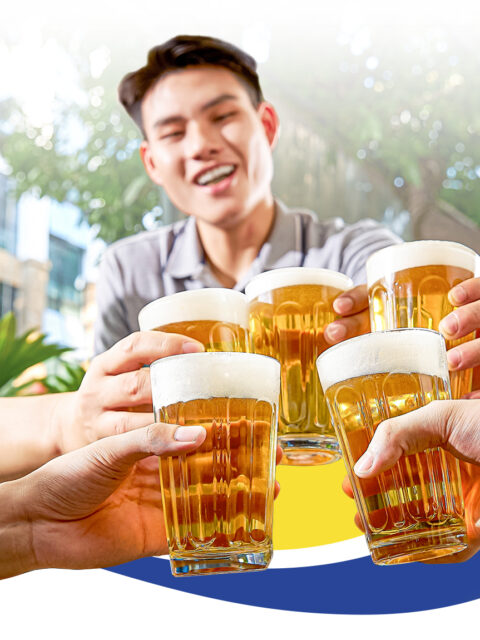
Savor The Flavors | Exploring The Diversity Of Vietnamese Beer

Joyful Celebrations | Unwrapping Christmas In Vietnam

Discover Paradise | A Guide To The Best Phu Quoc Hotels

Unwind In Style | Discovering The Best Bars In Da Nang
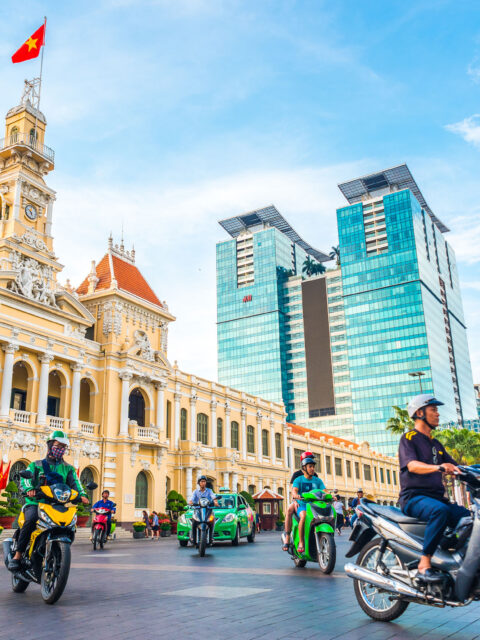
Beyond The Basics | 15 Extraordinary Things To Do In Saigon

Unveiling The Wonders | Exploring The Ha Giang Loop Adventure
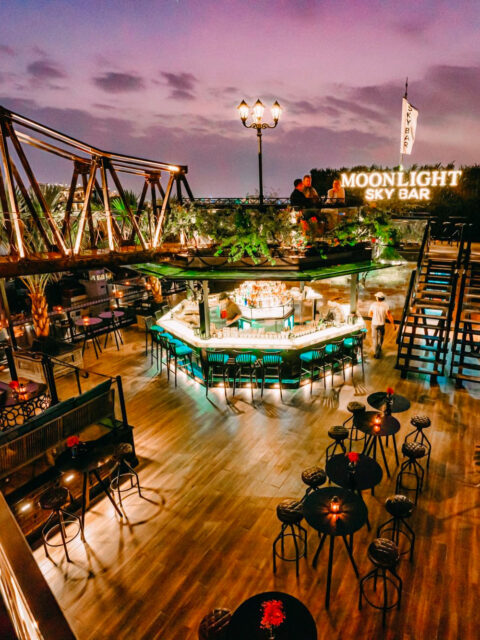
Top 10 Rooftop Bars In Hanoi | Cocktails In The Clouds

Hoi An Market Gems | The Top 6 Must-See Marketplaces

Navigating Ta Hien Beer Street | Hanoi’s Best-Kept Secret

Top 10 Vietnamese Street Food Picks | Taste Of Authenticity

Vietnam Boosts Tourism with Visa-Free Travel for 51 Countries
I n an exciting move to fortify its position as a top travel destination, Vietnam has announced visa-free travel for citizens of 51 countries. This strategic initiative aims to attract more tourists, stimulate the economy, and showcase Vietnam’s rich cultural and natural beauty to the global audience.
Why Visa-Free Travel is a Game-Changer for Vietnam
The decision to allow visa-free entry into Vietnam for citizens from 51 countries is a pivotal moment in the country’s tourism strategy. These are some of the key benefits:
- Increased Tourist Arrivals: Simplified entry procedures are expected to attract a significant rise in tourist numbers.
- Economic Boost: More tourists mean increased spending, which can stimulate various sectors such as hospitality, retail, and transportation.
- Global Appeal: By becoming more accessible, Vietnam can enhance its image as a welcoming and tourist-friendly destination.
The List of Visa-Free Countries
Vietnam has extended visa-free travel to a diverse range of countries, ensuring a broad spectrum of demographics and cultures can explore the nation. Some of the notable countries included are:
- South Korea
- United Kingdom
- New Zealand
For the full list of countries, travelers are encouraged to visit the official Vietnamese immigration website.
Attractions Awaiting Visa-Free Tourists
With easier access, tourists from the aforementioned countries can now dive into the rich tapestry of experiences that Vietnam offers. Here are some of the must-visit attractions and experiences:
Natural Wonders
- Ha Long Bay: Known for its emerald waters and limestone karsts, Ha Long Bay is a UNESCO World Heritage Site that leaves visitors spellbound.
- Phong Nha-Ke Bang National Park: Home to some of the world’s largest caves, this park is a paradise for adventure seekers.
- Mekong Delta: This lush, green region offers a unique glimpse into traditional Vietnamese life, with its network of rivers, swamps, and islands.
Historical and Cultural Sites
- Hanoi Old Quarter: This bustling area of the capital city is rich in history and culture, with its narrow streets and historic buildings.
- Imperial City of Hue: A former capital of Vietnam, Hue is renowned for its historic monuments and architecture.
- Hoi An Ancient Town: Known for its well-preserved architecture, this charming town offers a blend of different cultures and eras.
Modern Amenities and Experiences
- Da Nang: A coastal city that’s increasingly known for its modern amenities and beautiful beaches.
- Ho Chi Minh City: The economic hub of Vietnam, bustling with activities, shopping centers, and modern lifestyle options.
- Sa Pa: Located in northern Vietnam, Sa Pa is famous for its terraced fields and ethnic minority villages.
Implications for Industry Stakeholders
This move is not just a win for tourists but also for various stakeholders in Vietnam’s tourism industry. Here’s how different sectors stand to benefit:
Hospitality Sector
Hotels, resorts, and homestays are likely to see increased bookings. To capitalize on this influx, many establishments are already gearing up with:
- Enhanced facilities
- Attractive packages
- Personalized services
Local Businesses
From restaurants to retail outlets, local businesses can anticipate more foot traffic and spending. This will not only boost profits but also provide opportunities for:
- Job creation
- Improved services
Government and Infrastructure
Increased tourism will necessitate advancements in infrastructure and public services. The government is expected to invest in:
- Improving transportation networks
- Enhancing public amenities
- Ensuring tourist safety and security
Final Thoughts
Vietnam’s decision to offer visa-free travel to 51 countries is a monumental step in bolstering its tourism sector. As more travelers flock to this captivating nation, the ripple effects are predicted to benefit not just the economy but also the cultural exchange and global perception of Vietnam. With a plethora of attractions, rich history, and modern amenities, Vietnam is poised to become a must-visit destination for tourists worldwide.
Stay tuned for more updates and travel tips as this exciting development unfolds!
You are using an outdated browser. Upgrade your browser today or install Google Chrome Frame to better experience this site.
Vietnam Traveler View
Travel health notices, vaccines and medicines, non-vaccine-preventable diseases, stay healthy and safe.
- Packing List
After Your Trip
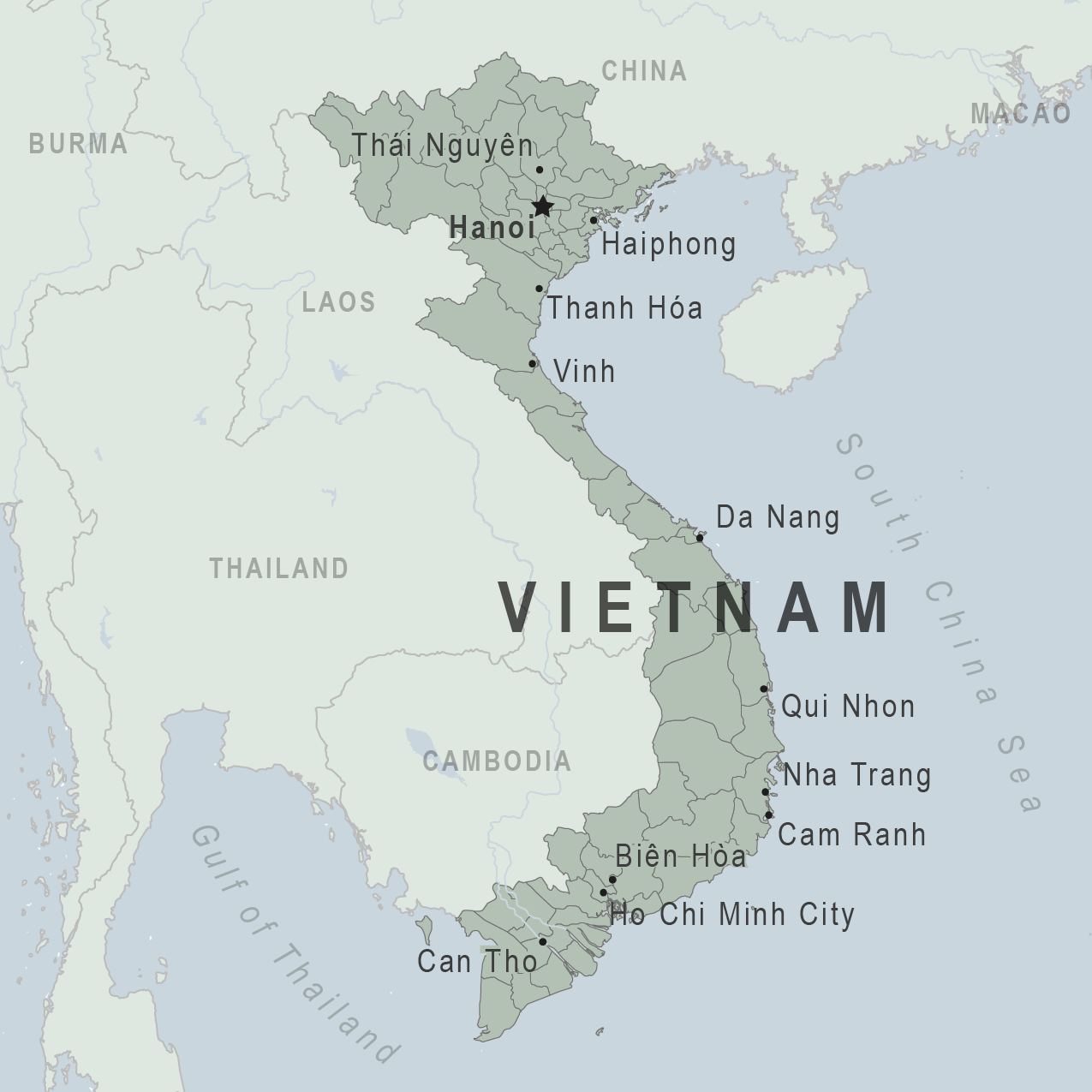
There are no notices currently in effect for Vietnam.
⇧ Top
Check the vaccines and medicines list and visit your doctor at least a month before your trip to get vaccines or medicines you may need. If you or your doctor need help finding a location that provides certain vaccines or medicines, visit the Find a Clinic page.
Routine vaccines
Recommendations.
Make sure you are up-to-date on all routine vaccines before every trip. Some of these vaccines include
- Chickenpox (Varicella)
- Diphtheria-Tetanus-Pertussis
- Flu (influenza)
- Measles-Mumps-Rubella (MMR)
Immunization schedules
All eligible travelers should be up to date with their COVID-19 vaccines. Please see Your COVID-19 Vaccination for more information.
COVID-19 vaccine
Chikungunya
There has been evidence of chikungunya virus transmission in Vietnam within the last 5 years. Chikungunya vaccination may be considered for the following travelers:
- People aged 65 years or older, especially those with underlying medical conditions, who may spend at least 2 weeks (cumulative time) in indoor or outdoor areas where mosquitoes are present in Vietnam, OR
- People planning to stay in Vietnam for a cumulative period of 6 months or more
Chikungunya - CDC Yellow Book
Hepatitis A
Recommended for unvaccinated travelers one year old or older going to Vietnam.
Infants 6 to 11 months old should also be vaccinated against Hepatitis A. The dose does not count toward the routine 2-dose series.
Travelers allergic to a vaccine component should receive a single dose of immune globulin, which provides effective protection for up to 2 months depending on dosage given.
Unvaccinated travelers who are over 40 years old, immunocompromised, or have chronic medical conditions planning to depart to a risk area in less than 2 weeks should get the initial dose of vaccine and at the same appointment receive immune globulin.
Hepatitis A - CDC Yellow Book
Dosing info - Hep A
Hepatitis B
Recommended for unvaccinated travelers of all ages traveling to Vietnam.
Hepatitis B - CDC Yellow Book
Dosing info - Hep B
Japanese Encephalitis
Recommended for travelers who
- Are moving to an area with Japanese encephalitis to live
- Spend long periods of time, such as a month or more, in areas with Japanese encephalitis
- Frequently travel to areas with Japanese encephalitis
Consider vaccination for travelers
- Spending less than a month in areas with Japanese encephalitis but will be doing activities that increase risk of infection, such as visiting rural areas, hiking or camping, or staying in places without air conditioning, screens, or bed nets
- Going to areas with Japanese encephalitis who are uncertain of their activities or how long they will be there
Not recommended for travelers planning short-term travel to urban areas or travel to areas with no clear Japanese encephalitis season.
Japanese encephalitis - CDC Yellow Book
Japanese Encephalitis Vaccine for US Children
CDC recommends that travelers going to certain areas of Vietnam take prescription medicine to prevent malaria. Depending on the medicine you take, you will need to start taking this medicine multiple days before your trip, as well as during and after your trip. Talk to your doctor about which malaria medication you should take.
Find country-specific information about malaria.
Malaria - CDC Yellow Book
Considerations when choosing a drug for malaria prophylaxis (CDC Yellow Book)
Malaria information for Vietnam.
Cases of measles are on the rise worldwide. Travelers are at risk of measles if they have not been fully vaccinated at least two weeks prior to departure, or have not had measles in the past, and travel internationally to areas where measles is spreading.
All international travelers should be fully vaccinated against measles with the measles-mumps-rubella (MMR) vaccine, including an early dose for infants 6–11 months, according to CDC’s measles vaccination recommendations for international travel .
Measles (Rubeola) - CDC Yellow Book
Dogs infected with rabies are sometimes found in Vietnam.
If rabies exposures occur while in Vietnam, rabies vaccines are typically available throughout most of the country.
Rabies pre-exposure vaccination considerations include whether travelers 1) will be performing occupational or recreational activities that increase risk for exposure to potentially rabid animals and 2) might have difficulty getting prompt access to safe post-exposure prophylaxis.
Please consult with a healthcare provider to determine whether you should receive pre-exposure vaccination before travel.
For more information, see country rabies status assessments .
Rabies - CDC Yellow Book
Recommended for most travelers, especially those staying with friends or relatives or visiting smaller cities or rural areas.
Typhoid - CDC Yellow Book
Dosing info - Typhoid
- Avoid contaminated water
Leptospirosis
How most people get sick (most common modes of transmission)
- Touching urine or other body fluids from an animal infected with leptospirosis
- Swimming or wading in urine-contaminated fresh water, or contact with urine-contaminated mud
- Drinking water or eating food contaminated with animal urine
- Avoid contaminated water and soil
- Avoid floodwater
Clinical Guidance
Schistosomiasis
- Wading, swimming, bathing, or washing in contaminated freshwater streams, rivers, ponds, lakes, or untreated pools.
Avoid bug bites
- Mosquito bite
- Avoid Bug Bites
- Mosquito bite
- An infected pregnant woman can spread it to her unborn baby
Airborne & droplet
Avian/bird flu.
- Being around, touching, or working with infected poultry, such as visiting poultry farms or live-animal markets
- Avoid domestic and wild poultry
- Breathing in air or accidentally eating food contaminated with the urine, droppings, or saliva of infected rodents
- Bite from an infected rodent
- Less commonly, being around someone sick with hantavirus (only occurs with Andes virus)
- Avoid rodents and areas where they live
- Avoid sick people
Tuberculosis (TB)
- Breathe in TB bacteria that is in the air from an infected and contagious person coughing, speaking, or singing.
Learn actions you can take to stay healthy and safe on your trip. Vaccines cannot protect you from many diseases in Vietnam, so your behaviors are important.
Eat and drink safely
Food and water standards around the world vary based on the destination. Standards may also differ within a country and risk may change depending on activity type (e.g., hiking versus business trip). You can learn more about safe food and drink choices when traveling by accessing the resources below.
- Choose Safe Food and Drinks When Traveling
- Water Treatment Options When Hiking, Camping or Traveling
- Global Water, Sanitation and Hygiene (WASH)
- Avoid Contaminated Water During Travel
You can also visit the Department of State Country Information Pages for additional information about food and water safety.
Prevent bug bites
Bugs (like mosquitoes, ticks, and fleas) can spread a number of diseases in Vietnam. Many of these diseases cannot be prevented with a vaccine or medicine. You can reduce your risk by taking steps to prevent bug bites.
What can I do to prevent bug bites?
- Cover exposed skin by wearing long-sleeved shirts, long pants, and hats.
- Use an appropriate insect repellent (see below).
- Use permethrin-treated clothing and gear (such as boots, pants, socks, and tents). Do not use permethrin directly on skin.
- Stay and sleep in air-conditioned or screened rooms.
- Use a bed net if the area where you are sleeping is exposed to the outdoors.
What type of insect repellent should I use?
- FOR PROTECTION AGAINST TICKS AND MOSQUITOES: Use a repellent that contains 20% or more DEET for protection that lasts up to several hours.
- Picaridin (also known as KBR 3023, Bayrepel, and icaridin)
- Oil of lemon eucalyptus (OLE) or para-menthane-diol (PMD)
- 2-undecanone
- Always use insect repellent as directed.
What should I do if I am bitten by bugs?
- Avoid scratching bug bites, and apply hydrocortisone cream or calamine lotion to reduce the itching.
- Check your entire body for ticks after outdoor activity. Be sure to remove ticks properly.
What can I do to avoid bed bugs?
Although bed bugs do not carry disease, they are an annoyance. See our information page about avoiding bug bites for some easy tips to avoid them. For more information on bed bugs, see Bed Bugs .
For more detailed information on avoiding bug bites, see Avoid Bug Bites .
Some diseases in Vietnam—such as dengue, Zika, and filariasis—are spread by bugs and cannot be prevented with a vaccine. Follow the insect avoidance measures described above to prevent these and other illnesses.
Stay safe outdoors
If your travel plans in Vietnam include outdoor activities, take these steps to stay safe and healthy during your trip.
- Stay alert to changing weather conditions and adjust your plans if conditions become unsafe.
- Prepare for activities by wearing the right clothes and packing protective items, such as bug spray, sunscreen, and a basic first aid kit.
- Consider learning basic first aid and CPR before travel. Bring a travel health kit with items appropriate for your activities.
- If you are outside for many hours in heat, eat salty snacks and drink water to stay hydrated and replace salt lost through sweating.
- Protect yourself from UV radiation : use sunscreen with an SPF of at least 15, wear protective clothing, and seek shade during the hottest time of day (10 a.m.–4 p.m.).
- Be especially careful during summer months and at high elevation. Because sunlight reflects off snow, sand, and water, sun exposure may be increased during activities like skiing, swimming, and sailing.
- Very cold temperatures can be dangerous. Dress in layers and cover heads, hands, and feet properly if you are visiting a cold location.
Stay safe around water
- Swim only in designated swimming areas. Obey lifeguards and warning flags on beaches.
- Practice safe boating—follow all boating safety laws, do not drink alcohol if driving a boat, and always wear a life jacket.
- Do not dive into shallow water.
- Do not swim in freshwater in developing areas or where sanitation is poor.
- Avoid swallowing water when swimming. Untreated water can carry germs that make you sick.
- To prevent infections, wear shoes on beaches where there may be animal waste.
Leptospirosis, a bacterial infection that can be spread in fresh water, is found in Vietnam. Avoid swimming in fresh, unchlorinated water, such as lakes, ponds, or rivers.
Keep away from animals
Most animals avoid people, but they may attack if they feel threatened, are protecting their young or territory, or if they are injured or ill. Animal bites and scratches can lead to serious diseases such as rabies.
Follow these tips to protect yourself:
- Do not touch or feed any animals you do not know.
- Do not allow animals to lick open wounds, and do not get animal saliva in your eyes or mouth.
- Avoid rodents and their urine and feces.
- Traveling pets should be supervised closely and not allowed to come in contact with local animals.
- If you wake in a room with a bat, seek medical care immediately. Bat bites may be hard to see.
All animals can pose a threat, but be extra careful around dogs, bats, monkeys, sea animals such as jellyfish, and snakes. If you are bitten or scratched by an animal, immediately:
- Wash the wound with soap and clean water.
- Go to a doctor right away.
- Tell your doctor about your injury when you get back to the United States.
Consider buying medical evacuation insurance. Rabies is a deadly disease that must be treated quickly, and treatment may not be available in some countries.
Reduce your exposure to germs
Follow these tips to avoid getting sick or spreading illness to others while traveling:
- Wash your hands often, especially before eating.
- If soap and water aren’t available, clean hands with hand sanitizer (containing at least 60% alcohol).
- Don’t touch your eyes, nose, or mouth. If you need to touch your face, make sure your hands are clean.
- Cover your mouth and nose with a tissue or your sleeve (not your hands) when coughing or sneezing.
- Try to avoid contact with people who are sick.
- If you are sick, stay home or in your hotel room, unless you need medical care.
Avoid sharing body fluids
Diseases can be spread through body fluids, such as saliva, blood, vomit, and semen.
Protect yourself:
- Use latex condoms correctly.
- Do not inject drugs.
- Limit alcohol consumption. People take more risks when intoxicated.
- Do not share needles or any devices that can break the skin. That includes needles for tattoos, piercings, and acupuncture.
- If you receive medical or dental care, make sure the equipment is disinfected or sanitized.
Know how to get medical care while traveling
Plan for how you will get health care during your trip, should the need arise:
- Carry a list of local doctors and hospitals at your destination.
- Review your health insurance plan to determine what medical services it would cover during your trip. Consider purchasing travel health and medical evacuation insurance.
- Carry a card that identifies, in the local language, your blood type, chronic conditions or serious allergies, and the generic names of any medications you take.
- Some prescription drugs may be illegal in other countries. Call Vietnam’s embassy to verify that all of your prescription(s) are legal to bring with you.
- Bring all the medicines (including over-the-counter medicines) you think you might need during your trip, including extra in case of travel delays. Ask your doctor to help you get prescriptions filled early if you need to.
Many foreign hospitals and clinics are accredited by the Joint Commission International. A list of accredited facilities is available at their website ( www.jointcommissioninternational.org ).
In some countries, medicine (prescription and over-the-counter) may be substandard or counterfeit. Bring the medicines you will need from the United States to avoid having to buy them at your destination.
Malaria is a risk in some parts of Vietnam. If you are going to a risk area, fill your malaria prescription before you leave, and take enough with you for the entire length of your trip. Follow your doctor’s instructions for taking the pills; some need to be started before you leave.
Select safe transportation
Motor vehicle crashes are the #1 killer of healthy US citizens in foreign countries.
In many places cars, buses, large trucks, rickshaws, bikes, people on foot, and even animals share the same lanes of traffic, increasing the risk for crashes.
Be smart when you are traveling on foot.
- Use sidewalks and marked crosswalks.
- Pay attention to the traffic around you, especially in crowded areas.
- Remember, people on foot do not always have the right of way in other countries.
Riding/Driving
Choose a safe vehicle.
- Choose official taxis or public transportation, such as trains and buses.
- Ride only in cars that have seatbelts.
- Avoid overcrowded, overloaded, top-heavy buses and minivans.
- Avoid riding on motorcycles or motorbikes, especially motorbike taxis. (Many crashes are caused by inexperienced motorbike drivers.)
- Choose newer vehicles—they may have more safety features, such as airbags, and be more reliable.
- Choose larger vehicles, which may provide more protection in crashes.
Think about the driver.
- Do not drive after drinking alcohol or ride with someone who has been drinking.
- Consider hiring a licensed, trained driver familiar with the area.
- Arrange payment before departing.
Follow basic safety tips.
- Wear a seatbelt at all times.
- Sit in the back seat of cars and taxis.
- When on motorbikes or bicycles, always wear a helmet. (Bring a helmet from home, if needed.)
- Avoid driving at night; street lighting in certain parts of Vietnam may be poor.
- Do not use a cell phone or text while driving (illegal in many countries).
- Travel during daylight hours only, especially in rural areas.
- If you choose to drive a vehicle in Vietnam, learn the local traffic laws and have the proper paperwork.
- Get any driving permits and insurance you may need. Get an International Driving Permit (IDP). Carry the IDP and a US-issued driver's license at all times.
- Check with your auto insurance policy's international coverage, and get more coverage if needed. Make sure you have liability insurance.
- Avoid using local, unscheduled aircraft.
- If possible, fly on larger planes (more than 30 seats); larger airplanes are more likely to have regular safety inspections.
- Try to schedule flights during daylight hours and in good weather.
Medical Evacuation Insurance
If you are seriously injured, emergency care may not be available or may not meet US standards. Trauma care centers are uncommon outside urban areas. Having medical evacuation insurance can be helpful for these reasons.
Helpful Resources
Road Safety Overseas (Information from the US Department of State): Includes tips on driving in other countries, International Driving Permits, auto insurance, and other resources.
The Association for International Road Travel has country-specific Road Travel Reports available for most countries for a minimal fee.
For information traffic safety and road conditions in Vietnam, see Travel and Transportation on US Department of State's country-specific information for Vietnam .
Maintain personal security
Use the same common sense traveling overseas that you would at home, and always stay alert and aware of your surroundings.
Before you leave
- Research your destination(s), including local laws, customs, and culture.
- Monitor travel advisories and alerts and read travel tips from the US Department of State.
- Enroll in the Smart Traveler Enrollment Program (STEP) .
- Leave a copy of your itinerary, contact information, credit cards, and passport with someone at home.
- Pack as light as possible, and leave at home any item you could not replace.
While at your destination(s)
- Carry contact information for the nearest US embassy or consulate .
- Carry a photocopy of your passport and entry stamp; leave the actual passport securely in your hotel.
- Follow all local laws and social customs.
- Do not wear expensive clothing or jewelry.
- Always keep hotel doors locked, and store valuables in secure areas.
- If possible, choose hotel rooms between the 2nd and 6th floors.
To call for emergency services while in Vietnam, dial 115 for an ambulance, 114 for the fire department, and 113 for the police. Write these numbers down to carry with you on your trip.
Learn as much as you can about Vietnam before you travel there. A good place to start is the country-specific information on Vietnam from the US Department of State
Healthy Travel Packing List
Use the Healthy Travel Packing List for Vietnam for a list of health-related items to consider packing for your trip. Talk to your doctor about which items are most important for you.
Why does CDC recommend packing these health-related items?
It’s best to be prepared to prevent and treat common illnesses and injuries. Some supplies and medicines may be difficult to find at your destination, may have different names, or may have different ingredients than what you normally use.
If you are not feeling well after your trip, you may need to see a doctor. If you need help finding a travel medicine specialist, see Find a Clinic . Be sure to tell your doctor about your travel, including where you went and what you did on your trip. Also tell your doctor if you were bitten or scratched by an animal while traveling.
If your doctor prescribed antimalarial medicine for your trip, keep taking the rest of your pills after you return home. If you stop taking your medicine too soon, you could still get sick.
Malaria is always a serious disease and may be a deadly illness. If you become ill with a fever either while traveling in a malaria-risk area or after you return home (for up to 1 year), you should seek immediate medical attention and should tell the doctor about your travel history.
For more information on what to do if you are sick after your trip, see Getting Sick after Travel .
Map Disclaimer - The boundaries and names shown and the designations used on maps do not imply the expression of any opinion whatsoever on the part of the Centers for Disease Control and Prevention concerning the legal status of any country, territory, city or area or of its authorities, or concerning the delimitation of its frontiers or boundaries. Approximate border lines for which there may not yet be full agreement are generally marked.
Other Destinations
If you need help finding travel information:
Message & data rates may apply. CDC Privacy Policy
File Formats Help:
- Adobe PDF file
- Microsoft PowerPoint file
- Microsoft Word file
- Microsoft Excel file
- Audio/Video file
- Apple Quicktime file
- RealPlayer file
- Zip Archive file

IMAGES
COMMENTS
Volunteer in Vietnam: find amazing programs in hostels, schools, NGOs, ecovillages and more. 154 opportunities found. Private School TP Vũng tàu, Vietnam. Teach English to our children in Vietnam! :) 22h/week Teaching Languages. At least 1 day Shared Dorm 3 meals.
Live fully in Vietnam. Vietnam opens its door widely to welcome visitors all around the world! Starting from 15th August 2023, Vietnam extends e-visa validity to 90 days and unilateral visa exemption will be valid in 45 days! We are more than happy to welcome you all here and admire our stunning landscapes, free your soul on white sandy beaches ...
1-Week Vietnam Travel Itinerary Highlights. Most people spend at least a month went hey travel to Vietnam. But if you had just one week, or were willing to split a few weeks between the northern and southern regions, this is how we'd spend our time! Northern Vietnam. Fly into Hanoi; 2 nights - Hanoi; 2 nights - Halong Bay or Bai Tu Long Bay
Wherever we travel, it's the flavors we remember best. A crusty bánh mì or streetside pho, seafood cù lao hotpots and (scarily addictive) coffee with condensed milk. Vietnam tours are tasty, plain and simple. We won't just drop you in Halong Bay and call it a day. Our local leaders will introduce you to rice farmers in Sapa and fishermen on the Mekong Delta. They'll guide you through ...
They also offer a week extension; for a small fee, you can spend a week either before or after your volunteer work sightseeing around Vietnam, complete with cooking classes, language instruction, and a traditional water puppet show. 8. Volunteer in Friendship Village with Volunteer World —8.60 rating.
Vietnam Travel Guide. Last Updated: April 29, 2024. From the stunning views of Sam Mountain and Ha Long Bay to the man-made artistry of the sacred temples and pagodas to the rice terraces and beaches, Vietnam is stunning. There's no denying that backpacking Vietnam (or simply traveling here on a vacation) is an experience filled with natural ...
Ba Be National Park (Near Sapa) Bach Ma National Park (between Dan Nang and Hue) Dong Ha - for DMZ tour (Between Dong Hoi and Da Nang) 2 Week Vietnam Itinerary - 1 Week in the South. Day 1 - Nha Trang. Day 2 - Dalat. Day 3 - Mui Ne. Day 4 and 5 - Ho Chi Minh City. Day 6 and 7 - Phu Quoc Island.
This is your ultimate guide to exploring the Southeast Asian country that truly has it all. Julie. Jun 12, 2023. 17min. Explore the world. Asia & Oceania. Vietnam is a country rich in history, culture, and delicious, exotic food . While a hot destination for thrill-seekers and explorers, it also offers plenty to those a tad less adventurous.
Volunteering in Vietnam offers volunteers the opportunity to trek the dense jungles and stretching coasts, explore beautiful Halong Bay, and travel the Mekong Delta by boat. Vietnam is probably best known for the well documented Vietnam War, from 1955 to 1975, which left Vietnam politically divided into two separate parts. Though the aftermath ...
1. Pack for the climate. Perhaps the most important consideration when planning a trip to Vietnam is the weather. The south of the country sits firmly in the humid tropics, but the climate becomes increasingly temperate as you head north, and the highlands around Sapa can be downright chilly in winter. If you plan to visit both halves of the ...
Here you will find 4 last minute opportunities for volunteering in Vietnam from Hosts that have indicated that they require help immediately. Last minute. Vietnam. Help in the mountains where tea grows wild and is harvested by the local people, Ha Giang Province, Vietnam. (22) Last minute.
By considering these Vietnam travel tips, you can tailor your travel to Vietnam to your preferences and ensure an unforgettable experience. ... It is an opportunity to go deep into the rugged and untouched nature of Vietnam. VND 8,100,000/pax. 3 Day · Level 3 · Moderate Hang Tien Endeavor. This is a challenging trek to visit Hang Tien 1 & 2 ...
3. Ha Long Bay. Landscape with amazing Halong bay, Vietnam. Ha Long, a UNESCO World Heritage Site, is a place of mystical beauty, a myriad of limestone karsts and blue waters. Legend has it that this is the place where dragons decided to descend to rest, as 'ha' means to descend in Vietnamese, and 'long' is dragon.
Q: Is Vietnam cheap to travel? Vietnam is a very budget-friendly destination! Like many places in Southeast Asia, your money will go far in Vietnam. A typical backpacker budget is around $30 a day, while a mid-range traveler may want to budget $60-$75 a day. If you're on a budget while traveling Asia, definitely add Vietnam to your itinerary.
Day 7: Explore Da Nang on Your 2 Week Vietnam Itinerary. Da Nang beach, just outside the city. There are lots of places to explore in Da Nang from the bustling city to some incredible bridges to lush green forests and hilltop views. The Ba Na Hill Mountain Resort is a stunning place to visit outside of the city.
The Perfect 2-Week Vietnam Itinerary. Our Vietnam travel itinerary will show you how to tackle this amazing country, ensuring that you see the best places to visit in Vietnam. The itinerary begins in the country's north with Hanoi and works its way south to Ho Chi Minh City, but the reverse works just as well.
Vietnam has three major airlines, namely Vietnam Airlines, Vietjet Air, and Bamboo Airways, providing extensive coverage to numerous domestic airports across the country, totaling around 21 airports. 2. Bus travel. Bus travel in Vietnam is a popular and extensive mode of transportation, with a network that connects every corner of the country.
Let's talk about socially responsible travel in Vietnam, as well as the greater opportunities in Southeast Asia. This topic has many layers. From volunteering to donating to beggars to choosing ethical activities. It's a complex situation. Animal tourism has a dark side, and responsible travelers should research alternatives.
The Best Places to Travel for Your First Time in Vietnam. Embarking on your first journey through Vietnam is like stepping into a vivid painting, where the landscapes shift from towering northern mountains to sun-soaked southern beaches.One of the most valuable Vietnam travel tips: Immerse yourself in the energy of at least one bustling city to truly feel the pulse of daily life in Vietnam.
The island offers excellent opportunities for snorkeling and diving, especially around the An Thoi Archipelago. Explore the local night market for fresh seafood and unique souvenirs. ... If you like these Vietnam travel tips, follow Worldpackers social media to keep up with the news: we are on Instagram, Tiktok and YouTube! Join the community!
Join a tour that gives you the opportunity to crawl through the tunnels yourself for a true-to-life experience. Getting from Mui Ne to Ho Chi Minh. Bus: 5-6 hours. Train: ... Costs of Traveling in Vietnam. Travel on a budget in Vietnam, from $110 − $240 USD weekly per person, mid-range $280 − $830 USD, and high-end from $750 − $1250 USD ...
Check out the best hassle-free Vietnam visa service! 1. Immerse yourself in the vibrant streets of Hanoi Old Quarter. 2. Cruise Through Halong Bay - Top Things To Do In Vietnam. 3. Discover The Wonders Of Lan Ha Bay & Bai Tu Long Bay. 4. Take A Trip To Cat Ba Island.
Why Visa-Free Travel is a Game-Changer for Vietnam. The decision to allow visa-free entry into Vietnam for citizens from 51 countries is a pivotal moment in the country's tourism strategy.
If your travel plans in Vietnam include outdoor activities, take these steps to stay safe and healthy during your trip. Stay alert to changing weather conditions and adjust your plans if conditions become unsafe. Prepare for activities by wearing the right clothes and packing protective items, such as bug spray, sunscreen, and a basic first aid ...